Category: Rights Issues
Ninth Schedule
20, Apr 2023

Why in News?
- Recently, the Chhattisgarh Chief Minister wrote to the Prime Minister seeking the inclusion of two amendment Bills allowing for a higher quota of reservation in jobs and educational institutions, in the Ninth Schedule of the Constitution.
What are these Bills?
- In Chhattisgarh, the State Assembly unanimously approved the two amendment bills, creating a 76% quota for members of the Scheduled Caste, Scheduled Tribes, and Other Backward Classes.
- The Governor has not yet approved the bills.
Why is there a Need to include these Bills in Ninth Schedule?
- The Ninth Schedule of the Constitution includes a list of Central and State laws that cannot be challenged in courts.
- Including the two amendment Bills in the Ninth Schedule would make them immune to legal challenges.
- Chhattisgarh government argues that including the amended provisions in the Ninth Schedule is crucial for providing justice to the backward and deprived classes in the State.
- Previously, the Chhattisgarh High Court had struck down a government order allowing 58% quota, stating that the reservation cannot exceed 50% as it unconstitutional.
- However, two amendment Bills were passed by the State Assembly to provide 76% quota for Scheduled Caste, Scheduled Tribes, and Other Backward Classes.
What is the Ninth Schedule?
- The Schedule contains a list of central and state laws which cannot be challenged in courts and was added by the Constitution (First Amendment) Act, 1951.
- The first Amendment added 13 laws to the Schedule. Subsequent amendments in various years have taken the number of protected laws to 284 currently.
- It was created by the new Article 31B, which along with Article 31A was brought in by the government to protect laws related to agrarian reform and for abolishing the Zamindari system.
- While Article 31A extends protection to ‘classes’ of laws, Article 31B shields specific laws or enactments.
- While most of the laws protected under the Schedule concern agriculture/land issues, the list includes other subjects.
- Article 31B also has a retrospective operation which means that if laws are inserted in the Ninth Schedule after they are declared unconstitutional, they are considered to have been in the Schedule since their commencement, and thus valid.
- Although Article 31B excludes judicial review, the apex court has said in the past that even laws under the Ninth Schedule would be open to scrutiny if they violated Fundamental Rights or the basic structure of the Constitution.
Are Laws in the Ninth Schedule completely Exempt from Judicial Scrutiny?
- Keshavananda Bharati v. State of Kerala (1973): The court upheld the judgement in Golaknath and introduced a new concept of “Basic structure of the Indian Constitution” and stated that, “all provisions of the constitution can be amended but those amendments which will abrogate or take away the essence or basic structure of constitution which included Fundamental Rights are fit to be struck down by the court”.
- Waman Rao v. Union of India (1981): In this important judgement, the SC ruled that, “those amendments which were made in the constitution before 24th April 1973 (date on which judgement in Keshavananda Bharati was delivered) are valid and constitutional but those which were made after the stated date are open to being challenged on the ground of constitutionality.
- I R Coelho v. State of Tamil Nadu (2007): It was held that every law must be tested under Article 14, 19 and 21 if it came into force after 24th April 1973.
- In addition, the court upheld its previous rulings and declared that any act can be challenged and is open to scrutiny by the judiciary if it is not in consonance with the basic structure of the constitution.
- In addition, it was held that if the constitutional validity of any law under the ninth schedule has been upheld before, in future it cannot be challenged again.
Way Forward:
- Although reservation is necessary, it should also be open to judicial scrutiny in order to ensure any abrupt or irrational policy initiative by the Executive or the Legislature.
- Any loophole or shortcomings in reservation policy must be addressed by involving various stakeholders.
- The need of the hour is not to go to extremes of either scrapping or shielding reservation policy, rather a rational framework on this contentious policy must be developed.
EWS quota is ‘economic justice’ and not ‘social justice’, says TN CM Stalin
05, Apr 2023
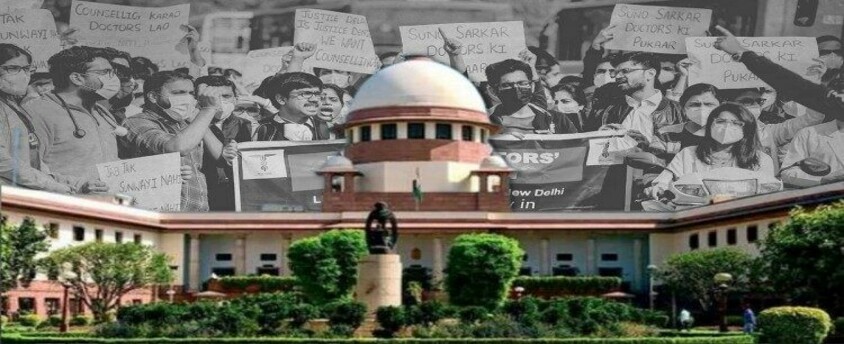
Why in News?
- Bringing together leaders of different political parties on a virtual platform, DMK president and Tamil Nadu Chief Minister M.K. Stalin strongly opposed the 10% reservation for Economically Weaker Sections (EWS) among the Open Competition category.
Background of the issue:
- The Supreme Court had referred the EWS quota case to the Constitution Bench in August 2020.
- The petitions in this issue raise a “substantial question of law” as to whether grant of 10% reservation violated the 50% ceiling cap on quota declared by the top court itself.
- On whether reservation on the sole basis of economic criteria violated the Basic Structure of the Constitution, one of the Justice took the expansive view that reservation was an “instrument of affirmative action by the state” and should not be confined to just SCs, STs, SEBCs, and the non-creamy layer of OBCs, but also include “any class or sections so disadvantaged as to answer the description of ‘weaker section’”.
- Another Justice noted that “the legislature understands and appreciates the needs of its own people”.
- The three judges in the majority held that reservation on economic criteria alone did not violate the Basic Structure of the Constitution.
- In their minority view, SC held that though quota on the basis of economic deprivation, destitution and poverty was “per se permissible/valid” and even “constitutionally indefeasible”, the “othering” of socially and educationally disadvantaged classes, including the SC/ST/OBC/SEBC communities, on the ground that they already enjoy the benefits of a pre-existing 50% reservation on the basis of their caste and class origins, would amount to heaping injustice based on their past disability.
Who are “Economically Weaker Sections”?
- For the purposes of article 15 and article 16, “economically weaker sections” shall be such as may be notified by the State from time to time on the basis of family income and other indicators of economic disadvantage.’
- Central Government of India has specified certain criteria for identifying the EWS. This will be a class distinct from the already specified classes of SCs, STs and socially and educationally backward classes (OBCs).
- The EWS quota applies to household with
- Annual household income below Rs 8 lakh.
- Agriculture land below 5 acres.
- Residential house below 1000 sq ft.
- Residential plot below 100 yards in notified municipality.
- Residential plot below 200 yards in non-notified municipality area.
What are the Implications?
- The 10% reservation will be in addition to the existing cap of 50% reservation for the Scheduled Castes, Scheduled Tribes and the Other Backward Classes, taking total reservation to 60%.
- The quota targets the poor among the upper castes. This will be over and above 50% mandated by Constitution and hence the need for Constitution amendment Bill.
SC verdict in Indira Sawhney case:
- The proposed law would face roadblocks if challenged in the Supreme Court.
- A nine-judge Constitution Bench of the Supreme Court in the Indira Sawhney case of 1992 specifically answered the question “whether backward classes can be identified only and exclusively with reference to the economic criterion.”
- The constitution bench had categorically ruled that a backward class cannot be determined only and exclusively with reference to economic criterion. The bench had held that economic criterion may be a consideration or basis along with, and in addition to, social backwardness, but it can never be the sole criterion.
- The bench in its judgement declared 50% quota as the rule unless extraordinary situations “inherent in the great diversity of this country and the people” happen. Even then, the court stated that extreme caution is to be exercised and a special case should be made out.
Genetic Information and Privacy
24, Feb 2023

Why in News?
- Recently, the Supreme Court has ruled that children have the right to protect their genetic information from being revealed in Deoxyribonucleic Acid (DNA) Tests without their consent.
About the News:
- The judgment came in a petition filed by a man who questioned his second child’s paternity while accusing his wife of an adulterous relationship.
- The apex court concluded on the facts of the case that no adverse inference could be drawn on the ground that the mother declined to subject the child to a paternity test.
What is the Judgement?
- Genetic information is personal and intimate. It sheds light on a person’s very essence.
- It allows individuals to make informed decisions about their health, privacy, and identity.
- Children have the right to protect their genetic information from DNA testing in divorce proceedings, as it is part of their fundamental right to privacy. This is guaranteed under Article 21 of Indian Constitution.
- It is imperative that children do not become the focal point of the battle between spouses.
- Rights of privacy, autonomy and identity are recognised under the United Nations’ Convention on the Rights of the Child.
- The Convention acknowledges the control that individuals, including children, have over their own personal boundaries and the means by which they define who they are in relation to other people.
- Children are not to be deprived of this entitlement to influence and understand their sense of self simply by virtue of being children.
What is the Status of Genetic Information in India?
Genetic Data and Privacy:
- Genetic data privacy is a term that seeks to prevent a third party or anyone else from using a person’s genetic data without his permission.
- Technological advances have made it easy to extract personal information from DNA samples, violating privacy rights.
- While genetic research holds promise for the future, misapplication can have negative consequences. Due to the significance of genetic data as the blueprint for a person’s physical being, privacy protection is crucial.
Advantages of Genetic Information:
- Genetic information can reveal details about disease, health, and ancestry.
- This knowledge can increase a person’s awareness of their own health, be used in medical research, and enable early intervention for disease prevention.
Disadvantages of Genetic Information:
- Genetic data consists of a person’s DNA and chromosomes and can reveal personal information about health and ancestry. Direct-to-consumer genetic tests are not always reliable and can result in unintended exposure of private information. Unauthorized access to genetic data can result in negative impacts, such as unwelcome responses from employers, insurance providers, and the government, affecting a person’s privacy and life.
Status of Genetic Privacy:
- In 2018, The Delhi High Court ruled against United India Insurance Company’s discrimination in health insurance against a person with a heart disease that was thought to be a genetic disorder.
- Genetic discrimination is a breach of Article 14, which guarantees that everyone is treated fairly under the law.
- The Supreme Court of India unanimously stated that the Right to Privacy is a Fundamental Right under Article 21 in Justice KS Puttaswamy (Retd.) & Anr. v. Union of India.Genetic discrimination is illegal in almost all countries. In 2008, the United States passed the Genetic Information Non-discrimination Act (GINA), a federal law that protects people from genetic discrimination in health care and jobs.
Way Forward:
- From a legal standpoint, there is a need to develop more comprehensive privacy laws and regulations specifically tailored to genetic information.
- It may include stricter requirements for obtaining informed consent for genetic testing and data sharing, as well as penalties for unauthorized access or use of genetic information.
- Technologically, there may be opportunities to enhance privacy protections through advancements in encryption, secure storage, and data sharing protocols.
- For example, homomorphic encryption techniques could be used to allow computation on encrypted genetic data without revealing the underlying information.
- From an Ethical perspective, it will be important to continue to engage in public dialogue and education around the value and risks of genetic testing and data sharing.
- It may involve efforts to promote transparency, openness, and accountability around how genetic data is collected, used, and shared, as well as initiatives to promote equitable access to genetic testing and benefits.
Mizoram Assembly adopts resolution opposing any move to implement UCC
15, Feb 2023
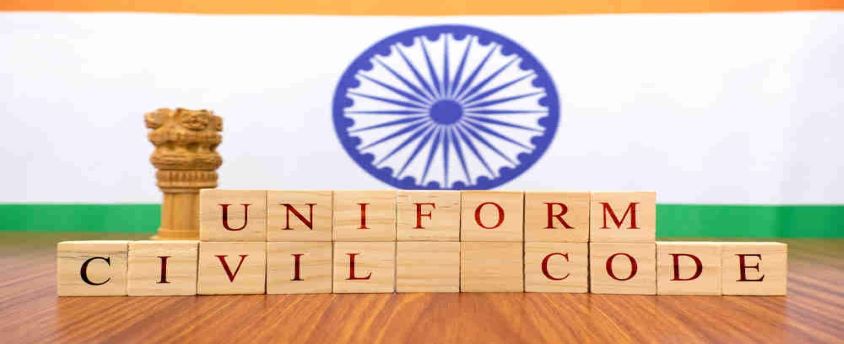
Why in News?
- The Mizoram Assembly has recently unanimously adopted an official resolution opposing any move to implement the Uniform Civil Code (UCC) in the country.
Background:
- The promulgation of the UCC emerges as a positive obligation and not duty of the State under Article 44 of the Constitution in the Directive Principles of State Policy (DPSP).
- Goa’s Portuguese Civil Code of 1867 is an example of a common family law prevalent in a State.
- This to govern matters of divorce, adoption, inheritance, guardianship, succession of all citizens equally regardless of their religion, gender and sexual orientation.
- Several other petitions are also pending before the top court seeking uniform ground and procedures of divorce, adoption and guardianship for all communities across the country.
- The Centre has maintained the issue of UCC falls within the domain of legislature.
What is a Uniform Civil Code?
- A Uniform Civil Code is one that would provide for one law for the entire country, applicable to all religious communities in their personal matters such as marriage, divorce, inheritance, adoption etc.
- Article 44, one of the directive principles of the Constitution lays down that the state shall endeavour to secure a Uniform Civil Code for the citizens throughout the territory of India.
- These, as defined in Article 37, are not justiciable (not enforceable by any court) but the principles laid down therein are fundamental in governance.
What did the SC say?
- The constitution of such committees by the states cannot be challenged for being ultra vires to the Constitution of India, as Article 162 empowers the State to constitute such committees.
- Article 162 of the Constitution states that the executive power of a state shall extend to the matters with respect to which the legislature of the State has power to make laws.
- Also, Entry 5 (Concurrent List) of the 7th schedule of the Constitution gives such power to the states to form a committee.
- It deals with marriage and divorce; infants and minors; adoption; etc.
Role of State in this regard:
- Fundamental rights are enforceable in a court of law.
- While Article 44 uses the words “the state shall endeavour”, other Articles in the ‘Directive Principles’ chapter use words such as “in particular strive”; “shall, in particular, direct its policy”; “shall be the obligation of the state” etc.
- Article 43 mentions “state shall endeavour by suitable legislation” while the phrase “by suitable legislation” is absent in Article 44. All this implies that the duty of the state is greater in other directive principles than in Article 44.
What are more important — fundamental rights or directive principles?
- There is no doubt that fundamental rights are more important.
- The Supreme Court held in Minerva Mills (1980): Indian Constitution is founded on the bedrock of the balance between Parts III (Fundamental Rights) and IV (Directive Principles).
- To give absolute primacy to one over the other is to disturb the harmony of the Constitution.
- Article 31C inserted by the 42nd Amendment in 1976, however, lays down that if a law is made to implement any directive principle, it cannot be challenged on the ground of being violative of the FRs under Articles 14 and 19.
Does India not already have a uniform code in civil matters?
- Indian laws do follow a uniform code in most civil matters – Indian Contract Act, Civil Procedure Code, Sale of Goods Act, Transfer of Property Act, Partnership Act, Evidence Act etc.
- States, however, have made hundreds of amendments and therefore in certain matters, there is diversity even under these secular civil laws.
- Recently, several states refused to be governed by the uniform Motor Vehicles Act, 2019.
What about personal laws?
- If the framers of the Constitution had intended to have a Uniform Civil Code, they would have given exclusive jurisdiction to Parliament in respect of personal laws, by including this subject in the Union List.
- But “personal laws” are mentioned in the Concurrent List.
- Last year, the Law Commission concluded that a Uniform Civil Code is neither feasible nor desirable.
Is there one common personal law for any religious community governing all its members?
- All Hindus of the country are not governed by one law, nor are all Muslims or all Christians. Not only British legal traditions, even those of the Portuguese and the French remain operative in some parts.
- In Jammu and Kashmir until August 5, 2019, local Hindu law statutes differed from central enactments.
- The Shariat Act of 1937 was extended to J&K a few years ago but has now been repealed.
Various customary laws
- Muslims of Kashmir were governed by a customary law, which in many ways was at variance with Muslim Personal Law in the rest of the country and was, in fact, closer to Hindu law.
- Even on the registration of marriage among Muslims, laws differ from place to place. It was compulsory in J&K (1981 Act), and is optional in Bengal, Bihar (both under 1876 Act), Assam (1935 Act) and Odisha (1949 Act).
- In the Northeast, there are more than 200 tribes with their own varied customary laws.
- The Constitution itself protects local customs in Nagaland. Similar protections are enjoyed by Meghalaya and Mizoram.
- Even reformed Hindu law, in spite of codification, protects customary practices.
How does the idea of a Uniform Civil Code relate to the fundamental right to religion?
- Article 25 lays down an individual’s fundamental right to religion;
- Article 26(b) upholds the right of each religious denomination or any section thereof to “manage its own affairs in matters of religion”;
- Article 29 defines the right to conserve distinctive culture.
- An individual’s freedom of religion under Article 25 is subject to “public order, health, morality” and other provisions relating to FRs, but a group’s freedom under Article 26 has not been subjected to other fundamental rights.
- In the Constituent Assembly, there was division on the issue of putting UCC in the fundamental rights chapter. The matter was settled by a vote.
- By a 5:4 majority, the fundamental rights sub-committee headed by Sardar Patel held that the provision was outside the scope of FRs and therefore the UCC was made less important than freedom of religion.
Minority opinion in the Constituent Assembly
- Some members sought to immunize Muslim Personal Law from state regulation.
- Mohammed Ismail, who thrice tried unsuccessfully to get Muslim Personal Law exempted from Article 44, said a secular state should not interfere with the personal law of people.
- B Pocker Saheb said he had received representations against a common civil code from various organisations, including Hindu organisations.
- Hussain Imam questioned whether there could ever be uniformity of personal laws in a diverse country like India.
- B R Ambedkar said, “no government can use its provisions in a way that would force the Muslims to revolt”.
- Alladi Krishnaswami, who was in favour of a UCC, conceded that it would be unwise to enact UCC ignoring strong opposition from any community.
- Gender justice was never discussed in these debates.
How did the debate on a common code for Hindus play out?
- In June 1948, Rajendra Prasad, President of the Constituent Assembly, warned Nehru that to introduce “basic changes” in personal law was to impose “progressive ideas” of a “microscopic minority” on the Hindu community as a whole.
- Others opposed to reforms in Hindu law included Sardar Patel, Pattabhi Sitaramayya, M A Ayyangar, M M Malaviya and Kailash Nath Katju.
- When the debate on the Hindu Code Bill took place in December 1949, 23 of 28 speakers opposed it.
- On September 15, 1951, President Prasad threatened to use his powers of returning the Bill to Parliament or vetoing it. Ambedkar eventually had to resign.
- Nehru agreed to trifurcation of the Code into separate Acts and diluted several provisions.
The limits to free speech in Parliament
14, Feb 2023
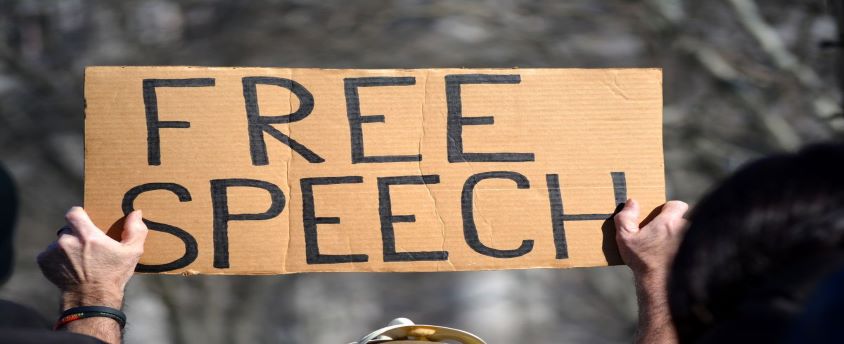
Why in News?
- Some opposition leaders are protesting the removal of parts of their speech on the motion of thanks on the President’s address during the current session of Parliament.
What are the Highlights of Recent Judgement given for Civil Servants?
- A five-judge Constitution bench reserved its verdict on whether restrictions can be imposed on a public functionary’s right to freedom of speech and expression.
- The court observed there is always a civil remedy available to citizens on account of a public functionary making a speech that affects someone.
- The court noted that irrespective of what Article 19(2) may say, there is a constitutional culture in the country where there is an inherent limitation or a restriction on what people holding responsible positions say.
- Article 19 (2) relates to the powers of the State to make laws imposing reasonable restrictions on the exercise of the right to freedom of speech and expression in the interest of sovereignty and integrity of the country, public order, decency, morality etc.
What was the Earlier Judgement?
- In 2017, a three-judge bench had referred to the Constitution bench various issues for adjudication, including whether a public functionary or a minister can claim freedom of speech while expressing views on sensitive matters.
- The need for an authoritative pronouncement on the issue arose as there were arguments that a minister cannot take a personal view and his statements have to be in sync with government policy.
- The court earlier said that it will consider whether the Fundamental Right of Speech and Expression would be governed under reasonable restriction of decency or morality or other preferred fundamental rights would also have an impact on it.
What is the Code of Conduct?
- A code of conduct is a set of rules, standards of behaviour or practices for an individual or organization that guide the decisions, procedures and systems of an organization in a way that contributes to the welfare of its stakeholders.
- For example, the Election Commission of India’s Model Code of Conduct is a set of guidelines issued by the Election Commission of India for conduct of political parties and candidates during elections mainly with respect to speeches, polling day, polling booths, portfolios, election manifestos, processions and general conduct.
- Similarly, a set of codes of rules are prescribed for civil servants with regard to their conduct in performing their duties.
What are the concerns?
- A disconnect between the speeches in the parliamentary record and the publicly available version online.
- It also means that every individual (including MPs) who shared the speech as was delivered by an MP on the floor of the House is in breach of the privilege of Parliament.
What are the Seven Principles of the Code of Conduct for Civil Servants?
- Selflessness: Holders of public office should take decisions solely in terms of the public interest. They should not do so in order to gain financial or other material benefits for themselves, their family, or their friends.
- Integrity: Holders of public office should not place themselves under any financial or other obligation to outside individuals or organisations that might influence them in the performance of their official duties.
- Objectivity: In carrying out public business, including making public appointments, awarding contracts, or recommending individuals for rewards and benefits, holders of public office should make choices on merit.
- Accountability: Holders of public office are accountable for their decisions and actions to the public and must submit themselves to whatever scrutiny is appropriate to their office.
- Openness: Holders of public office should be as open as possible about all the decisions and actions that they take. They should give reasons for their decisions and restrict information only when the wider public interest clearly demands.
- Honesty: Holders of public office have a duty to declare any private interests relating to their public duties and to take steps to resolve any conflicts arising in a way that protects the public interest.
- Leadership: Holders of public office should promote and support these principles by leadership and example.
Way Forward:
- Some of the conclusions have general application across the entire public service which can be added on over and above the seven principles of public service.
- Codes of Conduct: All public bodies should draw up Codes of Conduct incorporating these principles.
- Independent Scrutiny: Internal systems for maintaining standards should be supported by independent scrutiny.
- Education: More needs to be done to promote and reinforce standards of conduct in public bodies, in particular through guidance and training, including induction training.
Internet blocking committee met 53 times in 2022
09, Feb 2023

Why in News?
- The Ministry of Electronics and Information Technology (MeitY) said in a parliamentary response that a committee to consider blocking requests under the Information Technology (Procedure and Safeguards for Blocking for Access of Information for Public) Rules, 2009, met 53 times in 2022.
What is an Internet shutdown?
- Internet shutdowns are measures taken by a government or on behalf of a government, to intentionally disrupt access to and the use of information and communications systems online.
About Anuradha Bhasin case verdict:
- The Court said that all restrictive orders under Section 144 of CrPC and suspension of internet services in Jammu and Kashmir have to be reviewed.
- The verdict has laid down a framework of how the Internet can be suspended, and what rights and legal recourses a citizen has when it is suspended.
- Right to internet is a fundamental right (subject to reasonable restrictions) included in the freedom of expression under Article 19 of the Indian Constitution.
- Restrictions on fundamental rights could not be in exercise of arbitrary powers. These freedoms could only be restricted as a last resort if “relevant factors” have been considered and no other options are there.
- Any order passed to restrict or suspend judicial scrutiny will be subject to judicial scrutiny.
- Suspension of internet services indefinitely is also a violation of telecom rules.
SC on section 144:
- Sec 144 cannot be used to suppress the legitimate expression of opinion or grievance, or the exercise of democratic rights.
- When Sec 144 is imposed for reasons of apprehended danger, that danger must be an “emergency”.
- The imposition of Sec 144 must strike a balance between the rights of the individual and the concerns of the state.
- Powers under Sec 144 should be exercised in a reasonable and bona fide manner, and the order must state material facts in order to enable judicial review.
What procedure does the government follow to suspend Internet services?
- The Information Technology Act, 2000, the Criminal Procedure Code (CrPC), 1973 and the Telegraph Act, 1885 are the three laws that deal with suspension of Internet services.
- But before 2017, Internet suspension orders were issued under section 14 of the CrPC.
- In 2017, the central government notified the Temporary Suspension of Telecom Services (Public Emergency or Public Service) Rules under the Telegraph Act to govern suspension of Internet. These Rules derive their powers from Section 5(2) of the Indian Telegraph Act, which talks about interception of messages in the “interests of the sovereignty and integrity of India”.
- Despite the 2017 rules, the government has often used the broad powers under Section 144.
- India also tops the list of Internet shutdowns globally. According to Software Freedom Law Centre’s tracker, there have been 381 shutdowns since 2012, 106 of which were in 2019.
What did the judgment say on the rules to be followed?
- The court recognised that the 2017 Rules are the only procedure to be followed to suspend Internet services in the occurrence of a “public emergency” or for it to be “in the interest of public safety”.
- The verdict reiterated that the competent authority to issue an order under the Suspension Rules, in ordinary circumstances, would be the Secretary to the Ministry of Home Affairs.
- The Rules also say that in case the confirmation does not come from a competent authority, the orders shall cease to exist within a period of 24 hours.
- Clear reasons for such orders need to be given in writing, and need to be forwarded to a Review Committee by the next working day.
- The confirmation must not be a mere formality, but must indicate independent application of mind by the competent authority to the order passed by the authorised officer, who must also take into account changed circumstances if any, etc.
- According to the Temporary Suspension of Telecom Services [Public Emergency or Public Service] Rules, 2017 only the Home Secretary of the country and a secretary of a state’s home department can pass such an order.
- These also state that any such order should be taken up by a review committee within five days.
OBC sub-categorisation panel gets 14th extension
30, Jan 2023
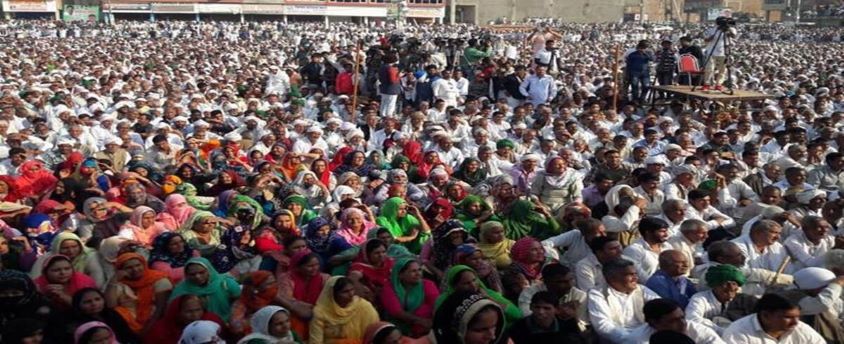
Why in News?
- According to a gazette notification issued by the Union Ministry of Social Justice and Empowerment, the Justice G. Rohini-led commission for the sub-categorisation of other backward classes (OBCs) has now been given yet another extension in its tenure by the President.
About the News:
- This is the 14th extension in tenure that the commission has been given.
- The commission, formed in October 2017, was initially given 12 weeks to finish the task of sub-categorising the nearly 3,000 castes within the OBC umbrella and recommend division of the 27% OBC quota among them equitably.
- Initially, the government cited more time required by the panel to gather information and data and then it cited the pandemic.
About the Commission:
- The commission was set up on 2nd October, 2017 under Article 340 of the Constitution.
- It was tasked with sub-categorisation of the Other Backward Classes (OBCs) and equitable distribution of benefits reserved for them.
- In 2015, the National Commission for Backward Classes (NCBC) had recommended that OBCs should be categorised into extremely backward classes, more backward classes and backward classes.
- NCBC has the authority to examine complaints and welfare measures regarding socially and educationally backward classes.
Commission’s Terms of References:
- To examine the uneven distribution of reservation benefits among different castes in the central OBC list.
- To work out the mechanism, criteria, norms and parameters in a scientific approach for sub-categorisation within such OBCs.
- To take up the exercise of identifying the respective castes/communities/sub-castes/synonyms for comprehensive data coverage.
- To study and recommend correction of any repetitions, ambiguities, inconsistencies and errors of spelling or transcription.
Work Done So Far:
- It has met representatives of state governments, state backward classes commissions, community associations etc. apart from obtaining caste-wise data of OBCs in higher educational institutions and recruits in central departments, public sector banks and financial institutions.
- In 2021, the commission proposed to divide OBCs into four subcategories numbered 1, 2, 3 and 4 and split the 27% into 2, 6, 9 and 10%, respectively.
- It also recommended complete digitisation of all OBC records and a standardised system of issuing OBC certificates.
How has the status of OBC reservation evolved over time?
- The Kalelkar Commission, set up in 1953, was the first to identify backward classes other than the Scheduled Castes (SCs) and Scheduled Tribes (STs) at the national level.
- The Mandal Commission Report, 1980 estimated the OBC population at 52% and classified 1,257 communities as backward.
- It recommended increasing the existing quotas, which were only for SC/ST, from 22.5% to 49.5% to include the OBCs.
- The central government reserved 27% of seats in union civil posts and services for OBCs [Article 16(4)]. The quotas were subsequently enforced in central government educational institutions [Article 15 (4)].
- In 2008, the Supreme Court directed the central government to exclude the creamy layer (advanced sections) among the OBCs.
- The 102nd Constitution Amendment Act, 2018 provided constitutional status to the National Commission for Backward Classes (NCBC), which was previously a statutory body under the Ministry of Social Justice and Empowerment.
SC dismisses PIL challenging committees set up by Gujarat and Uttarakhand for Uniform Civil Code
11, Jan 2023

Why in News?
- The SC refused to entertain a PIL challenging the decisions of the Uttarakhand and Gujarat governments to constitute committees for implementing Uniform Civil Code (UCC) in their respective states.
Background:
- The promulgation of the UCC emerges as a positive obligation and not duty of the State under Article 44 of the Constitution in the Directive Principles of State Policy (DPSP).
- Goa’s Portuguese Civil Code of 1867 is an example of a common family law prevalent in a State.
- Both the Uttarakhand and Gujarat governments have constituted committees to look into the issue of implementation of UCC.
- This to govern matters of divorce, adoption, inheritance, guardianship, succession of all citizens equally regardless of their religion, gender and sexual orientation.
- Several other petitions are also pending before the top court seeking uniform ground and procedures of divorce, adoption and guardianship for all communities across the country.
- The Centre has maintained the issue of UCC falls within the domain of legislature.
What is a Uniform Civil Code?
- A Uniform Civil Code is one that would provide for one law for the entire country, applicable to all religious communities in their personal matters such as marriage, divorce, inheritance, adoption etc.
- Article 44, one of the directive principles of the Constitution lays down that the state shall endeavour to secure a Uniform Civil Code for the citizens throughout the territory of India.
- These, as defined in Article 37, are not justiciable (not enforceable by any court) but the principles laid down therein are fundamental in governance.
What did the SC say?
- The constitution of such committees by the states cannot be challenged for being ultra vires to the Constitution of India, as Article 162 empowers the State to constitute such committees.
- Article 162 of the Constitution states that the executive power of a state shall extend to the matters with respect to which the legislature of the State has power to make laws.
- Also, Entry 5 (Concurrent List) of the 7th schedule of the Constitution gives such power to the states to form a committee.
- It deals with marriage and divorce; infants and minors; adoption; etc.
Role of State in this regard:
- Fundamental rights are enforceable in a court of law.
- While Article 44 uses the words “the state shall endeavour”, other Articles in the ‘Directive Principles’ chapter use words such as “in particular strive”; “shall, in particular, direct its policy”; “shall be the obligation of the state” etc.
- Article 43 mentions “state shall endeavour by suitable legislation” while the phrase “by suitable legislation” is absent in Article 44.
- All this implies that the duty of the state is greater in other directive principles than in Article 44.
What are more important — fundamental rights or directive principles?
- There is no doubt that fundamental rights are more important.
- The Supreme Court held in Minerva Mills (1980): Indian Constitution is founded on the bedrock of the balance between Parts III (Fundamental Rights) and IV (Directive Principles).
- To give absolute primacy to one over the other is to disturb the harmony of the Constitution.
- Article 31C inserted by the 42nd Amendment in 1976, however, lays down that if a law is made to implement any directive principle, it cannot be challenged on the ground of being violative of the FRs under Articles 14 and 19.
Does India not already have a uniform code in civil matters?
- Indian laws do follow a uniform code in most civil matters – Indian Contract Act, Civil Procedure Code, Sale of Goods Act, Transfer of Property Act, Partnership Act, Evidence Act etc.
- States, however, have made hundreds of amendments and therefore in certain matters, there is diversity even under these secular civil laws.
- Recently, several states refused to be governed by the uniform Motor Vehicles Act, 2019.
What about personal laws?
- If the framers of the Constitution had intended to have a Uniform Civil Code, they would have given exclusive jurisdiction to Parliament in respect of personal laws, by including this subject in the Union List.
- But “personal laws” are mentioned in the Concurrent List.
- Last year, the Law Commission concluded that a Uniform Civil Code is neither feasible nor desirable.
Is there one common personal law for any religious community governing all its members?
- All Hindus of the country are not governed by one law, nor are all Muslims or all Christians.
- Not only British legal traditions, even those of the Portuguese and the French remain operative in some parts.
- In Jammu and Kashmir until August 5, 2019, local Hindu law statutes differed from central enactments.
- The Shariat Act of 1937 was extended to J&K a few years ago but has now been repealed.
Various customary laws
- Muslims of Kashmir were governed by a customary law, which in many ways was at variance with Muslim Personal Law in the rest of the country and was, in fact, closer to Hindu law.
- Even on the registration of marriage among Muslims, laws differ from place to place. It was compulsory in J&K (1981 Act), and is optional in Bengal, Bihar (both under 1876 Act), Assam (1935 Act) and Odisha (1949 Act).
- In the Northeast, there are more than 200 tribes with their own varied customary laws.
- The Constitution itself protects local customs in Nagaland. Similar protections are enjoyed by Meghalaya and Mizoram.
- Even reformed Hindu law, in spite of codification, protects customary practices.
How does the idea of a Uniform Civil Code relate to the fundamental right to religion?
- Article 25 lays down an individual’s fundamental right to religion;
- Article 26(b) upholds the right of each religious denomination or any section thereof to “manage its own affairs in matters of religion”;
- Article 29 defines the right to conserve distinctive culture.
- An individual’s freedom of religion under Article 25 is subject to “public order, health, morality” and other provisions relating to FRs, but a group’s freedom under Article 26 has not been subjected to other fundamental rights.
- In the Constituent Assembly, there was division on the issue of putting UCC in the fundamental rights chapter. The matter was settled by a vote.
- By a 5:4 majority, the fundamental rights sub-committee headed by Sardar Patel held that the provision was outside the scope of FRs and therefore the UCC was made less important than freedom of religion.
Minority opinion in the Constituent Assembly
- Some members sought to immunize Muslim Personal Law from state regulation.
- Mohammed Ismail, who thrice tried unsuccessfully to get Muslim Personal Law exempted from Article 44, said a secular state should not interfere with the personal law of people.
- B Pocker Saheb said he had received representations against a common civil code from various organisations, including Hindu organisations.
- Hussain Imam questioned whether there could ever be uniformity of personal laws in a diverse country like India.
- B R Ambedkar said, “no government can use its provisions in a way that would force the Muslims to revolt”.
- Alladi Krishnaswami, who was in favour of a UCC, conceded that it would be unwise to enact UCC ignoring strong opposition from any community.
- Gender justice was never discussed in these debates.
How did the debate on a common code for Hindus play out?
- In June 1948, Rajendra Prasad, President of the Constituent Assembly, warned Nehru that to introduce “basic changes” in personal law was to impose “progressive ideas” of a “microscopic minority” on the Hindu community as a whole.
- Others opposed to reforms in Hindu law included Sardar Patel, Pattabhi Sitaramayya, M A Ayyangar, M M Malaviya and Kailash Nath Katju.
- When the debate on the Hindu Code Bill took place in December 1949, 23 of 28 speakers opposed it.
- On September 15, 1951, President Prasad threatened to use his powers of returning the Bill to Parliament or vetoing it. Ambedkar eventually had to resign.
- Nehru agreed to trifurcation of the Code into separate Acts and diluted several provisions.
HC directs Delhi Government to provide free food, treatment to HIV-positive persons
04, Jan 2023

Why in News?
- Delhi High Court has directed the City government to ensure free food and medical treatment to HIV-positive persons living below the poverty line and strictly comply with the law dealing with the affected patients’ grievances.
Food Security and the Right to Food:
- Food security exists when all people, at all times, have physical, social and economic access to sufficient, safe and nutritious food which meets their dietary needs and food preferences for an active and healthy life. Household food security is the application of this concept to the family level, with individuals within households as the focus of concern.
- The right to adequate food is a universal human right that is realized when all people have physical and economic access at all times to adequate food or the means for its procurement, without discrimination of any kind.
- Ensuring food security requires action in multiple dimensions, including: improving the governance of food systems; inclusive and responsible investments in agriculture and rural areas, in health and education; empowering small producers; and strengthening social protection mechanisms for risk reduction.
- Article 21 of the Indian Constitution embarks that right to life does not mean mere existence, but life with dignity but the Centre and state governments as well as ministries in the present grim scenario have failed to fulfil their obligations for effectively providing food security in the country.
Community Kitchen Initiatives across the world:
- The State-funded community kitchen is not a new concept in the country. Tamil Nadu’s Amma Unavagam had become a roaring success by involving peers in self-help groups, employing the poor to serve hygienic food to eradicate the growing problem of hunger on the streets.
- Other example are Rajasthan’s Annapurna Rasoi, Indira Canteens in Karnataka, Delhi’s Aam Aadmi Canteen, Anna Canteen in Andhra Pradesh, Jharkhand Mukhyamantri Dal Bhat and Odisha’s Ahaar Centre were combating starvation and malnutrition crisis and serve meals at subsidised rates in hygienic conditions.
- In other countries, there are concepts of soup kitchen, meal centre, food kitchen or community kitchen, where food is offered to the hungry usually for free or sometimes at a below-market picre.
- In the interest of justice and for entitlement of nutritious food, which has been held as a basic fundamental and human right, in both national and international law, alike, the establishment of community kitchens may be directed as an added mechanism for provision of nutritious food with the intent of holistically combating eradication of hunger, malnutrition and starvation in the country, and diseases, illnesses and deaths resulting thereof.
Why Community Kitchen is Important?
- Various schemes run by government to address the problem of hunger are futile in as much as there are eligible persons who have not been issued cards requisite to avail subsidies and benefits and then there is a segment of persons who are homeless and outside the grid of these schemes for the mere reasons that they do not possess a roof on their head.
- Public Distribution system (PDS) in India which accounts for distribution of wheat and rice, only, does not account for proteins and other components of a well-balanced diet, in turn leads to malnutrition.
Supreme Court on Food Security and Right to Food:
- Supreme Court has in a plethora of cases held that right to food comes within the purview of right to life and is a basic component to right to life. Issues pertaining to malnutrition and starvation deaths, emerging from inadequate nutrition and hunger crisis breach the fundamental right to food and are violative of Articles 14, 21, 38, 39 and 47, 51(c) of the Constitution of India.
- In the People’s Union for Civil Liberties v. Union of India., (2013), commonly known as the “Right to Food Case”, the Supreme Court directed all the States and UTs to introduce Mid-day meals for all children between the age of 6 to 14. This petition however sought implementation of a scheme providing cooked food to all persons.
- The present government’s schemes to eradicate hunger suffer on account of ineffective implementation and the proposed community kitchens, managed with funding from the state as well as funds from Corporate Social Responsibility of the Companies Act, 2013 by a Public-Private Partnership, may be implemented to complement the existing schemes.
- The Supreme Court in the case of Maneka Gandhi v. Union of India, 1978, stated that “Right to life enshrined under Article 21 means something more than animal instinct and includes the right to live with human dignity, it would include all aspects which would make life meaningful, complete and living.”
- In Shantistar Builders v. Narayan Khimala Totame, (1990), it was held that “the right to life is guaranteed in any civilized society. That would take within its sweep the right to food.”
- The Supreme Court in Ahemdabad Municipal Corporation v. Nawab Khan Gulab Khan, 1997, reminded the government of its duty towards the hungry and starving persons in the country and further held that the nation state should promote socio-economic justice and fulfill the basic human needs.
Government’s Initiatives on Food Security:
- The government is running various schemes for combating hunger and malnutrition such as:
- The Public Distribution System (PDS).
- Antyodaya Anna Yojana (AAY).
- The National Programme of Nutritional Support to Primary Education, also known as “Mid-Day Meal Scheme”.
- The Integrate Child Development Services (ICDS).
- Annapurna Scheme.
- The National Old Age Pension Scheme (NOAPS).
- The National Maternity Benefit Scheme (NMBS).
- The National Family Benefit Scheme (NFBS).
- Furthermore, the Parliament of India enacted the National Food Security Act causing a paradigm shift in the approach food security from welfare to rights-based approach. Hence, both the State and Central Government in the country have launched a range of promotional, preventive and protective social measures to tackle deprivation, food insecurity and poverty alleviation.
Way Forward:
- India houses a staggering proportion of persons suffering from hunger, malnutrition and food insecurity, in today’s day and age.
- Despite there being a wide range of governmental schemes and programmes intended to achieve the decline and eradication of pertinent issues of hunger and malnutrition, the desired result at present poses as a distant reality.
- As each of these schemes appear to be ridden with problems, ensuring right to food requires action on multiple fronts.
- It is noteworthy that in-spite of the existence of a plethora of schemes aimed at eradicating Hunger, Malnutrition, Starvation Deaths, and allied issues, the country is still grappling with the said problems on a large scale, leaving scope for newer radical solutions to combat the same.
Congress to move Supreme Court against Pragya over ‘hate speech’
29, Dec 2022

Why in News?
- Congress leader Jairam Ramesh recently said that BJP MP Pragya Singh Thakur’s remarks at a function in Shivamogga in Karnataka are a clear example of hate speech and that he would move the Supreme Court against her.
What is Hate Speech?
- According to Law Commission of India (267th report), hate speech is “incitement to hatred primarily against a group of persons defined in terms of race, ethnicity, gender, sexual orientation, religious belief and the like”
- The report of the commission further clarifies that hate speech is “any word written or spoken, signs, visible representations within the hearing or sight of a person with the intention to cause fear or alarm, or incitement to violence.
What are the Constitutional Provisions regarding the freedom of speech?
- Article 19(1)(a) of the Indian Constitution guarantees freedom of speech and expression. Any restriction on this right shall only be permitted if the speech falls within one of the eight grounds set out in Article 19(2) of the Constitution.
- The freedom of speech under Article 19(1)(a) includes the right to express one’s views and opinions at any issue through any medium, e.g. by words of mouth, writing, printing, picture, film, movie, etc. It thus includes the freedom of communication and the right to propagate or publish an opinion.
Can Freedom of speech be curtailed?
- This right is subject to reasonable restrictions being imposed under Article 19(2). Out of the eight different grounds listed on Article 19(2) of the Constitution, the majority of hate speech laws are saved by the ‘public order’ exception. The eight different grounds are;
- Security of the State.
- Friendly relations with foreign States.
- Public order.
- Decency and morality.
- Contempt of court.
- Defamation.
- Incitement to an offence, and
- Sovereignty and integrity of India.
- Reasonable restrictions on these grounds can be imposed only by a duly enacted law and not by executive action.
Issues of Social Media Misuse:
- Rumour Mongering: Fake narratives on online platforms have real life implications. For example, recently in India, online rumours, regarding child traffickers, through popular messaging platform WhatsApp, led to a spate of lynchings in rural areas.
- Facilitating Polarisation: It enables the communalising agents to polarise people for electoral gains.For example, during the election campaign of recently conducted Delhi legislative assembly elections, a leader enticed crowds with the use of communalising and violence on social media platforms.
- Following this, a young man translated these words into reality by opening fire on protesters.
- This incident highlighted how the spread of hate speech through social media has real consequences.
- Social Media AI poorly adapted to local languages: Social media platforms’ artificial intelligence based algorithms that filter out hate speeches are not adapted to local languages. Also, the companies have invested little in staff fluent in them. Due to this, it failed to limit the ultranationalist Buddhist monks using Facebook for disseminating hate speech which eventually led to Rohingya massacres.
Way Forward:
- Harmonising the Laws: Harmonising the regulations to check misuse of social media are scattered across multiple acts and rules. Thus, there is a need to synchronise the relevant provisions under the Indian Penal Code, the Information Technology Act and Criminal Procedure Code.
- Obeying the regulation by Supreme Court: In Shreya Singhal v. Union of India (2015) case, Supreme Court gave a verdict on the issue of online speech and intermediary liability in India.
- It struck down the Section 66A of the Information Technology Act, 2000, relating to restrictions on online speech, on grounds of violating the freedom of speech guaranteed under Article 19(1)(a) of the Constitution of India.
- It also gave the direction on how hate content should be regulated and the government should follow this direction, where the user reports to the intermediary and the platforms then takes it down after following due process.
- Transparency obligation for digital platforms: Digital platforms can be made to publish the name and amount paid by the author in the event that content is sponsored.
- For example, with regard to fake news, France has an 1881 law that defines the criteria to establish that news is fake and being disseminated deliberately on a large scale.
- A legal injunction should be created to swiftly halt such news from being disseminated.
- Establishing regulatory framework: Responsible broadcasting and institutional arrangements should be made with consultations between social media platforms, media industry bodies, civil society and law enforcement as an ideal regulatory framework.
- Even global regulations could be made to establish baseline content, electoral integrity, privacy, and data standards.
- Creating Code of Conduct: It can be framed without creating an ambiguous statutory structure that could leave avenues for potential legislative and state control.
- For example, the European Union has also established a code of conduct to ensure non-proliferation of hate speech under the framework of a ‘digital single market.’
Uniform Civil Code
10, Dec 2022

Why in News?
- The introduction of a private member bill by a BJP member on implementation of Uniform Civil Code (UCC) across the country witnessed vociferous protest from the Opposition members in Rajya Sabha recently.
What is a Uniform Civil Code?
- A Uniform Civil Code is one that would provide for one law for the entire country, applicable to all religious communities in their personal matters such as marriage, divorce, inheritance, adoption etc.
- Article 44, one of the directive principles of the Constitution lays down that the state shall endeavour to secure a Uniform Civil Code for the citizens throughout the territory of India.
- These, as defined in Article 37, are not justiciable (not enforceable by any court) but the principles laid down therein are fundamental in governance.
Role of State in this regard:
- Fundamental rights are enforceable in a court of law.
- While Article 44 uses the words “the state shall endeavour”, other Articles in the ‘Directive Principles’ chapter use words such as “in particular strive”; “shall, in particular, direct its policy”; “shall be the obligation of the state” etc.
- Article 43 mentions “state shall endeavour by suitable legislation” while the phrase “by suitable legislation” is absent in Article 44.
- All this implies that the duty of the state is greater in other directive principles than in Article 44.
What are more important — fundamental rights or directive principles?
- There is no doubt that fundamental rights are more important.
- The Supreme Court held in Minerva Mills (1980): Indian Constitution is founded on the bedrock of the balance between Parts III (Fundamental Rights) and IV (Directive Principles).
- To give absolute primacy to one over the other is to disturb the harmony of the Constitution.
- Article 31C inserted by the 42nd Amendment in 1976, however, lays down that if a law is made to implement any directive principle, it cannot be challenged on the ground of being violative of the FRs under Articles 14 and 19.
Does India not already have a uniform code in civil matters?
- Indian laws do follow a uniform code in most civil matters – Indian Contract Act, Civil Procedure Code, Sale of Goods Act, Transfer of Property Act, Partnership Act, Evidence Act etc.
- States, however, have made hundreds of amendments and therefore in certain matters, there is diversity even under these secular civil laws.
- Recently, several states refused to be governed by the uniform Motor Vehicles Act, 2019.
What about personal laws?
- If the framers of the Constitution had intended to have a Uniform Civil Code, they would have given exclusive jurisdiction to Parliament in respect of personal laws, by including this subject in the Union List.
- But “personal laws” are mentioned in the Concurrent List.
- Last year, the Law Commission concluded that a Uniform Civil Code is neither feasible nor desirable.
Is there one common personal law for any religious community governing all its members?
- All Hindus of the country are not governed by one law, nor are all Muslims or all Christians.
- Not only British legal traditions, even those of the Portuguese and the French remain operative in some parts.
- In Jammu and Kashmir until August 5, 2019, local Hindu law statutes differed from central enactments.
- The Shariat Act of 1937 was extended to J&K a few years ago but has now been repealed.
Various customary laws
- Muslims of Kashmir were governed by a customary law, which in many ways was at variance with Muslim Personal Law in the rest of the country and was, in fact, closer to Hindu law.
- Even on the registration of marriage among Muslims, laws differ from place to place. It was compulsory in J&K (1981 Act), and is optional in Bengal, Bihar (both under 1876 Act), Assam (1935 Act) and Odisha (1949 Act).
- In the Northeast, there are more than 200 tribes with their own varied customary laws.
- The Constitution itself protects local customs in Nagaland. Similar protections are enjoyed by Meghalaya and Mizoram.
- Even reformed Hindu law, in spite of codification, protects customary practices.
How does the idea of a Uniform Civil Code relate to the fundamental right to religion?
- Article 25 lays down an individual’s fundamental right to religion;
- Article 26(b) upholds the right of each religious denomination or any section thereof to “manage its own affairs in matters of religion”;
- Article 29 defines the right to conserve distinctive culture.
- An individual’s freedom of religion under Article 25 is subject to “public order, health, morality” and other provisions relating to FRs, but a group’s freedom under Article 26 has not been subjected to other fundamental rights.
- In the Constituent Assembly, there was division on the issue of putting UCC in the fundamental rights chapter. The matter was settled by a vote.
- By a 5:4 majority, the fundamental rights sub-committee headed by Sardar Patel held that the provision was outside the scope of FRs and therefore the UCC was made less important than freedom of religion.
Minority opinion in the Constituent Assembly
- Some members sought to immunize Muslim Personal Law from state regulation.
- Mohammed Ismail, who thrice tried unsuccessfully to get Muslim Personal Law exempted from Article 44, said a secular state should not interfere with the personal law of people.
- B Pocker Saheb said he had received representations against a common civil code from various organisations, including Hindu organisations.
- Hussain Imam questioned whether there could ever be uniformity of personal laws in a diverse country like India.
- B R Ambedkar said, “no government can use its provisions in a way that would force the Muslims to revolt”.
- Alladi Krishnaswami, who was in favour of a UCC, conceded that it would be unwise to enact UCC ignoring strong opposition from any community.
- Gender justice was never discussed in these debates.
How did the debate on a common code for Hindus play out?
- In June 1948, Rajendra Prasad, President of the Constituent Assembly, warned Nehru that to introduce “basic changes” in personal law was to impose “progressive ideas” of a “microscopic minority” on the Hindu community as a whole.
- Others opposed to reforms in Hindu law included Sardar Patel, Pattabhi Sitaramayya, M A Ayyangar, M M Malaviya and Kailash Nath Katju.
- When the debate on the Hindu Code Bill took place in December 1949, 23 of 28 speakers opposed it.
- On September 15, 1951, President Prasad threatened to use his powers of returning the Bill to Parliament or vetoing it. Ambedkar eventually had to resign.
- Nehru agreed to trifurcation of the Code into separate Acts and diluted several provisions.
Uniform Civil Code
25, Nov 2022

Why in News?
- Union Home Minister Amit Shah recently said that the government is committed to bring the Uniform Civil Code (UCC) after all democratic debates and discussions are concluded.
What is a Uniform Civil Code?
- A Uniform Civil Code is one that would provide for one law for the entire country, applicable to all religious communities in their personal matters such as marriage, divorce, inheritance, adoption etc.
- Article 44, one of the directive principles of the Constitution lays down that the state shall endeavour to secure a Uniform Civil Code for the citizens throughout the territory of India.
- These, as defined in Article 37, are not justiciable (not enforceable by any court) but the principles laid down therein are fundamental in governance.
Role of State in this regard:
- Fundamental rights are enforceable in a court of law.
- While Article 44 uses the words “the state shall endeavour”, other Articles in the ‘Directive Principles’ chapter use words such as “in particular strive”; “shall, in particular, direct its policy”; “shall be the obligation of the state” etc.
- Article 43 mentions “state shall endeavour by suitable legislation” while the phrase “by suitable legislation” is absent in Article 44.
- All this implies that the duty of the state is greater in other directive principles than in Article 44.
What are more important — fundamental rights or directive principles?
- There is no doubt that fundamental rights are more important.
- The Supreme Court held in Minerva Mills (1980): Indian Constitution is founded on the bedrock of the balance between Parts III (Fundamental Rights) and IV (Directive Principles).
- To give absolute primacy to one over the other is to disturb the harmony of the Constitution.
- Article 31C inserted by the 42nd Amendment in 1976, however, lays down that if a law is made to implement any directive principle, it cannot be challenged on the ground of being violative of the FRs under Articles 14 and 19.
Does India not already have a uniform code in civil matters?
- Indian laws do follow a uniform code in most civil matters – Indian Contract Act, Civil Procedure Code, Sale of Goods Act, Transfer of Property Act, Partnership Act, Evidence Act etc.
- States, however, have made hundreds of amendments and therefore in certain matters, there is diversity even under these secular civil laws.
- Recently, several states refused to be governed by the uniform Motor Vehicles Act, 2019.
What about personal laws?
- If the framers of the Constitution had intended to have a Uniform Civil Code, they would have given exclusive jurisdiction to Parliament in respect of personal laws, by including this subject in the Union List.
- But “personal laws” are mentioned in the Concurrent List.
- Last year, the Law Commission concluded that a Uniform Civil Code is neither feasible nor desirable.
Is there one common personal law for any religious community governing all its members?
- All Hindus of the country are not governed by one law, nor are all Muslims or all Christians.
- Not only British legal traditions, even those of the Portuguese and the French remain operative in some parts.
- In Jammu and Kashmir until August 5, 2019, local Hindu law statutes differed from central enactments.
- The Shariat Act of 1937 was extended to J&K a few years ago but has now been repealed.
Various customary laws
- Muslims of Kashmir were governed by a customary law, which in many ways was at variance with Muslim Personal Law in the rest of the country and was, in fact, closer to Hindu law.
- Even on the registration of marriage among Muslims, laws differ from place to place. It was compulsory in J&K (1981 Act), and is optional in Bengal, Bihar (both under 1876 Act), Assam (1935 Act) and Odisha (1949 Act).
- In the Northeast, there are more than 200 tribes with their own varied customary laws.
- The Constitution itself protects local customs in Nagaland. Similar protections are enjoyed by Meghalaya and Mizoram.
- Even reformed Hindu law, in spite of codification, protects customary practices.
How does the idea of a Uniform Civil Code relate to the fundamental right to religion?
- Article 25 lays down an individual’s fundamental right to religion;
- Article 26(b) upholds the right of each religious denomination or any section thereof to “manage its own affairs in matters of religion”;
- Article 29 defines the right to conserve distinctive culture.
- An individual’s freedom of religion under Article 25 is subject to “public order, health, morality” and other provisions relating to FRs, but a group’s freedom under Article 26 has not been subjected to other fundamental rights.
- In the Constituent Assembly, there was division on the issue of putting UCC in the fundamental rights chapter. The matter was settled by a vote.
- By a 5:4 majority, the fundamental rights sub-committee headed by Sardar Patel held that the provision was outside the scope of FRs and therefore the UCC was made less important than freedom of religion.
Minority opinion in the Constituent Assembly
- Some members sought to immunize Muslim Personal Law from state regulation.
- Mohammed Ismail, who thrice tried unsuccessfully to get Muslim Personal Law exempted from Article 44, said a secular state should not interfere with the personal law of people.
- B Pocker Saheb said he had received representations against a common civil code from various organisations, including Hindu organisations.
- Hussain Imam questioned whether there could ever be uniformity of personal laws in a diverse country like India.
- B R Ambedkar said, “no government can use its provisions in a way that would force the Muslims to revolt”.
- Alladi Krishnaswami, who was in favour of a UCC, conceded that it would be unwise to enact UCC ignoring strong opposition from any community.
- Gender justice was never discussed in these debates.
How did the debate on a common code for Hindus play out?
- In June 1948, Rajendra Prasad, President of the Constituent Assembly, warned Nehru that to introduce “basic changes” in personal law was to impose “progressive ideas” of a “microscopic minority” on the Hindu community as a whole.
- Others opposed to reforms in Hindu law included Sardar Patel, Pattabhi Sitaramayya, M A Ayyangar, M M Malaviya and Kailash Nath Katju.
- When the debate on the Hindu Code Bill took place in December 1949, 23 of 28 speakers opposed it. On September 15, 1951, President Prasad threatened to use his powers of returning the Bill to Parliament or vetoing it. Ambedkar eventually had to resign.
- Nehru agreed to trifurcation of the Code into separate Acts and diluted several provisions.
Meghalaya Extends Mobile Internet Ban
25, Nov 2022

Why in News?
- The Meghalaya government has extended the suspension of mobile internet services in seven districts by another 48 hours following stray incidents of arson and attack on Assam-registered vehicles stranded in various parts of the State.
What is an Internet shutdown?
- Internet shutdowns are measures taken by a government or on behalf of a government, to intentionally disrupt access to and the use of information and communications systems online.
About Anuradha Bhasin case verdict:
- The Court said that all restrictive orders under Section 144 of CrPC and suspension of internet services in Jammu and Kashmir have to be reviewed.
- The verdict has laid down a framework of how the Internet can be suspended, and what rights and legal recourses a citizen has when it is suspended.
- Right to internet is a fundamental right (subject to reasonable restrictions) included in the freedom of expression under Article 19 of the Indian Constitution.
- Restrictions on fundamental rights could not be in exercise of arbitrary powers. These freedoms could only be restricted as a last resort if “relevant factors” have been considered and no other options are there.
- Any order passed to restrict or suspend judicial scrutiny will be subject to judicial scrutiny.
- Suspension of internet services indefinitely is also a violation of telecom rules.
SC on section 144:
- Sec 144 cannot be used to suppress the legitimate expression of opinion or grievance, or the exercise of democratic rights.
- When Sec 144 is imposed for reasons of apprehended danger, that danger must be an “emergency”. The imposition of Sec 144 must strike a balance between the rights of the individual and the concerns of the state.
- Powers under Sec 144 should be exercised in a reasonable and bona fide manner, and the order must state material facts in order to enable judicial review.
What procedure does the government follow to suspend Internet services?
- The Information Technology Act, 2000, the Criminal Procedure Code (CrPC), 1973 and the Telegraph Act, 1885 are the three laws that deal with suspension of Internet services.
- But before 2017, Internet suspension orders were issued under section 14 of the CrPC.
- In 2017, the central government notified the Temporary Suspension of Telecom Services (Public Emergency or Public Service) Rules under the Telegraph Act to govern suspension of Internet. These Rules derive their powers from Section 5(2) of the Indian Telegraph Act, which talks about interception of messages in the “interests of the sovereignty and integrity of India”.
- Despite the 2017 rules, the government has often used the broad powers under Section 144.
- India also tops the list of Internet shutdowns globally. According to Software Freedom Law Centre’s tracker, there have been 381 shutdowns since 2012, 106 of which were in 2019.
What did the judgment say on the rules to be followed?
- The court recognised that the 2017 Rules are the only procedure to be followed to suspend Internet services in the occurrence of a “public emergency” or for it to be “in the interest of public safety”.
- The verdict reiterated that the competent authority to issue an order under the Suspension Rules, in ordinary circumstances, would be the Secretary to the Ministry of Home Affairs.
- The Rules also say that in case the confirmation does not come from a competent authority, the orders shall cease to exist within a period of 24 hours.
- Clear reasons for such orders need to be given in writing, and need to be forwarded to a Review Committee by the next working day.
- The confirmation must not be a mere formality, but must indicate independent application of mind by the competent authority to the order passed by the authorised officer, who must also take into account changed circumstances if any, etc.
- According to the Temporary Suspension of Telecom Services [Public Emergency or Public Service] Rules, 2017 only the Home Secretary of the country and a secretary of a state’s home department can pass such an order.
- These also state that any such order should be taken up by a review committee within five days.
Freedom of Speech of People holding Public Offices
21, Nov 2022

Why in News?
- Recently, the Supreme Court stated that people holding public office should exercise self-restriction and not blabber things which are disparaging or insulting to other countrymen.
What are the Highlights of Judgement?
- A five-judge Constitution bench reserved its verdict on whether restrictions can be imposed on a public functionary’s right to freedom of speech and expression.
- The court observed there is always a civil remedy available to citizens on account of a public functionary making a speech that affects someone.
- The court noted that irrespective of what Article 19(2) may say, there is a constitutional culture in the country where there is an inherent limitation or a restriction on what people holding responsible positions say.
- Article 19 (2) relates to the powers of the State to make laws imposing reasonable restrictions on the exercise of the right to freedom of speech and expression in the interest of sovereignty and integrity of the country, public order, decency, morality etc.
What was the Earlier Judgement?
- In 2017, a three-judge bench had referred to the Constitution bench various issues for adjudication, including whether a public functionary or a minister can claim freedom of speech while expressing views on sensitive matters.
- The need for an authoritative pronouncement on the issue arose as there were arguments that a minister cannot take a personal view and his statements have to be in sync with government policy.
- The court earlier said that it will consider whether the Fundamental Right of Speech and Expression would be governed under reasonable restriction of decency or morality or other preferred fundamental rights would also have an impact on it.
What is the Code of Conduct?
- A code of conduct is a set of rules, standards of behaviour or practices for an individual or organization that guide the decisions, procedures and systems of an organization in a way that contributes to the welfare of its stakeholders.
- For example, the Election Commission of India’s Model Code of Conduct is a set of guidelines issued by the Election Commission of India for conduct of political parties and candidates during elections mainly with respect to speeches, polling day, polling booths, portfolios, election manifestos, processions and general conduct.
- Similarly, a set of codes of rules are prescribed for civil servants with regard to their conduct in performing their duties.
What are the Seven Principles of the Code of Conduct for Civil Servants?
- Selflessness: Holders of public office should take decisions solely in terms of the public interest. They should not do so in order to gain financial or other material benefits for themselves, their family, or their friends.
- Integrity: Holders of public office should not place themselves under any financial or other obligation to outside individuals or organisations that might influence them in the performance of their official duties.
- Objectivity: In carrying out public business, including making public appointments, awarding contracts, or recommending individuals for rewards and benefits, holders of public office should make choices on merit.
- Accountability: Holders of public office are accountable for their decisions and actions to the public and must submit themselves to whatever scrutiny is appropriate to their office.
- Openness: Holders of public office should be as open as possible about all the decisions and actions that they take. They should give reasons for their decisions and restrict information only when the wider public interest clearly demands.
- Honesty: Holders of public office have a duty to declare any private interests relating to their public duties and to take steps to resolve any conflicts arising in a way that protects the public interest.
- Leadership: Holders of public office should promote and support these principles by leadership and example.
Way Forward:
- Some of the conclusions have general application across the entire public service which can be added on over and above the seven principles of public service.
- Codes of Conduct: All public bodies should draw up Codes of Conduct incorporating these principles.
- Independent Scrutiny: Internal systems for maintaining standards should be supported by independent scrutiny.
- Education: More needs to be done to promote and reinforce standards of conduct in public bodies, in particular through guidance and training, including induction training.
Ninth Schedule
16, Nov 2022
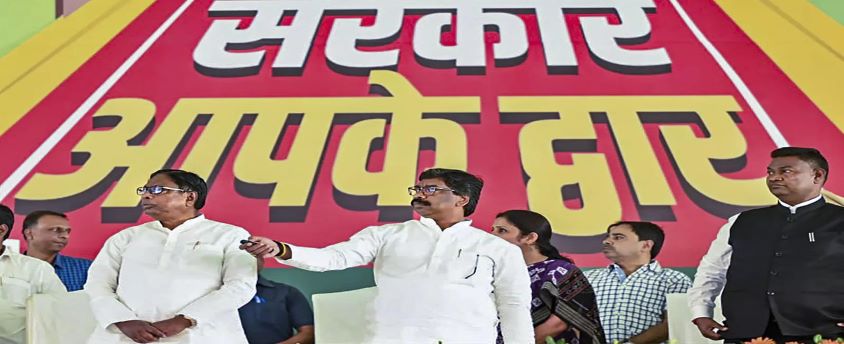
Why in News?
- The Jharkhand Assembly has cleared two Bills, but these changes will come into force only after the Centre carries out amendments to include these in the Ninth Schedule of the Constitution.
What are these Bills?
- Jharkhand Reservation of Vacancies in Posts and Services (Amendment) Bill, 2022:
- It raises reservations to 77%.
- Within the reserved category, the Scheduled Castes will get a quota of 12 %, up from 10%; 27% for OBCs, up from 14%; 28% for Scheduled Tribes, a 2 % increase; and 10% for Economically Weaker Sections (EWS).
Jharkhand Local Persons Bill, 2022:
- It aims at granting local residents “certain rights, benefits, and preferential treatment” over their land; in their stake in local development of rivers, lakes, fisheries; in local traditional and cultural and commercial enterprises; in rights over agricultural indebtedness or availing agricultural loans; in maintenance and protection of land records; for their social security; in employment in private and public sector; and, for trade and commerce in the state.
Why is there need to Include in Ninth Schedule?
- The 77 % reservation breaches the 50 % ceiling set by the Supreme Court in the 1992 Indra Sawhney v Union of India verdict.
- However, placing a legislation in the Ninth Schedule shields it from judicial scrutiny.
- Previously, the Tamil Nadu Backward Classes, Scheduled Castes and Scheduled Tribes (Reservation of Seats in Educational Institutions and of Appointments or Posts in the Services under the State) Act, 1993, reserved 69 % of the seats in colleges and jobs in the state government.
What is the Ninth Schedule?
- The Schedule contains a list of central and state laws which cannot be challenged in courts and was added by the Constitution (First Amendment) Act, 1951.
- The first Amendment added 13 laws to the Schedule. Subsequent amendments in various years have taken the number of protected laws to 284 currently.
- It was created by the new Article 31B, which along with Article 31A was brought in by the government to protect laws related to agrarian reform and for abolishing the Zamindari system.
- While Article 31A extends protection to ‘classes’ of laws, Article 31B shields specific laws or enactments.
- While most of the laws protected under the Schedule concern agriculture/land issues, the list includes other subjects.
- Article 31B also has a retrospective operation which means that if laws are inserted in the Ninth Schedule after they are declared unconstitutional, they are considered to have been in the Schedule since their commencement, and thus valid.
- Although Article 31B excludes judicial review, the apex court has said in the past that even laws under the Ninth Schedule would be open to scrutiny if they violated Fundamental Rights or the basic structure of the Constitution.
Are Laws in the Ninth Schedule completely Exempt from Judicial Scrutiny?
- Keshavananda Bharati v. State of Kerala (1973): The court upheld the judgement in Golaknath and introduced a new concept of “Basic structure of the Indian Constitution” and stated that, “all provisions of the constitution can be amended but those amendments which will abrogate or take away the essence or basic structure of constitution which included Fundamental Rights are fit to be struck down by the court”.
- Waman Rao v. Union of India (1981): In this important judgement, the SC ruled that, “those amendments which were made in the constitution before 24th April 1973 (date on which judgement in Keshavananda Bharati was delivered) are valid and constitutional but those which were made after the stated date are open to being challenged on the ground of constitutionality.
- I R Coelho v. State of Tamil Nadu (2007): It was held that every law must be tested under Article 14, 19 and 21 if it came into force after 24th April 1973.
- In addition, the court upheld its previous rulings and declared that any act can be challenged and is open to scrutiny by the judiciary if it is not in consonance with the basic structure of the constitution.
- In addition, it was held that if the constitutional validity of any law under the ninth schedule has been upheld before, in future it cannot be challenged again.
Way Forward:
- Although reservation is necessary, it should also be open to judicial scrutiny in order to ensure any abrupt or irrational policy initiative by the Executive or the Legislature.
- Any loophole or shortcomings in reservation policy must be addressed by involving various stakeholders. The need of the hour is not to go to extremes of either scrapping or shielding reservation policy, rather a rational framework on this contentious policy must be developed.
SC lifts stay on Haryana Quota for Private Jobs
18, Feb 2022
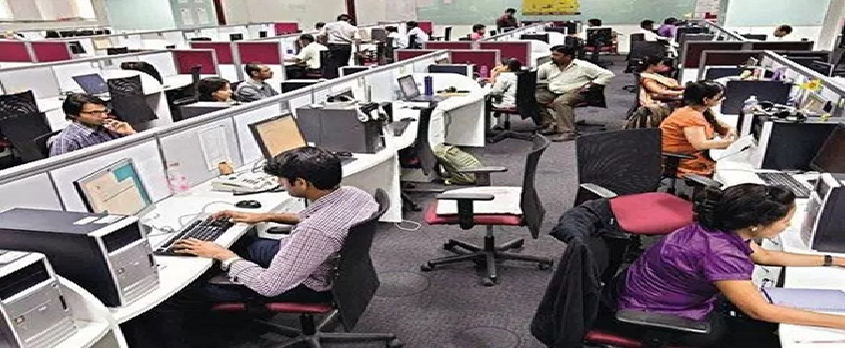
Why in News?
- The Supreme Court recently set aside a Punjab and Haryana High Court order staying a controversial State law which provides 75% reservation for local youths in private sector jobs earning less than ₹30,000 a Month.
About the News:
- The Bench observed that every law passed by legislature was presumed to be legal. An order of stay of their implementation by a court of law should be reasoned. The High Court had not given sufficient reasons for stopping the Haryana law.
- The Supreme Court, without going into the merits of the issue, requested the High Court to decide the writ petition filed by industrialists before it expeditiously and not later than a period of four weeks from today.
- The parties were directed to not seek adjournments in the High Court.
Highlights of the Law:
- The law provides for 75% reservation in private sector jobs to those having a Resident Certificate (Domicile).
- The law will be Applicable for a period of 10 years.
- Jobs with a gross monthly salary of not more than ₹30,000 will be up for hiring from among Local Candidates.
Rationale behind the Law:
- To create a harmonious environment for industry as well as the youth along with creating the right balance between the progress of Industries and the Economy.
Concerns Over the bill:
- It could lead to Multinational Firms moving out of the state.
- Reservation affects productivity and Industry Competitiveness.
What are the Legal Issues in Such laws?
- The question of domicile reservation in jobs: While domicile quotas in education are fairly common, courts have been reluctant in Expanding this to public employment. It raises questions relating to the fundamental right to Equality of Citizens.
- The issue of forcing the private sector to comply with reservations in employment. For mandating reservation in public employment, the state draws its power from Article 16(4) of the Constitution. But, the Constitution has no manifest provision for private employment from which the state draws the power to make laws mandating reservation.
- It may not be able to withstand judicial scrutiny on the touchstone of Article 19(1)(g).
SC Starts Examining Vanniyar Quota Law
16, Feb 2022
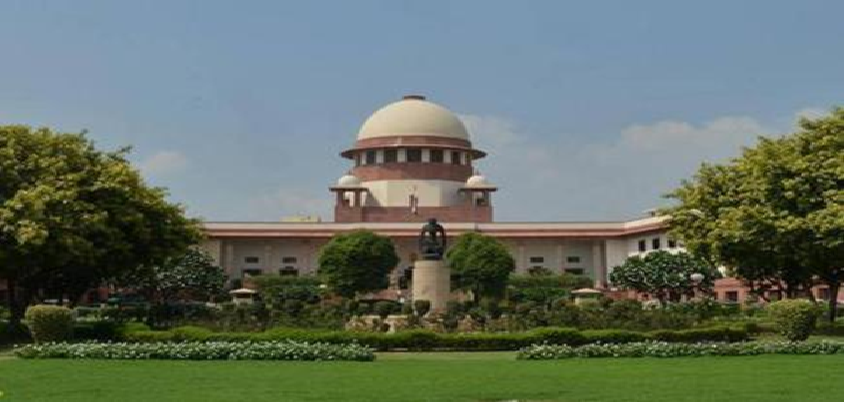
Why in News?
- The Supreme Court recently began examining whether petitions challenging a Madras High Court decision declaring ultra vires a State quota law, which provided 10.5% special reservation to Vanniyars, a most backward community, ought to be referred to a larger Bench.
About the Issue:
- The Tamil Nadu Assembly had in February 2021, passed the then ruling AIADMK-piloted bill providing internal reservation of 10.5 per cent for Vanniyars, with the incumbent DMK government issuing an order in July, 2021 for its implementation.
- It had split the aggregate 20 per cent reservation for MBCs and Denotified Communities into three separate categories by regrouping castes and provided ten per cent plus sub-quota for Vanniyars, formally known as Vanniakula Kshatriyas.
- In fact petitions had been filed seeking internal reservation. The process of consultation for sub classification within 20 per cent earmarked for MBCs began in 2012. Tamil Nadu BC commission had recommended 10.5 per cent reservation for vanniyakula Kshastriya community, after door to door enumeration.
What was Madras HC’s Observation?
- The judges said the state government cannot come out with such a legislation. This had been explained in the Constitution.
- The petitioners contended that if such a reservation was implemented, then the Vanniyar community would enjoy reservation in jobs and admission while 25 other castes under MBC and 68 others would have to share the Remaining Quota.
What was the Apex Court’s Observation?
- A three-judge Bench of SC ordered that no fresh appointments to State Government Services or Admissions to Educational Institutions should be made till February 15, the next date of hearing in the case.
- However, admissions and Appointments already made, pursuant to a Madras High Court order of August 25, would not be disturbed.
- The Bench said the case was important and had implications on the future of a large number of students, State Government employees, etc. The court said it had to be heard expeditiously.
About Vanniyar Movement:
- Vanniyar are one of the largest and most consolidated backward communities in the state.
- They had raised massive protests in the mid-1980s demanding 20% reservation in the state, and 2% in central services.
- Their movement was backed by the Justice Party as well as the Self-Respect Movement.
- The agitation began in 1986 with activists sending hundreds of letters and telegrams to then Chief Minister M G Ramachandran seeking an audience.
- As there was no Response from MGR and the then Rajiv Gandhi government, agitators started Demonstrations in Community strongholds, then went on to blockading rail and Road Traffic.
Order on EWS Criteria will Apply for ‘22-23 NEET Admissions, says SC
15, Feb 2022
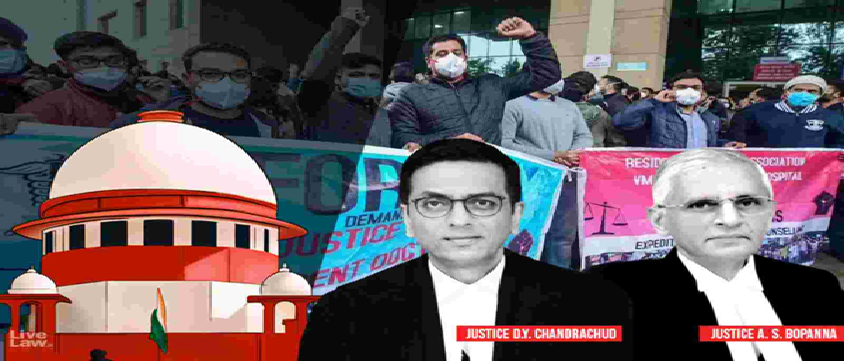
Why in News?
- The Supreme Court recently said whatever it decides on the criteria to identify Economically Weaker Section (EWS) for granting benefits of reservation will apply in NEET-PG 2022-23 admissions as well.
About the News:
- The court was hearing a petition filed by Varun Dileepbhai Bhatt and others on the applicability of the EWS criteria in NEET PG 2022-2023 exam. Advocate Charu Mathur, appearing for the students, said they had sought an extension of the deadline for edit option in the online forms with respect to the EWS norms.
- Some MBBS doctors, who have also filed a plea, sought direction to the Centre to specify in an information bulletin that the EWS criteria for academic session 2022-23 would be decided in terms of the pleas challenging the amended reservation policy (27% OBC and 10% EWS) in the All India Quota for the NEET.
- They too had urged for an extension of the date for the edit window from February 11, 2022 to enable the candidates to choose EWS category after the final decision in the pending matter.
- On January 20, the top court had said merit cannot be reduced to narrow definitions of performance in an open competitive examination which only provides formal equality of opportunity. It had upheld the 27% reservation for OBCs in All India Quota (AIQ) seats in the NEET for UG and PG medical courses.
What is NEET?
- The National Eligibility-cum-Entrance Test (NEET) is the entrance examination for entry to all undergraduate (NEET-UG) and postgraduate (NEET-PG) medical and dental courses in the country.
- Until 2016, the All India Pre-Medical Test (AIPMT) was the national-level entrance examination for medical colleges.
- State governments used to hold separate entrance tests for seats that were not contested at an all-India level.
- NEET was held for the first time in 2003, but discontinued the following year.
- On April 13, 2016, the Supreme Court upheld the newly inserted section 10-D of the Indian Medical Council Act.
- This provided for a uniform entrance examination to all medical educational institutions at the undergraduate level and postgraduate level in Hindi, English and various other languages.
- Since then, NEET has been the uniform entrance test for medical courses across the country.
Who are “Economically Weaker Sections”?
- For the purposes of article 15 and article 16, “economically weaker sections” shall be such as may be notified by the State from time to time on the basis of family income and other indicators of economic disadvantage.’
- Central Government of India has specified certain criteria for identifying the EWS. This will be a class distinct from the already specified classes of SCs, STs and socially and educationally backward classes (OBCs).
- The EWS quota applies to household with
- Annual household income below Rs 8 lakh.
- Agriculture land below 5 acres.
- Residential house below 1000 sq ft.
- Residential plot below 100 yards in notified municipality.
- Residential plot below 200 yards in non-notified municipality area.
What are the Implications?
- The 10% reservation will be in addition to the existing cap of 50% reservation for the Scheduled Castes, Scheduled Tribes and the Other Backward Classes, taking total reservation to 60%.
- The quota targets the poor among the upper castes. This will be over and above 50% mandated by Constitution and hence the need for Constitution Amendment Bill.
SC Verdict in Indira Sawhney case:
- The proposed law would face roadblocks if challenged in the Supreme Court.
- A nine-judge Constitution Bench of the Supreme Court in the Indira Sawhney case of 1992 specifically answered the question “whether Backward classes can be identified only and exclusively with reference to the Economic Criterion.”
- The constitution bench had categorically ruled that a backward class cannot be determined only and exclusively with Reference to Economic Criterion. The bench had held that economic criterion may be a Consideration or basis along with, and in addition to, social backwardness, but it can never be the sole Criterion.
- The bench in its judgement declared 50% quota as the rule unless extraordinary situations “inherent in the great diversity of this Country and the people” happen. Even then, the court stated that extreme Caution is to be Exercised and a special case should be made out.
States must Decide on SC/ST Quota in Promotions, says SC
29, Jan 2022
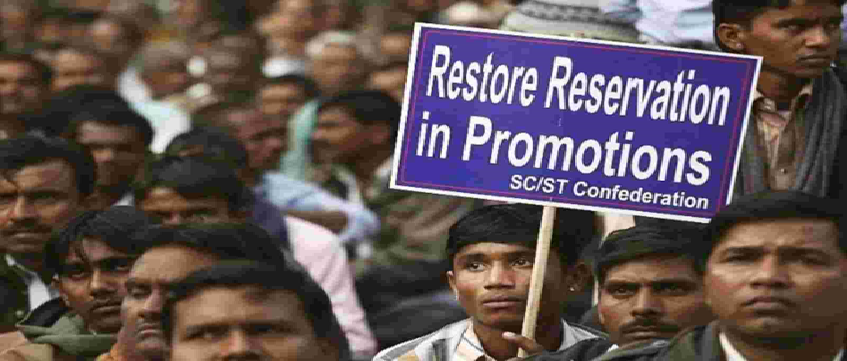
Why in News?
- The Supreme Court recently refused to lay down the “Yardstick” for determining the inadequacy of representation for Granting Reservation in promotions for Scheduled Caste/Scheduled Tribe candidates in Government Jobs.
About the News:
- The court stuck firm by its Constitution Benches decisions in Jarnail Singh and M. Nagaraj cases that the question of Adequate Representation of an SC/ST communities ought to be left to the respective States to determine.
What did the SC Observe?
- It held ‘cadre’ and not class, group or the entire service as the unit for purpose of collection of quantifiable data for giving promotion quotas.
- It said that, in the light of Jarnail Singh and Nagaraj, we cannot lay down any yardstick for determining the inadequacy of representation.
- In respect of the unit of collection of quantifiable data, the court held that the State was “obligated to collect quantifiable data on the inadequacy of representation of Scheduled Castes and Scheduled Tribes.
- The court, however, noted that the “collection of information on inadequacy of representation of SC/ST communities cannot be with reference to the entire service or class/group, but should be relatable to the grade/category of posts to which the promotion is Sought.”
Significance of the Case:
- With the recognition of ‘cadre’ as the unit for collection of quantifiable data, the court set aside its earlier judgment in the B.K. Pavithra case.
- The court Further left it to the State to assess the Inadequacy of the representation of SCs and STs for promotional posts by taking into account the relevant factors.
- A review had to be conducted regarding the data for the purpose of determining the inadequacy of representation in promotions, the court ordered.
- The court left it to the Union government to fix a “reasonable” time for the States to conduct the review.
M. Nagaraj Case (2006):
- Reversed the stance in the Indra Sawhney case: In this case applying the creamy layer concept in SC/ST reservation in promotions, the Supreme court reversed its earlier stance in the Indra Sawhney case (1992), in which it had excluded the creamy layer concept on SCs/STs (that was applicable on OBCs).
- Directives to the states: The five-judges Bench in Nagaraj case upheld the constitutional validity of all 77th, 81st, 82nd, and 85th constitutional amendments enabling reservation of SC/ST communities in promotions, but made certain directives for the states:
- State is not bound to make reservations for SC/ST in the matter of promotions.
- If a State wants to provide reservation to the SC/ST communities in promotions:
- It has to collect quantifiable data showing backwardness of the class.
- Show inadequacy of representation of that class in public employment in addition to compliance of Article 335.
- State needs to ensure that its reservation provision does not lead to excessiveness- breaching the ceiling-limit of 50%, or destroying the creamy layer principle.
Other Related Judgements:
- In Jarnail Singh v L.N. Gupta (2018) case, SC refused to refer the Nagaraj judgment to a higher bench but later altered the decision by saying that states will not be required to present quantifiable data of backwardness of SC/ST communities.
Reservation in Promotions is not a Fundamental Right:
- Reaffirming its stand in Nagraj case, the Supreme Court in 2020 ruled that reservation in the matter of promotions in public posts is not a fundamental right, and a state cannot be compelled to offer the quota if it chooses not to.
- Current Demand by the Centre: The Centre asked the Court to review its stance of introducing the concept of creamy layer in SC/ST promotions on various issues:
- Could deprive Backward Classes from Reservation: The government believes that the ‘creamy layer’ will become a trick to deprive the backward classes of the benefit of reservation.
- Redundancy of proving Backwardness Again: It is presumed that once they are added in the Presidential List under Articles 341 and 342 of the Constitution of India, there is no question of proving backwardness of the SCs and STs all over again.
- The said List cannot be altered by anybody except Parliament under Articles 341 and 342- defining who will be considered as SCs or STs in any state or Union Territory.
Constitutional Provisions for Promotion in Reservation
- Article 16 (4): Provides that the State can make any provision for the reservation of appointments or posts in favour of any backward class of citizens who, in the opinion of the state, are not adequately represented in the services under the State.
- Article 16 (4A): Provides that the State can make any provision for reservation in matters of promotion in favour of the Scheduled Castes and the Scheduled Tribes if they are not adequately represented in the services under the State.
- It was inserted by the 77th Constitutional Amendment Act, 1995.
- Article 16(4B): Added by the 81st Constitutional Amendment Act, 2000 which enabled the unfilled SC/ST quota of a particular year to be carried forward to the next year.
- Article 335: It recognises that special measures need to be adopted for considering the claims of SCs and STs to services and posts, in order to bring them at par.
- 82nd Constitutional Amendment Act, 2000 inserted a condition at the end of Article 335 that enables the state to make any provision in favour of the members of the SC/STs for relaxation in qualifying marks in any Examination.
Sedition Law
20, Jan 2022

Why in News?
- Calling for abolishing the law on sedition, former Supreme Court judge Rohinton Nariman has expressed concern on booking critics of the Government for sedition.
What are his Concerns?
- While those Exercising free speech were being booked under the stringent sedition law, those giving hate Speech are not being dealt with by Authorities.
- He said, it is time to completely do away with sedition laws and allow free speech so long as it does not exhort somebody to Violence.
What is Sedition?
- Sedition, which falls under Section 124A of the Indian Penal Code, is defined as any action that brings or attempts to bring hatred or contempt towards the government of India and has been illegal in India since 1870.
Need for a Proper Definition:
- The sedition law has been in controversy for far too long. Often the governments are criticized for using the law — Section 124-A of the Indian Penal Code (IPC) — against vocal critics of their policies.
- Therefore, this Section is seen as a restriction of individuals’ freedom of expression and falls short of the provisions of reasonable restrictions on freedom of speech under Article 19 of the Constitution.
- The law has been in debate ever since it was brought into force by the colonial British rulers in 1860s. Several top freedom movement leaders including Mahatma Gandhi and Jawaharlal Nehru were booked under the sedition law.
- Mahatma Gandhi described it as the “prince among the political sections of the Indian Penal Code designed to suppress the liberty of the citizen.”
- Nehru had described it as “highly objectionable and obnoxious” which “should have no place in any body of laws that we might pass”. Nehru said, “The sooner we get rid of it the better.”
Relevant Supreme Court judgements:
- Kedarnath Singh vs State of Bihar: Section 124A has been challenged in various courts in specific cases. The validity of the provision itself was upheld by a Constitution Bench in 1962, in Kedarnath Singh vs State of Bihar.
- That Judgment went into the issue of whether the law on sedition is consistent with the Fundamental right under Article 19 (1) (a) which guarantees each citizen’s freedom of Speech and Expression.
- The Supreme Court laid down that every citizen has a right to say or write about the Government, by way of criticism or comment, as long as it does not “incite people to Violence” against the Government established by law or with the intention of creating public Disorder.
- The Balwant Singh vs State of Punjab (1995) case: In this case, the Supreme Court had clarified that merely shouting slogans, in this case Khalistan Zindabad, does not amount to sedition. Evidently, the sedition law is being both misunderstood and misused to muzzle dissent.
What does the Data Shows?
- The National Crime Records Bureau (NCRB), though, has only been collecting separate data on sedition cases since 2014. In 2014, there were 47 cases of sedition but that number increased to 70 in 2018 (the latest year with available data).
- Compared to other offences, sedition remains a rare crime (it accounts for less than 0.01% of all IPC crimes).
- But within India, some parts are emerging as sedition hotspots. Assam and Jharkhand, for instance, with 37 sedition cases each, account for 32% of all sedition cases between 2014-2018.
- In 2018, there were 1,182 cases registered under UAPA (The Act gives special procedures to handle terrorist activities, among other things). And almost all these cases (92%) were concentrated in five states (Uttar Pradesh, Jammu and Kashmir, Assam, Jharkhand and Manipur).
- “There has been a dramatic jump in charging a person with the offence of sedition since 2016.
- In 2019, 93 cases were on the ground of sedition as compared to the 35 cases that were filed in 2016. The same constitutes a 165% increase. Of these 93 cases, charge sheets were filed in a mere 17% of cases and even worse, the conviction rate was an abysmally low 3.3%.
Why Sedition Law is a Hindrance?
- Sedition leads to a sort of unauthorised self-censorship, for it produces a chilling effect on free speech.
- It suppresses what every citizen ought to do in a democracy — raise questions, debate, disagree and challenge the government’s decisions.
- Sedition systematically destroys the soul of Gandhi’s philosophy that is, right to dissent which is the core principle of democracy.
Need of the Hour:
- The top court has observed that the “ambit and parameters of the provisions of Sections 124A, 153A and 505 of the Indian Penal Code, 1860 would require interpretation, particularly in the context of the right of the electronic and print media to communicate news, information and the rights, even those that may be critical of the prevailing regime in any part of the Nation”.
SC to Urgently Hear Hate Speeches Case
11, Jan 2022
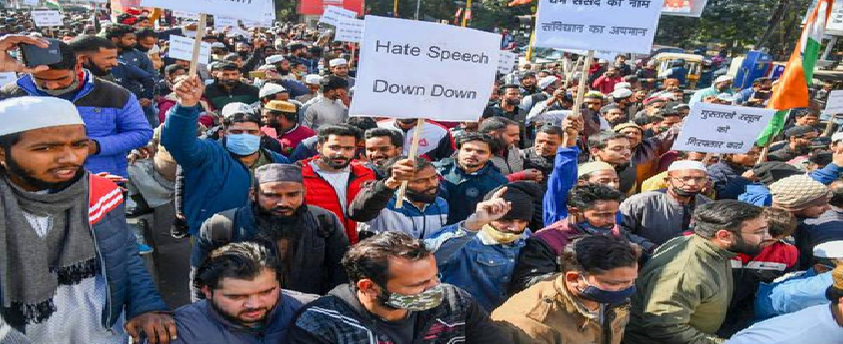
Why in News?
- The Supreme Court recently agreed to urgently hear a petition seeking the arrest and trial of people who made hate speeches, inciting violence towards Muslims, at the Haridwar Dharm Sansad.
What is Hate Speech?
- According to Law Commission of India (267th report), hate speech is “incitement to hatred primarily against a group of persons defined in terms of race, ethnicity, gender, sexual orientation, religious belief and the like”
- The report of the commission further clarifies that hate speech is “any word written or spoken, signs, visible representations within the hearing or sight of a person with the Intention to cause fear or alarm, or Incitement to Violence.
What are the Constitutional Provisions Regarding the Freedom of Speech?
- Article 19(1)(a) of the Indian Constitution guarantees freedom of speech and expression. Any restriction on this right shall only be permitted if the speech falls within one of the eight grounds set out in Article 19(2) of the Constitution.
- The freedom of speech under Article 19(1)(a) includes the right to express one’s views and opinions at any issue through any medium, e.g. by words of mouth, writing, printing, picture, film, movie, etc.
- It thus includes the freedom of communication and the right to propagate or publish an opinion.
Can Freedom of Speech be Curtailed?
- This right is subject to reasonable restrictions being imposed under Article 19(2). Out of the eight different grounds listed on Article 19(2) of the Constitution, the majority of hate speech laws are saved by the ‘public order’ exception. The eight different grounds are;
- Security of the State.
- Friendly relations with FOREIGN STATES.
- Public order.
- Decency and morality.
- Contempt of court.
- Incitement to an offence, and
- Sovereignty and integrity of India.
- Reasonable restrictions on these grounds can be imposed only by a duly enacted law and not by executive action.
Issues of Social Media Misuse:
- Rumour Mongering: Fake narratives on online platforms have real life implications. For example, recently in India, online rumours, regarding child traffickers, through popular messaging platform WhatsApp, led to a spate of lynching’s in rural areas.
- Facilitating Polarisation: It enables the Communalising agents to polarise people for Electoral Gains.
- For example, during the election campaign of recently conducted Delhi legislative assembly elections, a leader enticed crowds with the use of communalising and violence on social media platforms.
- Following this, a young man translated these words into reality by opening fire on protesters.
- This incident highlighted how the spread of hate speech through social media has real consequences.
- Social Media AI poorly adapted to local languages: Social media platforms’ Artificial Intelligence based Algorithms that filter out hate speeches are not adapted to local languages. Also, the companies have invested little in staff fluent in them. Due to this, it failed to limit the ultranationalist Buddhist monks using Facebook for disseminating hate speech which eventually led to Rohingya Massacres.
Way Forward:
- Harmonising the Laws: Harmonising the regulations to check misuse of social media are scattered across multiple acts and rules.
- Thus, there is a need to synchronise the relevant provisions under the Indian Penal Code, the Information Technology Act and Criminal Procedure Code.
- Obeying the regulation by Supreme Court: In Shreya Singhal v. Union of India (2015) case, Supreme Court gave a verdict on the issue of online speech and intermediary liability in India.
- It struck down the Section 66A of the Information Technology Act, 2000, relating to restrictions on online speech, on grounds of violating the freedom of speech guaranteed under Article 19(1)(a) of the Constitution of India.
- It also gave the direction on how hate content should be regulated and the government should follow this direction, where the user reports to the intermediary and the platforms then takes it down after following due process.
- Transparency obligation for Digital Platforms: Digital platforms can be made to publish the name and amount paid by the author in the event that content is sponsored.
- For example, with regard to fake news, France has an 1881 law that defines the criteria to establish that news is fake and being disseminated deliberately on a large scale.
- A legal injunction should be created to swiftly halt such news from being disseminated.
- Establishing Regulatory Framework: Responsible broadcasting and institutional arrangements should be made with consultations between social media platforms, media Industry bodies, civil society and law enforcement as an ideal regulatory framework.
- Even global regulations could be made to establish baseline content, electoral integrity, privacy, and data standards.
- Creating Code of Conduct: It can be framed without creating an ambiguous statutory structure that could leave avenues for potential legislative and state control.
- For example, the European Union has also established a code of conduct to ensure non-proliferation of hate speech under the framework of a ‘digital single market.’
Don’t indulge in Hate Speech, says Vice President
04, Jan 2022
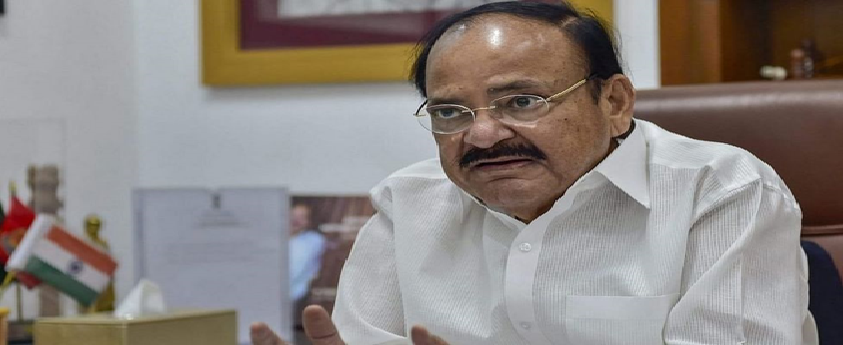
Why in News?
- Vice President M Venkaiah Naidu recently expressed his strong disapproval of attempts to ridicule other Religions and create dissensions in the society, saying every person has the right to Practice and Preach his or her Faith in the Country.
What is Hate Speech?
- According to Law Commission of India (267th report), hate speech is “incitement to hatred primarily against a group of persons defined in terms of race, ethnicity, gender, sexual orientation, religious Belief and the like”.
- The report of the Commission Further Clarifies that hate speech is “any word written or spoken, signs, visible representations within the hearing or sight of a person with the Intention to cause fear or alarm, or Incitement to violence.
What are the Constitutional Provisions regarding the Freedom of speech?
- Article 19(1)(a) of the Indian Constitution guarantees freedom of speech and expression. Any restriction on this right shall only be permitted if the speech falls within one of the eight grounds set out in Article 19(2) of the Constitution.
- The freedom of speech under Article 19(1)(a) includes the right to express one’s views and opinions at any issue through any medium, e.g. by words of mouth, writing, printing, picture, film, movie, etc.
- It thus includes the freedom of communication and the right to propagate or publish an opinion.
Can Freedom of speech be curtailed?
- This right is subject to reasonable restrictions being imposed under Article 19(2). Out of the eight different grounds listed on Article 19(2) of the Constitution, the majority of hate speech laws are saved by the ‘public order’ exception. The eight different grounds are;
- Security of the State.
- Friendly relations with foreign States.
- Public order.
- Decency and morality.
- Contempt of court.
- Incitement to an offence, and
- Sovereignty and integrity of India.
- Reasonable restrictions on these grounds can be imposed only by a duly enacted law and not by executive action.
Issues of Social Media Misuse:
- Rumour Mongering: Fake narratives on online platforms have real life implications. For example, recently in India, online rumours, regarding child traffickers, through popular messaging platform WhatsApp, led to a spate of lynching’s in rural areas.
- Facilitating Polarisation: It enables the communalising agents to polarise people for Electoral Gains.
- For example, during the election campaign of recently conducted Delhi legislative assembly elections, a leader enticed crowds with the use of communalising and violence on social media platforms.
- Following this, a young man translated these words into reality by opening fire on protesters.
- This incident highlighted how the spread of hate speech through social media has real consequences.
- Social Media AI poorly adapted to local languages: Social media platforms’ artificial intelligence based algorithms that filter out hate speeches are not adapted to local languages. Also, the companies have invested little in staff fluent in them. Due to this, it failed to limit the ultranationalist Buddhist monks using Facebook for disseminating hate speech which eventually led to Rohingya massacres.
Way Forward:
- Harmonising the Laws: Harmonising the regulations to check misuse of social media are scattered across multiple acts and rules.
- Thus, there is a need to synchronise the relevant provisions under the Indian Penal Code, the Information Technology Act and Criminal Procedure Code.
- Obeying the regulation by Supreme Court: In Shreya Singhal v. Union of India (2015) case, Supreme Court gave a verdict on the issue of online speech and intermediary liability in India.
- It struck down the Section 66A of the Information Technology Act, 2000, relating to restrictions on online speech, on grounds of violating the freedom of speech guaranteed under Article 19(1)(a) of the Constitution of India.
- It also gave the direction on how hate content should be regulated and the government should follow this direction, where the user reports to the intermediary and the platforms then takes it down after following due process.
- Transparency obligation for digital platforms: Digital platforms can be made to publish the name and amount paid by the author in the event that content is sponsored.
- For example, with regard to fake news, France has an 1881 law that defines the criteria to establish that news is fake and being disseminated deliberately on a large scale.
- A legal injunction should be created to swiftly halt such news from being disseminated.
- Establishing regulatory framework: Responsible broadcasting and institutional arrangements should be made with consultations between social media platforms, media industry bodies, civil society and law enforcement as an ideal regulatory framework.
- Even global regulations could be made to establish baseline content, electoral integrity, privacy, and data standards.
- Creating Code of Conduct: It can be framed without creating an ambiguous statutory structure that could leave avenues for potential legislative and state control.
- For example, the European Union has also established a code of conduct to ensure non-proliferation of hate speech under the framework of a ‘digital single market.’
8 Lakh Income reasonable cap for EWS Quota, Centre tells SC
03, Jan 2022
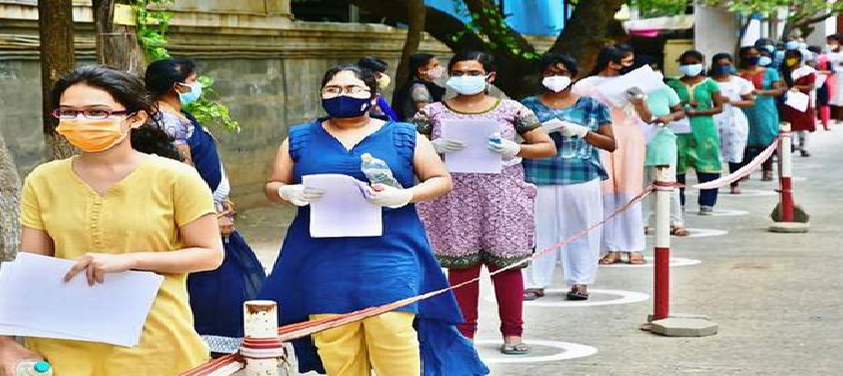
Why in News?
- A Government Committee Report in the Supreme Court has said that “income” is a “feasible criterion” for Defining the “Economical Weaker Sections” (EWS) in society and the annual family income of ₹8 lakh is a “reasonable” threshold to determine EWS in order to extend reservation in Admissions and Jobs.
About the News:
- The committee report as part of a government affidavit concluded that a feasible criterion for defining EWS can be based on income [family income]. A threshold of ₹8 lakh of annual family income, in the current situation, seems reasonable for determining EWS.
- The committee did not agree with the notion that the Centre had “mechanically adopted” ₹ 8 lakh as a number because it was also used for the OBC creamy layer cut-off. It said the Income Criterion for EWS was “more stringent” than the one for the OBC creamy layer.
What is the Issue?
- The report is the result of the Supreme Court’s repeated grilling of the government, since October, to explain how it zeroed in on the figure of ‘₹8 lakh’ as the annual income criterion to identify EWS among forward classes of society for grant of 10% reservation in NEET medical admissions under the All India Quota (AIQ) category.
- The court was hearing a batch of petitions filed by NEET aspirants challenging a July 29 notification of the Centre announcing 27% quota to OBCs and 10% reservation to EWS in AIQ.
- The Supreme Court’s query was significant as the One Hundred and Third Constitutional Amendment of 2019, which introduced the 10% EWS quota, is itself under challenge before a larger Bench.
- The Amendment is under question for making economic criterion as the sole ground for grant of Reservation Benefits.
- On November 25, the Centre had informed the court that it had taken a considered decision to revisit the criteria for determining EWS.
- The Centre had then formed an expert committee comprising Ajay Bhushan Pandey, former Finance Secretary; professor V.K. Malhotra, Member Secretary, ICSSR; and Sanjeev Sanyal, Principal Economic Adviser to the Government of India. The committee had submitted its report on December 31.
What does the Committee’s Report Says?
- The Current Gross Annual Family Income limit for EWS of ₹8 lakh or less may be retained. In other words, only those families whose annual income is up to ₹8 lakh would be eligible to get the benefit of EWS reservation.
- The committee said the ₹8 lakh criterion struck a “fine balance” between over-inclusion and inclusion errors.
- The figure ensures that most low-income people who are not required to pay income tax are not excluded and are covered in EWS and at the same time it should not be so high that it becomes over-inclusive by including many incomes tax-paying middle-and high-income families into EWS.
- Though we may not completely eliminate yet we can try to minimise both exclusions as well as inclusion errors. Therefore, considering that the currently effective income tax exemption limit is around ₹8 lakh for individuals, the committee is of the view that the gross annual income limit of ₹8 lakh for the entire family would be reasonable for inclusion into EWS.
What are the Centre’s Argument?
- Firstly, EWS’s criteria relates to the financial year prior to the year of application whereas the income criterion for the creamy layer in OBC category is applicable to gross annual income for three consecutive years.
- Secondly, in case of OBC creamy layer, income from salaries, agriculture and traditional artisanal professions are excluded from the consideration whereas the ₹8 lakh criteria for EWS includes all sources, including farming. So, despite being the same cut-off number, their composition is different and hence, the two cannot be equated.
- It found no fault in the uniform application of the ₹8-lakh criteria across the country.
- The desirability of a uniform income-based threshold has been upheld by the Supreme Court, and it can be adopted across the country as a matter of Economic and Social Policy.
Who are “Economically Weaker Sections”?
- For the purposes of article 15 and article 16, “economically weaker sections” shall be such as may be notified by the State from time to time on the basis of family income and other Indicators of Economic Disadvantage.’
- Central Government of India has specified certain criteria for identifying the EWS. This will be a class distinct from the already specified classes of SCs, STs and socially and educationally backward classes (OBCs).
- The EWS quota applies to household with
- Annual household income below Rs 8 lakh.
- Agriculture land below 5 acres.
- Residential house below 1000 sq ft.
- Residential plot below 100 yards in notified municipality.
- Residential plot below 200 yards in non-notified municipality area.
What are the Implications?
- The 10% reservation will be in addition to the existing cap of 50% reservation for the Scheduled Castes, Scheduled Tribes and the Other Backward Classes, taking total reservation to 60%.
- The quota targets the poor among the upper castes. This will be over and above 50% Mandated by Constitution and hence the need for Constitution amendment Bill.
SC verdict in Indira Sawhney case:
- The proposed law would face roadblocks if challenged in the Supreme Court.
- A nine-judge Constitution Bench of the Supreme Court in the Indira Sawhney case of 1992 specifically answered the question “whether backward classes can be identified only and exclusively with reference to the economic criterion.”
- The constitution bench had categorically ruled that a backward class cannot be determined only and Exclusively with reference to economic criterion.
- The bench had held that Economic Criterion may be a consideration or basis along with, and in addition to, social backwardness, but it can never be the sole criterion.
- The bench in its judgement declared 50% quota as the rule unless extraordinary situations “inherent in the great diversity of this country and the people” happen. Even then, the court stated that extreme caution is to be exercised and a special case should be made out.
SC to hear Pleas on Vanniyar QUOTA LAW
28, Dec 2021
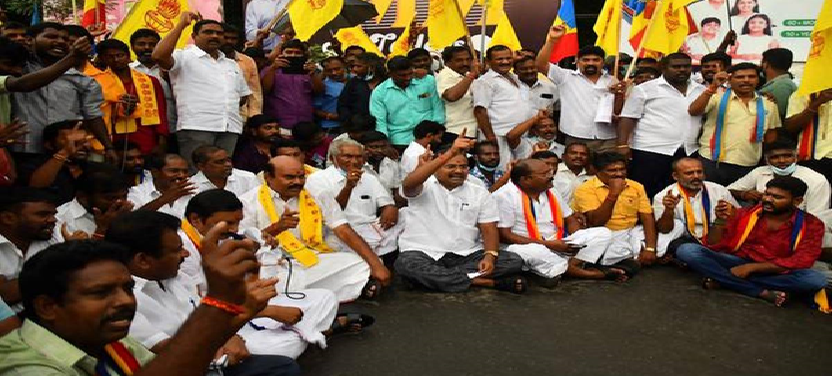
Why in News?
- The Supreme Court recently took on board a batch of petitions, including one by the Tamil Nadu Government, challenging a Madras High Court decision to quash a State quota law which provided 10.5% special reservation to Vanniyars, a most backward community.
About the Issue:
- The Tamil Nadu Assembly had in February 2021, passed the then ruling AIADMK-piloted bill providing internal reservation of 10.5 per cent for Vanniyars, with the incumbent DMK government issuing an order in July, 2021 for its implementation.
- It had split the aggregate 20 per cent reservation for MBCs and Denotified Communities into three separate categories by regrouping castes and provided ten per cent plus sub-quota for Vanniyars, formally known as Vanniakula Kshatriyas.
- In fact petitions had been filed seeking internal reservation. The process of consultation for sub classification within 20 per cent earmarked for MBCs began in 2012. Tamil Nadu BC commission had recommended 10.5 per cent reservation for vanniyakula Kshastriya community, after door to door enumeration.
What was Madras HC’s Observation?
- The judges said the state government cannot come out with such a legislation. This had been explained in the Constitution.
- The petitioners contended that if such a Reservation was implemented, then the Vanniyar community would enjoy Reservation in jobs and admission while 25 other castes under MBC and 68 others would have to share the remaining quota.
What was the Apex Court’s Observation?
- A three-judge Bench of SC ordered that no fresh appointments to State Government services or admissions to educational institutions should be made till February 15, the next date of hearing in the case.
- However, admissions and appointments already made, pursuant to a Madras High Court order of August 25, would not be disturbed.
- The Bench said the case was important and had implications on the future of a large number of students, State Government employees, etc. The court said it had to be heard expeditiously.
About Vanniyar Movement:
- Vanniyar are one of the largest and most consolidated backward communities in the state.
- They had raised massive protests in the mid-1980s demanding 20% reservation in the state, and 2% in central services.
- Their movement was backed by the Justice Party as well as the Self-Respect Movement.
- The agitation began in 1986 with activists sending hundreds of letters and telegrams to then Chief Minister M G Ramachandran seeking an audience.
- As there was no response from MGR and the then Rajiv Gandhi government, agitators started demonstrations in community strongholds, then went on to blockading rail and Road Traffic.
SC SETS UP PANEL TO LOOK INTO J&K INTERNET CURBS
12, May 2020
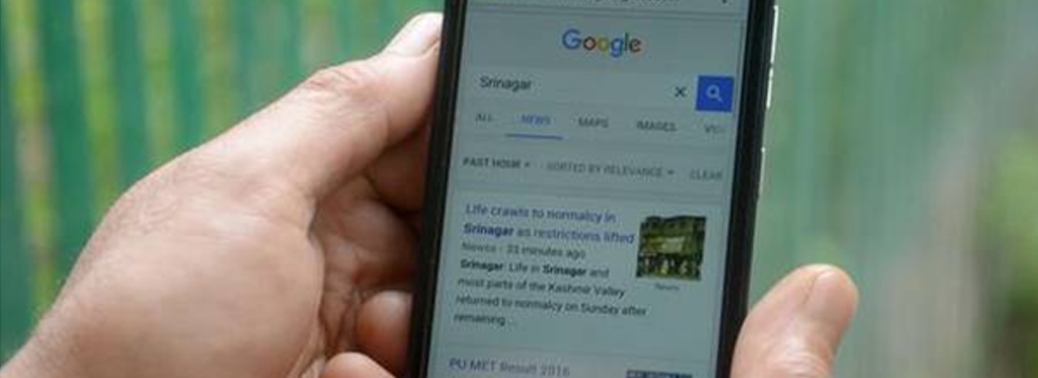
Why in News?
- The Supreme Court has directed that a special committee should be constituted to look into whether 4G internet services should be restored in the Union Territory of Jammu and Kashmir.
About the News:
- The central government had imposed a complete internet shutdown in the erstwhile state of Jammu and Kashmir in August 2019, after scrapping Article 370 which gave J&K its special status. Eight months later, it restored internet services partially, to allow 2G speed for mobile users.
- The court heard arguments by the Jammu and Kashmir government, which focussed on the need for slow internet speed to curb instances of terrorism and violence in the region.
- The administration also submitted that the right to internet access is not a fundamental right and the state can curtail the freedom of speech and right to trade through the internet. It called the internet speech curbs reasonable and asserted that these were necessary to protect the sovereignty, integrity and security of the country.
- The petitioner highlighted the need for maintaining the fundamental right to access of healthcare in times of a pandemic.It is also said that the impact of slow internet on education, contending that students cannot attend classes through video conferencing because of the slow speed of the internet.
What did SC said?
- The Supreme Court said that a special committee led by the Ministry of Home Affairs secretary should be constituted to look into whether 4G internet services should be restored in the Union Territory of Jammu and Kashmir.
- The committee will also include the Department of Communications Secretary of the Union Ministry of Communications and the Chief Secretary of the Union Territory of Jammu and Kashmir.
- This committee has been asked to look into the petitioners’ contention, as well as examine the alternatives suggested by them, on allowing faster internet on a trial basis in areas wherever possible.
- This court has to ensure national security and human rights are balanced. We do recognise that the UT has plunged into a crisis. At the same time the court is cognizant to the concerns Related to Ongoing Pandemic and Hardships.
- The SC also referred to the judgment in the Anuradha Bhasin case, popularly known as the Kashmir internet Shutdown Case.
About Anuradha Bhasin case verdict:
- The Court said that all restrictive orders under Section 144 of CrPC and suspension of internet services in Jammu and Kashmir have to be reviewed.
- The verdict has laid down a framework of how the Internet can be suspended, and what rights and legal recourses a citizen has when it is suspended.
- Right to internet is a fundamental right (subject to reasonable restrictions) included in the freedom of expression under Article 19 of the Indian Constitution.
- Restrictions on fundamental rights could not be in exercise of arbitrary powers. These freedoms could only be restricted as a last resort if “relevant factors” have been considered and no other options are there.
- Any order passed to restrict or suspend judicial scrutiny will be subject to judicial scrutiny.
- Suspension of internet services indefinitely is also a violation of telecom rules.
SC on section 144:
- Sec 144 cannot be used to suppress the legitimate expression of opinion or grievance, or the exercise of democratic rights.
- When Sec 144 is imposed for reasons of apprehended danger, that danger must be an “emergency”.
- The imposition of Sec 144 must strike a balance between the rights of the individual and the concerns of the state.
- Powers under Sec 144 should be exercised in a reasonable and bona fide manner, and the order must state material facts in order to enable judicial review.
What are the Criticisms Made?
- Restrictions have virtually abrogated the fundamental rights and paralyzed the lives of seven million people in the region.
- These restrictions have been imposed under the garb of public tranquillity, public order and national security, but national security does not appear in the order imposing Section 144 of the Criminal Procedure Code in the region.
- The shutdown of internet services has severe consequences on business, trade and heavily affects the common people in the region.
What Procedure does the Government follow to Suspend Internet Services?
- The Information Technology Act, 2000, the Criminal Procedure Code (CrPC), 1973 and the Telegraph Act, 1885 are the three laws that deal with suspension of Internet services.
- But before 2017, Internet suspension orders were issued under section 14 of the CrPC.
- In 2017, the central government notified the Temporary Suspension of Telecom Services (Public Emergency or Public Service) Rules under the Telegraph Act to govern suspension of Internet. These Rules derive their powers from Section 5(2) of the Indian Telegraph Act, which talks about interception of messages in the “interests of the sovereignty and integrity of India”.
- Despite the 2017 rules, the government has often used the broad powers under Section 144.
- India also tops the list of Internet shutdowns globally. According to Software Freedom Law Centre’s tracker, there have been 381 shutdowns since 2012, 106 of which were in 2019.
What did the Judgment say on the Rules to be followed?
- The court recognised that the 2017 Rules are the only procedure to be followed to suspend Internet services in the occurrence of a “public emergency” or for it to be “in the interest of public safety”.
- The verdict reiterated that the competent authority to issue an order under the Suspension Rules, in ordinary circumstances, would be the Secretary to the Ministry of Home Affairs.
- The Rules also say that in case the confirmation does not come from a competent authority, the orders shall cease to exist within a period of 24 hours.
- Clear reasons for such orders need to be given in writing, and need to be forwarded to a Review Committee by the next working day.
- The confirmation must not be a mere formality, but must indicate independent application of mind by the competent authority to the order passed by the authorised officer, who must also take into account changed circumstances if any, etc.
- According to the Temporary Suspension of Telecom Services [Public Emergency or Public Service] Rules, 2017 only the Home Secretary of the country and a secretary of a state’s home department can pass such an order.
- These also state that any such order should be taken up by a review committee within five days.
SC ON RIGHT TO RELIGION
12, May 2020
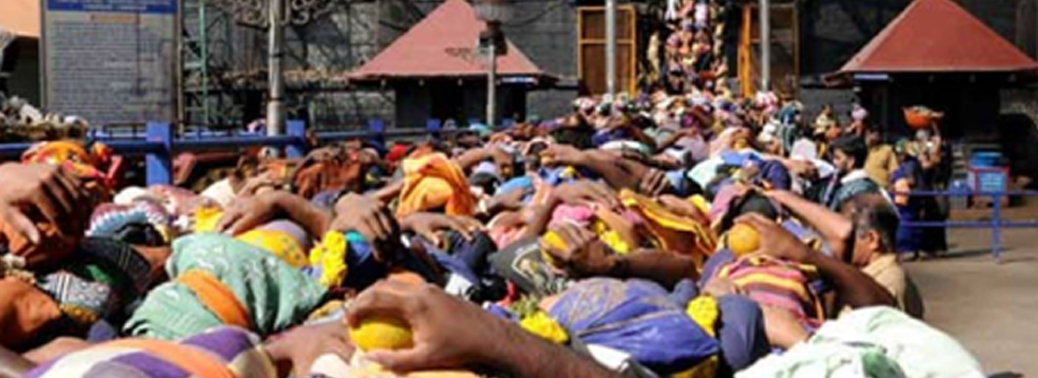
Why in News?
- A Nine-judge Bench of the Supreme Court declared that Superior Courts enjoy untrammelled power to take up any cause to do Complete Justice.
About the News:
- On November 14 last year, a five-judge Bench led by then Chief Justice Ranjan Gogoi did not complete its assigned task of reviewing the apex court’s original Sabarimala judgment of 2018, which allowed women of every age to enter and worship at the temple.
- Instead, it had framed “larger issues” concerning essential religious practices of various religions and clubbed other pending cases on subjects as varied as female genital mutilation among Dawoodi Bohras to entry of Parsi women who married inter-faith into the fire temple and Muslim women into mosques and referred them all to a larger Bench.
- Chief Justice Bobde, who succeeded Justice Gogoi as top judge, set up a nine-judge Bench to hear the reference.
What were the Issues?
Entry of Women into the Sabarimala Temple:
- On 28thSeptember 2018, SC lifted the ban that prevented women and girls between the age of 10 and 50 (mainly menstruating women) from entering the famous Ayyappa shrine in Kerala by a majority verdict of 4:1.
- It held that the centuries-old Hindu religious practice was illegal and unconstitutional (Article 14 and 25).
- Temple custodians argue that women of menstrual age are prohibited from offering prayers as the deity there, Ayyappa, is a celibate.
Muslim Women’s Entry into Mosques:
- In April 2019, the SC was moved to seek directions for allowing Muslim women to enter mosques through the main door, and to have the “Islamic right to visual and auditory access to the ‘musalla’ (main prayer area)”.
- The petition said that “this act of prohibition is void and unconstitutional as such practices are not only repugnant to the basic dignity of a woman as an individual but also violative of the fundamental rights guaranteed under Articles 14, 15, 21 and 25 of the Constitution”.
- The matter was last heard on November 5, 2019, by a Bench comprising CJI-designate Justice S A Bobde and Justices S Abdul Nazeer and Krishna Murari.
Female genital mutilation among Dawoodi Bohras:
- On September 24, 2018, a Bench of SC referred the matter in ‘Sunita Tiwari vs Union of India and Ors’ to a larger Bench of the Supreme Court.
- The petition, filed under Article 32 of the Constitution, had questioned the constitutionality of the practice of Female Genital Mutilation (FGM) or ‘khatna’, or Female Circumcision (FC) or ‘khafd’, which the petitioner said was carried out on every girl child in the Dawoodi Bohra community.
- The petition relied on the UN Convention on the Rights of the Child and the Universal Declaration of Human Rights and urged that the practice is violative of Article 21 (right to life and personal liberty).The Bench submitted that the matter should be referred to a larger Bench, which the SC accepted.
Entry of Parsi Women Married to non-Parsis in the Agyari:
- The Special Leave Petition in ‘Goolrukh Gupta vs Burjur Pardiwala’ arose out of a judgment passed by the Gujarat High Court in 2012.
- The petitioner, Goolrukh Contractor Gupta, moved the High Court in 2010 after her friend who too, like her, was a Parsi married to a Hindu, was denied entry to the Tower of Silence during her mother’s last rites some years before.
- In the court, Goolrukh Gupta’s counsel, argued that the question was, “in the case of marriage between a Hindu and Parsi, does it result in automatic conversion of religion?” The matter hence raised issues of gender justice.
- In December 2017, a Constitution Bench observed that “DNA does not evaporate” after marrying outside one’s religion”, and that by marrying outside her religion, a woman does not “surrender her affection to her Father”.
What was the Apex Court’s Decision?
- There is no fetter on the exercise of discretion of this court in referring questions of law to a larger Bench in review petitions.
- Being a superior court of record, it is for this court to consider whether any matter falls within its jurisdiction or not.
- Unlike a court of limited jurisdiction, the superior court of record is entitled to determine for itself questions about its own jurisdiction.
- It invoked Article 142 of the Constitution “which enables this court to make any order as is necessary for doing complete justice in any cause or matter pending before it.”
What are the Concerns?
- The questioned has now risen that how the nine-judge Bench would determine the law without knowledge of the facts of each individual case.
- There are concerns within the court itself about clubbing these four issues together because this will lead to a situation where not everyone is equally content and a uniform verdict can give rise to religious conflicts.
- In setting itself the task of defining this constitutional morality, the court will now have to go into the question of its limits and boundaries, of its possible clash with religious beliefs and faith.
- The essentiality test impinges on the autonomy and freedom of religion which was meant to guarantee freedom to practice one’s beliefs based on the concept of “inward association” of man with God.
- The Court is creating problems for itself as well as circumscribing individual freedoms and treading into the clergy’s domain.
Way Forward:
- Each of these issues must be considered on their own ground with different redressal mechanisms. On essential religious practice, SC should go case by case rather than aim for a grand unified theory.
- The court has been inconsistent in applying the essential religious practice doctrine and maybe it should be left like that only to avoid further tensions.
- Court’s push for expanding its remit and for hard clarity on complex questions will prove difficult and maybe counterproductive so it should not dwell deeper into the religious matter after a Certain Point.
- The court upheld ideas of freedom and equality and the constitutional promise of a pluralistic and inclusive society while redressing an injustice which should be upheld as a beacon of hope for a just and equal society.
CONSTITUTIONAL PROVISIONS REGARDING MINORITY EDUCATIONAL INSTITUTIONS
01, May 2020

Why in News?
- In a significant judgment, the Supreme Court has ruled that the National Eligibility cum Entrance Test (NEET) for admission to graduate and postgraduate medical and dental courses, does not violate the rights of minorities under the Constitution.
About the Issue:
- The ruling came on a bunch of petitions originally filed in 2012 by the Christian Medical College, Vellore and others, challenging the notifications for NEET issued by the Medical Council of India (MCI) and the Dental Council of India (DCI).
- NEET took away the right of the religious and linguistic minority institutions to administer their business, including the right to admit students from the minority community in terms of their own standards.
What are the observations made by the Court?
- Rights of the minority institutions under Articles 19(1)(g) and 30 read with Articles 25, 26 and 29(1) do not come in the way of securing transparency and recognition of merits in matter of admissions.
- State has the right to frame regulatory regime for aided/ unaided minority/private institutions, as mandated by the Constitution. There cannot be any other examination for admitting students.
- NEET is a regulatory measure that is in the larger national interest.
- The regulatory measures in no way interfere with the rights to administer the institution by the religious or linguistic minorities.
- Besides, regulating academics and imposing reasonable restrictions to ensure educational standards, are in national and public interest.
What are the Constitutional Provisions?
- Article 30(1) recognizes linguistic and religious minorities but not those based on race, ethnicity.
- It recognizes the right of religious and linguistic minorities to establish and administer educational institutions, in effect recognizing the role educational institutions play in preserving distinct culture.
- A majority community can also establish and administer educational institution but they will not enjoy special rights under Article 30(1)(a).
What are the Special Rights Enjoyed by Religious Minority Institutions?
- Under Art 30(1)(a), MEI enjoy right to education as a Fundamental Right. In case the property is taken over by state, due compensation to be provided to establish institutions elsewhere
- Under Article 15(5), MEIs are not considered for reservation
- Under Right to Education Act, MEI not required to provide admission to children in the age group of 6-14 years up to 25% of enrolment reserved for economically backward section of society
- In St Stephens vs Delhi University case, 1992, SC ruled that MEIs can have 50% seats reserved for minorities
- In TMA Pai & others vs State of Karnataka & others 2002 case, SC ruled that MEIs can have separate admission process which is fair, transparent and merit based. They can also separate fee structure but should not charge capitation fee.
NO 100% QUOTA FOR TRIBAL TEACHERS, SAYS SC
23, Apr 2020
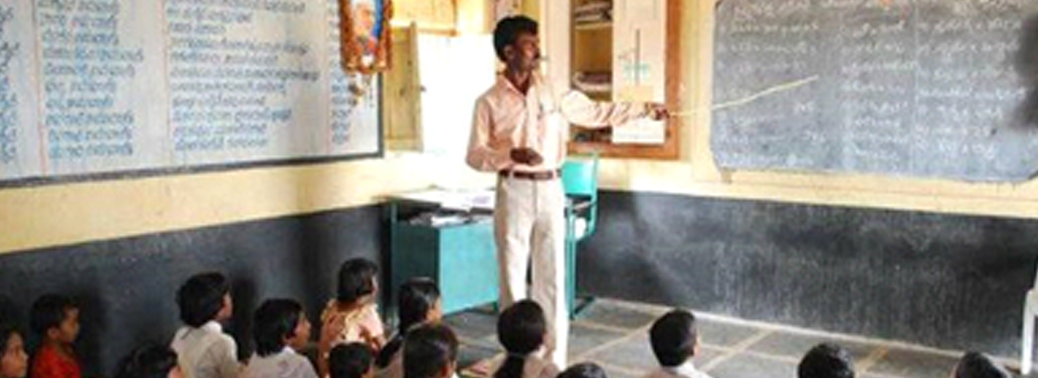
Why in News?
- The Supreme Court held it unconstitutional to provide 100% reservation for tribal teachers in schools located in Scheduled Areas across the country.
Observations of SC:
- It is an obnoxious idea that tribals only should teach the tribals. When there are other local residents, why they cannot teach is not understandable.
- The action defies logic and is arbitrary. Merit cannot be denied on the whole by providing reservation.
- Citizens have equal rights, and the total exclusion of others by creating an opportunity for one class is not contemplated by the founding fathers of the Constitution of India
- The court held that 100% reservation is discriminatory and impermissible. The opportunity of public employment is not the prerogative of few.
- A 100% reservation to the Scheduled Tribes has deprived Scheduled Castes and Other Backward Classes also of their due representation.
- The court referred to the judgment, which caps reservation at 50%.
What does the Indira Sawhney Judgement says?
- In the famous Mandal case (Indra Sawhney v. Union of India 1992), the scope and extent of Article 16(4), which provides for reservation of jobs in favour of backward classes, has been examined thoroughly by the Supreme Court.
- Though the Court has rejected the additional reservation of 10% for poorer sections of higher castes, it upheld the constitutional validity of 27% reservation for the OBCs with certain conditions, viz,
- The advanced sections among the OBCs (the creamy layer) should be excluded from the list of beneficiaries of reservation.
- No reservation in promotions; reservation should be confined to initial appointments only. Any existing reservation in promotions can continue for five years only (i.e., upto 1997).
- The total reserved quota should not exceed 50% except in some extraordinary situations. This rule should be applied every year.
- The ‘carry forward rule’ in case of unfilled (backlog) vacancies is valid. But it should not violate 50% rule.
- A permanent statutory body should be established to examine complaints of over-inclusion and under-inclusion in the list of OBCs.
- However, it is also to be noted that the Parliament has passed the 124th Constitution Amendment Bill (10% Quota Bill) to provide for 10% reservation for economically weaker sections (EWS) among the general category candidates in higher education and government employment in the year 2019.
What are the Key Features of the 124th Constitution Amendment Act?
- The act amended Articles 15 and 16of the constitution to provide for 10% reservation to economically weaker sections (EWS) among the general/unreserved category over and above the existing 49.5% quota in place for SC, ST, and OBCs.
- It seeks to insert a separate clause in article 16 after clause (5) as follows:
- “Nothing in this article shall prevent the State from making any provision for the reservation of appointments or posts in favour of any economically weaker sections of citizens other than the classes mentioned in clause (4), in addition to the existing reservation and subject to a maximum of 10% of the posts in each category”
- It seeks 10% reservation for the economically weaker sections of society in higher educational institutions, private institutions (aided or unaided by the state) except minority educational institutions under Article 30.
- It also provides reservation in posts for initial appointment in services under the state.
What are the Qualifying Criteria for 10% Quota?
- All members of whose family together earn less than Rs. 8 lakh per annum.
- Have less than 5 acres of agricultural land.
- Do not possess a residential flat of area 1000 sq. ft. or larger.
- Do not possess a residential plot of area 100 yards or more in notified municipalities and 200 yards or more in areas other than notified municipalities.
RIGHT OF AN ACCUSED TO BE DEFENDED
09, Mar 2020

Why in News?
- Recently, the Karnataka High Court observed that it is unethical and illegal for lawyers to pass resolutions against representing accused in court.
What is the Issue?
- This was after local bar associations had objected to four students arrested for sedition being defended in court.
- This is not the first time that bar associations have passed such resolutions, despite a Supreme Court ruling that these are “against all norms of the Constitution, the statute and professional ethics”.
What does the Constitution say about the right of an Accused to be Defended?
- Article 22(1) gives the fundamental right to every person not to be denied the right to be defended by a legal practitioner of his or her choice.
- Article 14 provides for equality before the law and equal protection of the laws within the territory of India.
- Article 39A, part of the Directive Principles of state policy, states that equal opportunity to secure justice must not be denied to any citizen by reason of economic or other disabilities, and provides for free legal aid.
What has the Supreme Court said about such Resolutions by Bar Associations?
- Supreme Court observations in 2010A S Mohammed Rafi vs State of Tamil Nadu case:
- Such resolutions are wholly illegal, against all traditions of the bar and against professional ethics.
- Every person, however wicked, depraved, vile, degenerate, perverted, loathsome, execrable, vicious or repulsive he may be regarded by society has a right to be defended in a court of law and correspondingly, it is the duty of the lawyer to defend him.”
- Such resolutions were “against all norms of the Constitution, the statute and professional ethics”, called these “a disgrace to the legal community”, and declared them null and void.
How are Professional Ethics of Lawyers Defined?
- The Bar Council of India has Rules on Professional Standards, part of the Standards of Professional Conduct and Etiquette to be followed by lawyers under the Advocates Act.
- An advocate is bound to accept any brief in the courts or tribunals, at a fee consistent with his standing at the Bar and the nature of the case. The Rules provide for a lawyer refusing to accept a particular brief in “special circumstances”.
- Last year, The Uttarakhand High Court clarified that these special circumstances refer to an individual advocate who may choose not to appear in a particular case, but who cannot be prohibited from defending an accused by any threat of removal of his membership of the Bar Association.
Have lawyers faced action for Such Resolutions?
- Uttarakhand High Court has previously held that, in such instances, the State Bar Council can initiate action against office-bearers of the Bar Association if such resolutions are passed.
- It also said that action under Section 15(2) of the Contempt of Courts Act, 1971, can be considered against advocates who interrupt court proceedings.
SUKHNA LAKE
05, Mar 2020
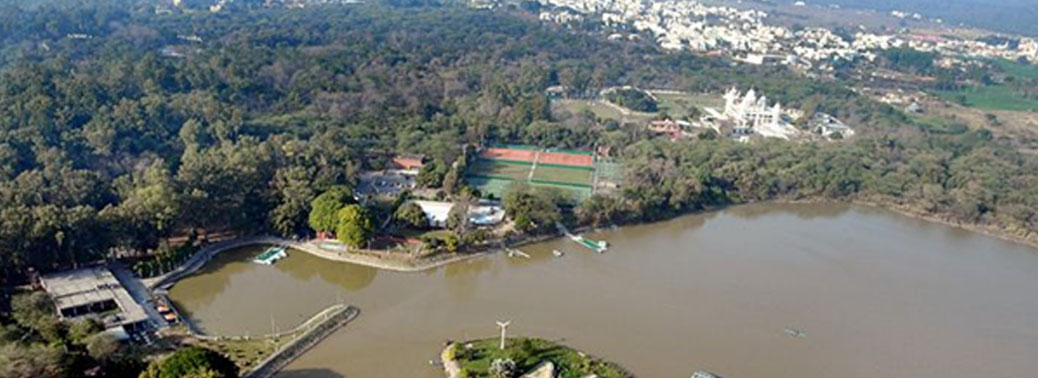
Why in News?
- Recently, the Punjab and Haryana high court has declared Sukhna Lake a “living entity” or “legal person” with rights, duties and liabilities of a living person.
About:
- The Chandigarh administration has been directed to declare it a wetland within a period of three months.
- It declared all citizens of Chandigarh as loco parentis (in the place of a parent) to save the lake from extinction.
- It is passed in a 2009 Suo motu petition initiated amid depleting water level in the lake.
- Chandigarh should ensure that the average capacity of the lake is increased by at least about 100-150 hectare by one-time large scale desilting.
- Punjab, Haryana and Chandigarh have also been told to lower the storage capacity of the check dams to ensure regular flow of water into the lake.
About Polluter Pays Principle:
- The States should have taken precautionary measures to save the catchment of Sukhna lake. It is the duty of the States of Punjab and Haryana to restore the catchment area. The State government has also failed to take precautionary measures to save the catchment area. The damage caused to the catchment area is enormous.
- Legal Entity: It means entity which acts like a natural person but only through a designated person, whose acts are processed within the ambit of law.
About Sukhna Lake:
- It is man-made lake which was built in 1958 by Le Corbusier, the architect of Chandigarh.
- It is located in the foothills of the Shivalik Hills; it was designed to collect runoff water from the Hills.
- It is in the process of being officially notified as a wetland, also has a nearby wildlife sanctuary that is home to sambar, pangolin, wild boars, red jungle fowl, cobras and other species.
- In Uttarkhand high court, justice Sharma was part of a bench in 2017, which declared the Ganga and Yamuna as living entities, a verdict that was later stayed by the Supreme Court.
- In 2018, a bench presided over by justice Sharma had accorded the status of “legal person or entity” to animals in Haryana.
- In 2019, the Punjab and Haryana High Court had ruled that all animals, birds and aquatic life in Haryana would be accorded the status of legal persons or entities.
SEDITION CASES – A HINDRANCE FOR RIGHT TO DISSENT
02, Mar 2020
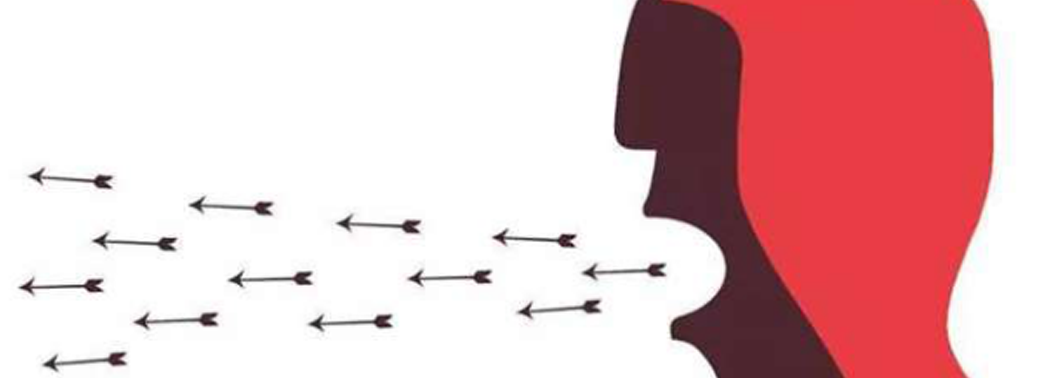
Context:
- Latest data from NCRB suggest that the sedition law remains as relevant as ever with sedition arrests increasing in recent years.
What is Sedition?
- Sedition, which falls under Section 124A of the Indian Penal Code, is defined as any action that brings or attempts to bring hatred or contempt towards the government of India and has been illegal in India since 1870.
Kedarnath Singh vs State of Bihar:
- Section 124A has been challenged in various courts in specific cases. The validity of the provision itself was upheld by a Constitution Bench in 1962, in Kedarnath Singh vs State of Bihar.
- That judgment went into the issue of whether the law on sedition is consistent with the fundamental right under Article 19 (1) (a)which guarantees each citizen’s freedom of speech and expression.
- The Supreme Court laid down that every citizen has a right to say or write about the government, by way of criticism or comment, as long as it does not “incite people to violence” against the government established by law or with the intention of creating public disorder.
What does the Data Shows?
- The National Crime Records Bureau (NCRB), though, has only been collecting separate data on sedition cases since 2014. In 2014, there were 47 cases of sedition but that number increased to 70 in 2018 (the latest year with available data).
- Compared to other offences, sedition remains a rare crime (it accounts for less than 0.01% of all IPC crimes).
- But within India, some parts are emerging as sedition hotspots. Assam and Jharkhand, for instance, with 37 sedition cases each, account for 32% of all sedition cases between 2014-2018.
- In 2018, there were 1,182 cases registered under UAPA(The Act gives special procedures to handle terrorist activities, among other things). And almost all these cases (92%) were concentrated in five states (Uttar Pradesh, Jammu and Kashmir, Assam, Jharkhand and Manipur).
Why sedition law is a Hindrance?
- Sedition leads to a sort of unauthorised self-censorship, for it produces a chilling effect on free speech.
- It suppresses what every citizen ought to do in a democracy — raise questions, debate, disagree and challenge the government’s decisions.
- Sedition systematically destroys the soul of Gandhi’s philosophy that is, right to dissent which is the core principle of democracy.
Why Right to Dissent is Essential?
- The Right to Dissent is an important addition of expressing one’s view, and on many of its most important constituent elements.
- It will enable practitioners and citizens to claim their rights and participate more effectively in the project of democracy.
- Disagreeing with each other is a fundamental human trait. There is not a single individual who does not disagree with something or the other all the Time.
- But gagging people through sedition cases strikes the people’s right to dissent and freedom of expression.
ALL FORM OF AGITATIONS BANNED IN SCHOOLS AND COLLEGES
29, Feb 2020
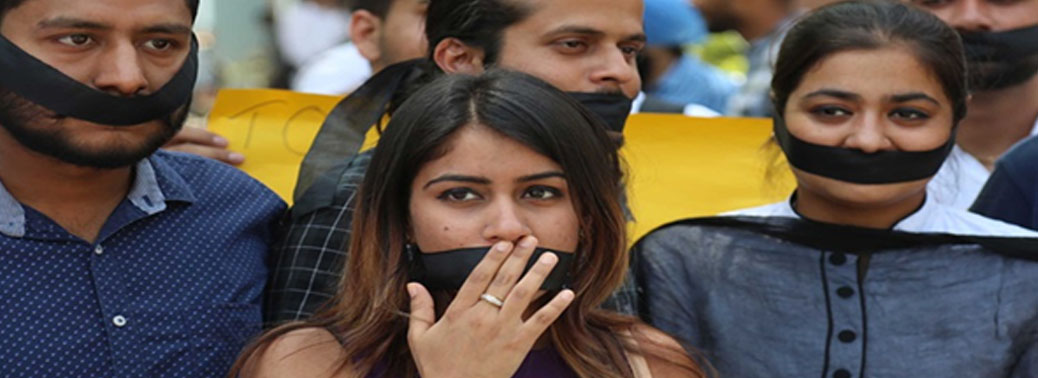
Why in News?
- The Kerala High Court has ruled recently that strikes, rallies and gheraos (prevent employers from leaving a place of work until certain demands are met) that affect regular classes should not be held on the campuses of schools and colleges.
What are the observations made by the Court?
- Those who are not participating in the strike have every right to attend their classes and no one should force them to participate in agitations that affect smooth conduct of classes.
- Academic institutions are only meant for studies and they should not be venues for strikes and protests.
- Nobody has the right to override a student’s right to study and action can be against those who indulge in strikes, rallies and gheraos that affect regular classes.
- Campuses can have peaceful discussions and sharing of thoughts in a peaceful manner.
- Students and others who force students to take part in the strike can be dealt with the law as it was the infringement of the basic right of the student.
What are the measures taken if the rule is Violated?
- If such incidents take place in schools, the authorities concerned, including the district educational officer, can take action against erring students. They can even summon the police to restore the peace in the campus.
- Similar measures should be taken on the college campuses as well. But, campuses can have peaceful discussions and sharing of thoughts on any issue. This, however, should not be done by causing inconvenience to students or lead to a strike.
What are earlier Verdicts Given?
- An earlier judgment had granted managements the authority to ban politics in their respective campuses.
- Another court order also stated that students should not be forcefully made to boycott classes.
- The court had also ruled earlier that police should give protection if the authorities ask for it.
- In the ‘Vijayakumar’ case, the court ruled that if criminal activities take place in college premises, police has the right to take action and enter campus without permission.
What are the Criticisms?
- The HC verdict has evoked sharp reactions from many student outfits and political parties which they said would affect students’ rights and their plan to carry out peaceful protests.
THE TUSSLE BETWEEN RIGHTS AND DUTIES
27, Feb 2020
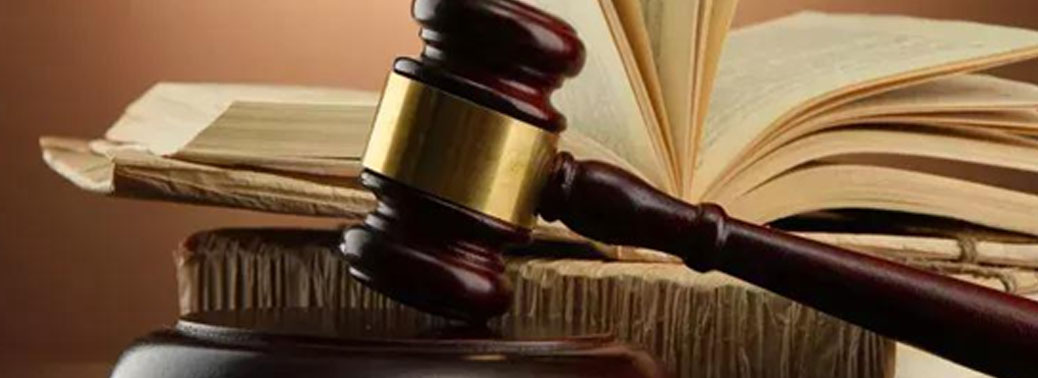
Context:
- The terminologies like ‘Duties of citizens’and the ‘anti-national’ (emanating from violation of these duties) have become the buzzwords of the political landscape in recent times.
What are Rights and Duties?
- Rights and duties are closely related and cannot be separated from one another. For every right, there is a corresponding duty.
- The State protects and enforces rights and it is the duty of all citizens to be loyal to the state. Thus a citizen has both Rights and Duties.
- In a constitutional democracy, the State provides rights and lays down duties for the citizenry, so that society can peacefully co-exist. However, sometimes State imposes such duties on its citizenry that infringes the rights of the marginalised sections of society.
- Mahatma Gandhi in Hind Swaraj observed that “Real rights are a result of the performance of duty”.
- According to Harold Laski, one man’s right is also his duty. For example, if the State gives the right to life to a citizen, it also imposes an obligation on him to not to expose his life to dangers, as well as to respect the life of others.
What does the Constitution say about Rights and Duties?
- Indian Constitution provides its citizens with the Fundamental Rights and lists the Fundamental Duties to be followed by them.
- The Constitution covers a broad spectrum of domains to protect the rights of the common man by introducing six rights as Fundamental Rights (Part III of the constitution).
- Similarly, the Fundamental Duties are also emphasized upon by the Constitution (Part IVA of the constitution).
Duties of an Individual in a Society:
- As citizens, there exists a wide range of duties that bind us in everyday life. These duties are owed both to the state and to individuals.
- There is a legal duty to pay taxes, to refrain from committing violence against fellow-citizens, and to follow other laws that Parliament has enacted.
- Breach of these legal duties triggers financial consequences (fines), or punitive measures like imprisonment.
- Duties follow a simple logic that, peaceful co-existence requires a degree of self-sacrifice, and that if necessary, this must be enforced through the set of sanctions.
Rights of an individual in a Society:
- Rights are formulated to ascertain twin principles viz. Anti-dehumanization and Anti-hierarchy. In India, this can be reflected in a chapter on Fundamental Rights in the constitution.
- Rights as a bulwark against dehumanization:
- Framers of the Indian Constitution while deliberating on Fundamental Rights were of the view that every human being should have access to basic dignity and equality that cannot be taken away the State.
- The necessity for Fundamental Rights in India originated from the experiences under the colonial regime where Indians had been treated as subjects.
- For example, the colonial government declared some group of people as Criminal Tribes, who were treated as less than human.
- Rights as a stand against Hierarchy:
- Indian society has been divided on the lines gender, caste and religion.
- Fundamental Rights, at a basic level, ensure the protection of all the citizens, not only from the State but from the social majorities as well.
- For example, through guarantees against forced labour, against “untouchability”, against discriminatory access to public spaces, and others, fundamental rights sought to bring a transformation in the Indian society.
Why there is always a tussle between Duties and Rights?
- The major concern lies in the language of duties which is vague (as their interpretation is left at the discretion of the State).
- This makes ‘duties’ of the citizenry prone to be misused as a tool to impose the will of the State or the social majority on vulnerable sections.
How a duty should be imposed in a Society?
- Any duty imposed upon the citizens must comply with due process of law which holds that no person shall be deprived of life, liberty or property except in accordance with the explicit provisions of law and with due regard to his rights.
- Without the moral compass of rights and their place in the transformative constitutional scheme, the language of duties can lead to unpleasant consequences.
- Interpretation of ‘Duties’ and the debate around it should include the duties of those with power. Those with power should not use it to exploit those from whom they wield it.
- It is only after guarantee to all and ensuring them the full sum of humanity, dignity, equality, and freedom promised by the Constitution, that we can ask of them to do their duty.
VOTING RIGHTS OF PRISONERS
15, Feb 2020
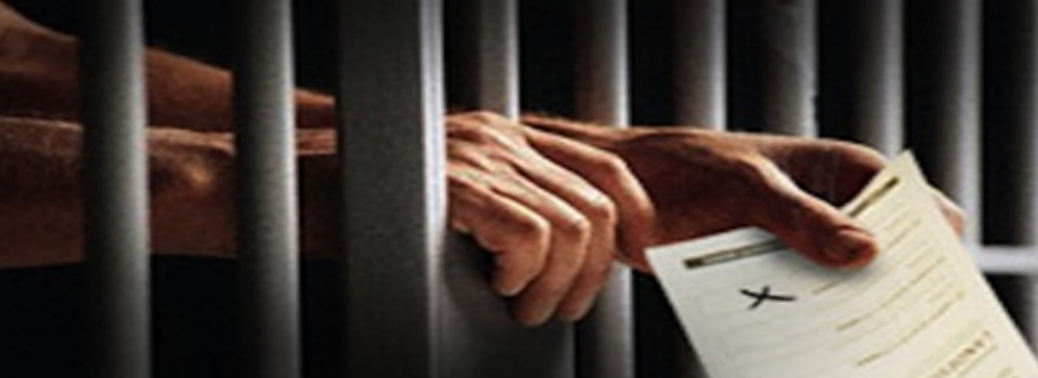
Why in News?
- The Delhi High Court has recently rejected a petition seeking voting rights for the prisoners.
Who can vote and Who Cannot?
- Under Section 62(5) of the Representation of the People Act, 1951, individuals in lawful custody of the police and those serving a sentence of imprisonment after conviction cannot vote.
- Under trial prisonersare also excluded from participating in elections even if their names are on electoral rolls.
What are the observations made by the Court?
- The right to cast vote is neither a fundamental right nor a common law right and is only provided by a statute.
- The right to vote provided under the statute — Representation of the People Act — was subject to restrictions imposed by the law, which does not allow prisoners to cast vote from jails.
Why Undertrials should be given Voting Rights?
- The present voting ban is criticized on the ground that it makes no offence-based or sentence-based classification— that is, prisoners are debarred from voting irrespective of the gravity of the offence they have committed, or the length of their sentence.
- It also makes no distinction between convicted prisoners, undertrials, and those in lawful Police Custody.
- Besides, a person is Innocent Until Proven Guilty by law. Despite this, it denies an under trial the right to vote but allows a detainee the same.
- The provision also violate the rights to equality, vote (Article 326)and is arbitrary. It is not a reasonable restriction.
What does the stats says?
- The ‘Prison Statistics India, 2014’ published by the National Crime Records Bureau, says there were 2, 82,879 undertrials and 1, 31,517 convicts lodged across 1,387 prisons in the country as on December 31, 2014.
- In Europe, Switzerland, Finland, Norway, Denmark, Ireland, the Baltic States, and Spain already allow prisoner voting.
- Countries like Romania, Iceland, the Netherlands, Slovakia, Luxembourg, Cyprus and Germany have opted for a middle path: Voting is allowed subject to certain permits and conditions such as the quantum of sentence served.
- They are only disenfranchised as an added penalty based on the gravity of the crime. Bulgaria allows for anyone sentenced to less than a decade to vote. In Australia, the limit is Five Years.

Need of an Hour:
- Undertrials should be allowed to vote. This is because there are many people, awaiting trial, who have spent more time in prison than the actual term their alleged crime merits. Their numbers are much bigger than convicts.
MANUAL SCAVENGING DEATH TOLL INCREASED
12, Feb 2020
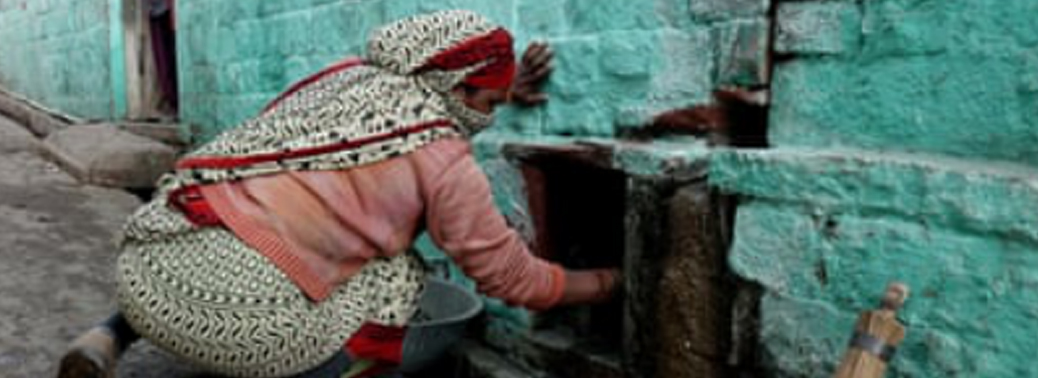
Why in News?
- According to the Social Justice and Empowerment Ministry, the death toll of Manual Scavengers has been increased by 62% from 68 in 2018 to 110 in 2019 (while cleaning septic tanks and sewers).
What is Manual Scavenging?
- Manual scavenging refers to the practice of manually cleaning, carrying, disposing or handling in any manner, human excreta from dry latrines and sewers.
- The practice of manual scavenging is linked to India’s caste system where so-called lower castes were expected to perform this job.
- Manual scavengers are amongst the poorest and most disadvantaged communities in India.
- Frequent deaths occur as manual scavengers don’t even have adequate tools and protective gear to clean the manhole. It often involves using the most basic of tools such as buckets, brooms and baskets.
What are the issues in Manual Scavenging?
- However, while manual scavenging for many may have ended as a form of employment, the stigma and discrimination associated with it lingers on.
- This makes it difficult for liberated manual scavengers to secure alternative livelihoods.
- People could once again return to manual scavenging in the absence of other opportunities to support their families.
- Correctly identifying manual scavengers remains a key challenge.
What are the Government Interventions?
- In 1993, the Government of India enacted the Employment of Manual Scavengers and Construction of Dry Latrines (Prohibition) Act.
- The act prohibited the employment of manual scavengers for manually cleaning
dry latrines and also the construction of dry toilets (that do not operate with a flush).
- It provided for imprisonment of up to a year and a fine.
- In 2013, this was followed by the Prohibition of Employment as Manual Scavengers and their Rehabilitation Act, 2013,which is wider in scope and importance, acknowledging the urgency of rehabilitating manual scavengers.
- The act seeks to reinforce this ban by prohibiting manual scavenging in all formsand ensures the rehabilitation of Manual Scavengers to be identified through a mandatory survey.
What does the new act says?
- Prohibits the construction or maintenance of insanitary toilets.
- Prohibits the engagement or employment of anyone as a manual scavengerviolations could result in a years’ imprisonment or a fine of INR 50,000 or both.
- Prohibits a person from being engaged or employed for hazardous cleaning of a sewer or a septic tank.
- Offences under the Act are cognizable and non-bailable.
- Calls for a survey of manual scavengers in urban and rural areas within a time-bound framework.
- A Supreme Court order in March, 2014, makes it mandatory for the government to identify all those who died in sewerage work since 1993 and provide Rs.10 lakh each as compensation to their families.
- The Government of India has adopted a two-pronged strategy of eliminating insanitary latrines through demolition and conversion into sanitary latrines and developing a comprehensive rehabilitation package for manual scavengers through a survey.
- A comprehensive Rehabilitation Package has recently been put together that includes livelihoods and skill development, access to education for children of former manual scavengers and alternate livelihoods.
What are the Other Initiatives?
- The establishment of National Safai Karamcharis Commission (NFKC)to work for the welfare and upliftment of the Safai Karamcharis.
- Delhi Government has launched the Mukhya Mantri Septic Tank Safai Yojana recently – a scheme aimed at helping people in waste management and ensuring the safety of sanitation workers.
- According to the government, the Delhi Jal Board(DJB) will deploy 80 trucks along with trained staff to ensure free cleaning and maintenance of septic tanks across Delhi.
Way Forward:
- The Swachh Bharat Abhiyan should make expansion of the sewer network a top priority and come up with a scheme for scientific maintenance that will end manual cleaning of septic tanks.
- Schemes like Mukhya Mantri Septic Tank Safai Yojana should be implemented properly throughout the nation.
- The Ministry of Drinking Water and Sanitation in its manual of 2016 on toilet design has noted that in rural areas, mechanical pumps to clear septic tanks are not available. It should be met before more lives are lost.
SC UPHOLDS CHANGES TO SC/ST ATROCITIES LAW
11, Feb 2020

Why in News?
- The Supreme Court recently upheld the constitutional validity of the SC/ST Amendment Act, 2018 which rules out anticipatory bail in case of atrocities against SC/STs.
What is Anticipatory Bail?
- Under Indian criminal law, there is a provision for anticipatory bail under Section 438 of the Criminal Procedure Code.
- Law Commission of India in its 41st report recommended incorporating this provision in procedure code.
- This provision allows a person to seek bail in anticipation of an arrest on accusation of having committed a non-bailable offence.
- Anticipatory bail is a direction to release a person on bail, issued even before the person is arrested.
- It is only issued by the Sessions court and High Court.
SCs and the STs (Prevention of Atrocities) Amendment Act, 2018:
- The 2018 amendment act was proposed to nullify the safeguards proposed by the Supreme Court. The amendments proposed were:
- Investigating officer will not require the approval of any authority for the arrest of an accused.
- Preliminary enquiry will not be required for the registration of a First Information Report against a person accused under the Act.
- Persons accused of committing an offence under the Act cannot apply for Anticipatory Bail.
- To avoid any ambiguity the act proposes that these provisions apply despite any judgments or orders of a court that provide otherwise. These amendments to the prevention of atrocities act were questioned in the Supreme Court as ultra vires (beyond the powers).
What are the Supreme Court’s Rulings?
- The SC in Subhash Kashinath Mahajan Vs State of Maharashtra on March 2018 held that no absolute bar against the anti-atrocities law if no prima facie case is made out or if judicial scrutiny reveals the complaint to be prima facie mala fide.
- Now the Parliament introduced the controversial amendment in 2018. It inserted Section 18A in the original Scheduled Castes and Scheduled Tribes (Prevention of Atrocities) Act of 1989.
- Section 18 A reaffirms the original legislative intention that Section 438 CrPC (pre-arrest bail) is not applicable to accused booked under the atrocities law.
- In February 2020 judgement in Prathvi Raj Chouhan Case, the SC has upheld Section 18A and said that the High Courts will have an “inherent power” to grant anticipatory bail in cases in which prima facie an offence under the 1989 law is not made out.
What is the Governments Argument?
- The government had enacted the Amendments, saying the Scheduled Castes and Scheduled Tribes continued to face the same social stigma, poverty and humiliation which they had been subjected to for centuries.
Why such rulings were given by SC?
- The judgment had diluted the original 1989 legislation, saying they were using its provisions to file false criminal complaints against innocent persons.
Need for an hour:
- Anticipatory Bail in this case should be used sparingly and in very exceptional cases. Otherwise Miscarriage of Justice may result and the intention of Parliament to protect SCs and STs will be defeated.
RESERVATIONS IN PROMOTION IS NOT A FUNDAMENTAL RIGHT, SAYS SC
11, Feb 2020
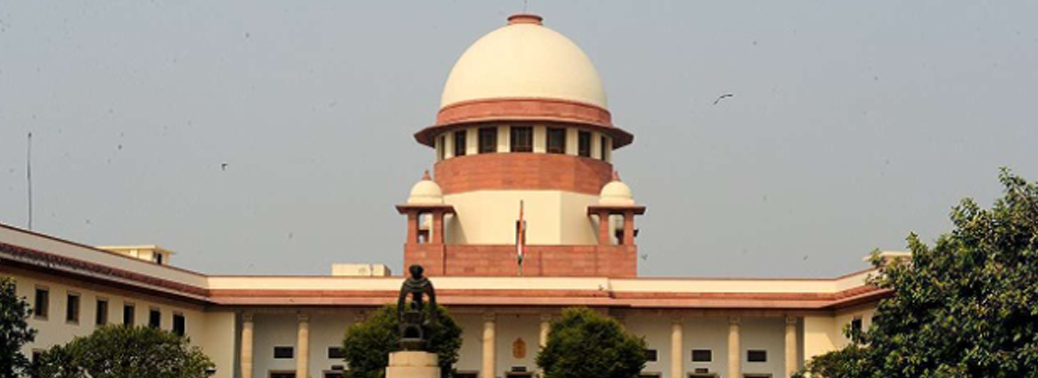
Why in News?
- The Supreme Court has recently ruled that the states are not bound to provide reservation in appointments and promotions and that there is no Fundamental Right to Reservation in Promotions.
What are the Constitutional Provisions Related to Reservations?
- Article 16(4) empowers the state to make any provision for the reservation of appointments or posts in favour of any backward class of citizens which, in the opinion of the state, is not adequately represented in the services under the state.
- By way of the 77thAmendment Act, a new clause (4A) was added to Article 16, empowering the state to make provisions for reservation in matters of promotion to Scheduled Caste/Scheduled Tribe Employees if the state feels they are not adequately represented in services.
- Article 335 recognises that special measures need to be adopted for considering the claims of SCs and STs in order to bring them to a level-playing field.
What are the Court’s Earlier Rulings?
- In its landmark 1992 decision in Indra Sawhney vs Union of India, the Supreme Court had held that reservations under Article 16(4) could only be provided at the time of entry into Government Service but not in matters of Promotion.
- It added that the principle would operate only prospectively and not affect promotions already made and that reservation already provided in promotions shall continue in operation for a period of five years from the date of the Judgment.
- It also ruled that the creamy layer can be and must be excluded.
- On June 1995, Parliament adopted the seventy-seventh amendment by which clause (4A) was inserted into Article 16 to enable reservation to be made in promotion for SCs and STs.
- The validity of the seventy-seventh and eighty-fifth amendments to the Constitution and of the legislation enacted in pursuance of those amendments was challenged before the Supreme Court in the Nagaraj case.
- Upholding the validity of Article 16 (4A), the court then said that it is an enabling provision. “The State is not bound to make reservation for the SCs and STs in promotions. But, if it seeks to do so, it must collect quantifiable data on three facets — the backwardness of the class; the inadequacy of the representation of that class in public employment; and the general efficiency of service as mandated by Article 335 would not be affected”.
- The court ruled that the constitutional amendments do not abrogate the Fundamentals of Equality.
What is the Supreme Court’s Recent Ruling?
- Reservation in promotion in public posts cannot be claimed as a Fundamental Right.
- Articles 16 (4) and 16 (4-A) of the Constitution does not confer individuals with a fundamental right to claim reservation in promotion.
- It only empowers the State to make a reservation in matters of appointment and promotion in favour of the backward class and SC’s/ST’s respectively, only if in the opinion of the State they are not adequately represented in the services of the State.
- State Governments are not bound to make a reservation and have discretion in providing reservations.
- The judgment also noted that even the courts could not issue a Mandamus directing the States to provide reservation.
What is its Significance?
- The provision is an aid of fostering the real and substantive right to equality to the SCs and STs.
- It protects the authority of the Union and the States to adopt any of these special measures, to effectuate a realistic (as opposed to a formal) consideration of their claims to appointment in services and posts under the Union and the states.
- It also emphasizes that the need to maintain the efficiency of administration cannot be construed as a fetter on adopting these special measures designed to uplift and protect the welfare of the SCs and STs.
Need of an Hour:
- Centuries of discrimination and prejudice suffered by the SCs and STs in a feudal, caste-oriented societal structure poses real barriers of access to opportunity.
- The provision contains a realistic recognition that unless special measures are adopted for the SCs and STs, the mandate of the Constitution for the consideration of their claim to appointment will remain illusory.
SEEKING A MORE PROGRESSIVE ABORTION LAW
11, Feb 2020
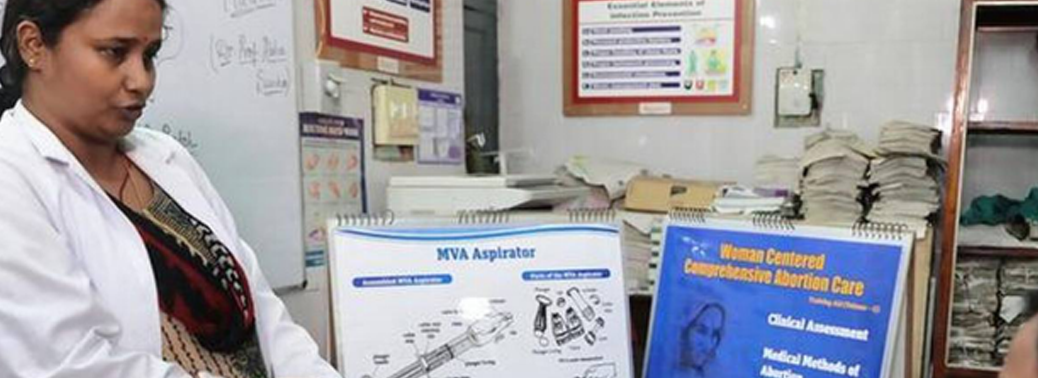
Why in News?
- Recently the Union Cabinet has approved the Medical Termination of Pregnancy Amendment Bill 2020. This article flags some of the major concerns accorded with the Bill.
Background Information:
Salient features of Proposed Amendments:
1. Increased gestation period for Termination of Pregnancy:
- The upper gestation limit has been increase from 20 to 24 weeks for special categories of women including survivors of rape, victims of incest and other vulnerable women (like differently-abled women, Minors) etc.
2. For Other Women :
- For termination of pregnancy up to 20 weeks: Opinion of 1 doctor is required
- For termination of pregnancy up to 20 weeks – 24 weeks: Opinion of 2 doctors is Required.
3. No limit for Foetal Abnormalities: In case of detection of foetal abnormalities, upper gestation limit does not to apply. However this should be declared by a Medical Board constituted for the purpose.
Concerns with the Above Amendments:
No Autonomy for the Women:
- Under the MTP Act, the final say on abortion is taken by the healthcare providers and not the women.
- This is unlike the abortion laws in 67 countries, including Iceland, France, Canada, South Africa and Uruguay, where a woman can get an abortion ‘on request’.
- This may put additional mental stress as well as the financial burden on the women for getting a doctor’s approval.
Biased against Unmarried Women:
- According to the Act, where a pregnancy occurs due to failure of any birth control device or method used by any “married woman or her husband”, it may cause “grave injury” to the mental health of the pregnant woman and the woman may opt for termination.
- This is not extended to unmarried women where the final decision rests with the doctor and not the woman herself.
Narrowed Choice in case of Foetal Abnormalities:
- In case of foetal abnormalities the law allows termination in cases post 20 weeks only where it is necessary to save the life of the mother.
- The unwanted pregnancy may also lead to mental agony and termination is not allowed for such reasons in case of foetal abnormalities post 20 weeks.
- Further the decision for termination in case of foetal abnormalities lies with the Medical Board. This may cause unnecessary delays which only increase the risks associated with a late abortion.
POOR COMPENSATION RATE FOR TRAFFICKING SURVIVORS, FINDS REPORT
11, Feb 2020

Why in News?
- Based on the data of the NCRB, a non-profit organisation named “Sanjog” released a report on compensation awarded to survivors of trafficking the country, which highlighted the poor status of compensation awarded during 2011- 2019.
- The report titled ‘UNCOMPENSATE VICTIMS’ was released by Sanjog, a technical resource organisation that works to combat trafficking and gender-based violence.
Key Points:
- The report highlights that NCRB put the total number of cases of human trafficking at 35,983, but only 82 (0.2%) victims were awarded compensation.
- Following the national outrage over the Nirbhaya gang-rape case (2012), the government had announced ₹1,000 crore fund to be used to combat sexual violence against persons – children or adults.
- The amount of compensation to victims of trafficking varied from State to State, hence the Supreme Court had directed the National Legal Services Authority (NALSA) to frame a standardised victim compensation scheme.
- The study also reflects the number of trafficking survivors who applied for the victim compensation scheme to their respective legal services authority.
Reasons behind the Low Rate of Compensation:
- 1. Lack of awareness among the victims.
- 2. Low investment on part of legal aid
- 3. Role of Legal Services Authorities: The study suggests grave inconsistencies on the part of legal services authorities, which have provided the data.
- District Legal Service Authority (DLSA) and State Legal Services Authority (SLSA)’s response to the claims has been slow, and they hold the survivors’ claims with suspicion – often putting the burden of proof on the survivors themselves.
- There is a lack of initiative on the part of legal services authorities.
- Survivors were able to apply only when they were informed and a private lawyer was involved in assisting them in filing the application for victim compensation.
- Manipur’s 2019 victim compensation scheme does not even have an entry in the schedule corresponding to human trafficking.
- 4. Existence of Multiple Agencies:From their rescue till rehabilitation, the survivors are in touch with multiple agencies but none of them takes any steps to help them get compensation.
Victim Compensation Funds in India:
- 1. Central Victim Compensation Fund Scheme:
- The Section 357 of Code of Criminal Procedure (CrPC) has provisions to compensate victims who suffered because of a crime.
- Based on this Provision the government introduced the Central Victim Compensation Fund (CVCF) scheme to enable support to victims of rape, acid attacks, human trafficking and women killed or injured in the cross border firing.
- It is also known as the Victim Compensation Scheme. So far 24 states and 7 UTs have formulated the Victim Compensation Scheme.
- 2. Nirbhaya Fund:
- The Nirbhaya Fund Framework provides for a non-lapsable corpus fund for the safety and security of women.
- It is administered by the Department of Economic Affairs (DEA) of the Ministry of Finance.
- It can be utilized for projects and initiatives related to women safety.
- Nirbhaya fund is being used in the Central Victim Compensation Fund (CVCF).
ACCESSIBLE INDIA CAMPAIGN
10, Feb 2020

Why in News?
- Social Justice and Empowerment minister has recently reviewed the number of buildings of Central PWD and websites of MeITY that has been made accessible under Accessible India Campaign.
- The Campaign has been launched to make public offices, transport and websites accessible to Persons with Disabilities (PwD).
Accessible India Campaign:
- AIC is the nationwide flagship campaign of the Department of Empowerment of Persons with Disabilities (DEPwD), Ministry of Social Justice and Empowerment.
- The aim of the Campaign is to make a barrier free and conducive environment for “Divyangjans” all over the country.
- The campaign has the vision to build an inclusive society in which equal opportunities are provided for the growth and development of Persons with Disabilities (PwDs) so that they can lead productive, safe and dignified lives.
Background
- Launched on International Day of Persons with Disabilities (3rd December) in 2015.
- Later Rights of Persons with Disabilities Act, 2016 replaced the Persons with Disabilities Act, 1995.
- United Nations Convention on the Rights of Persons with Disabilities (UNCRPD),to which India is a signatory, under Article 9 casts obligations on the Governments for ensuring to PwDs accessibility to
- Information
- Transportation,
- Physical Environment
- Communication Technology
- Accessibility to Services as well as emergency services.
Three Components of AIC
1. Built Environment Accessibility
2. Transportation System Accessibility
3. Information and Communication Eco-System Accessibility
Targets originally entailed under the three components:
- Making 50% of all the government buildings of National Capital and all the State capitals fully accessible by December 2018.
- Completing accessibility audit of 50% of government buildings and making them fully accessible in 10 most important cities/towns of States by December 2019.
- Ensuring that 50% of railway stations in the country are converted into fully accessible railway stations by March 2018.
- Ensuring that 25% of Government owned public transport carriers in the country are converted into fully accessible carriers by March 2018.
- Conducting accessibility audit of 50% of all government (both Central and State Governments) websites and converting them into fully accessible websites by March 2017.
ARTICLE 131 – SPECIAL POWERS OF SUPREME COURT
29, Jan 2020
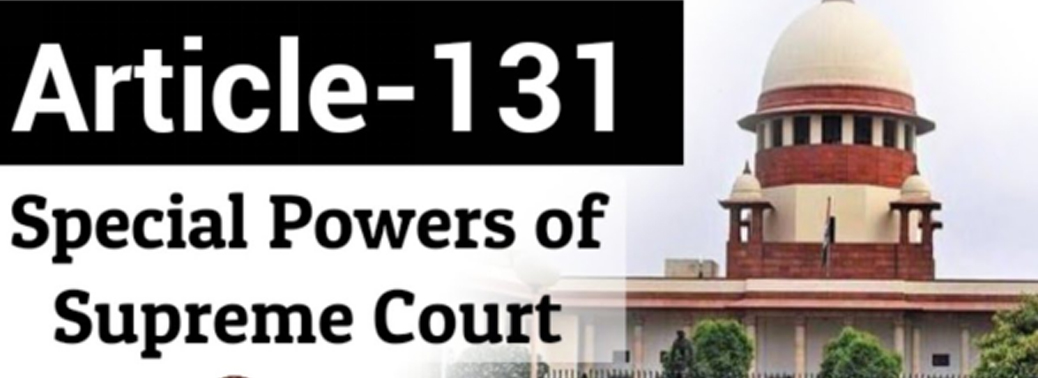
Context:
- Recently, the LDF government in Kerala, became the first state government in the country, that moved the Supreme Court against the Citizenship Amendment Act (CAA). The Kerala government sought that the act be declared as violative of the Doctrine of Basic structure—principle of equality, freedom and secularism.
Citizenship Amendment Act (CAA), 2019:
- The CAA 2019 grants Indian citizenship to persecuted non-Muslim minorities viz. Hindus, Sikhs, Buddhists, Jains, Parsis and Christians who migrated to India from Afghanistan, Pakistan and Bangladesh on or before December 31, 2014.
Article-131: Original Jurisdiction
- The SC (as a federal court of India) possesses Original jurisdiction to decide the disputes arising between different units of the Indian Federation like:
- Centre and one or more states; or
- Centre & any state(s) on one side and one or more states on the other; or
- Two or more states.
The Applicability of the Article 131:
- The dispute must involve a question of law or fact on which the existence/extent of a legal right depends. Thus, the questions of political nature are excluded from it.
- Any suit brought before the Supreme Court by a private citizen against the Centre or a state cannot be entertained under this article.
- Also, the provisions mentioned in this Article are subject to other provisions of the Constitution. For example, in cases of water disputes between two or more states, the remedy to such conflicts is entertained under Article 262 of the Constitution and not under Article 131.
Part XI and the Seventh Schedule:
- Part XI (Articles 245-263) of the Indian Constitution consists of articles that describes the legislative, administrative, and financial relations between the Union and the States.
- Article 246:Defines the legislative subject matters on which the Parliament and the State Legislatures can make laws. These matters are enumerated in the 3 lists of Seventh Schedule.
- Union List:
- Parliament has exclusive powers to make laws on the subjects mentioned in the Union List.
- Parliament is also empowered to make laws for territories which presently do not form part of any state.
- State List:
- State Legislature (in normal circumstances) has exclusive powers to make laws on subjects enumerated in the State List.
- Concurrent List:
- Both Parliament & State Legislature can make laws on items described in the Concurrent List.
- However, in case of any conflict, the Central law prevails.
Exceptions:
- Under 5 circumstances, the Parliament is empowered to make laws on State List subjects –
- If a resolution is passed to that effect by the Rajya Sabha (Article 249),
- During National emergency,
- President’s Rule,
- If requested by two or more States,
- Under obligation to implement an International Treaty.
Articles 256 and 365:
- Article 256 of the Constitution states that the executive power of every State must ensure compliance with the laws made by the Parliament.
- Kerala has said in its suit that, under CAA it would be compelled to comply with its provisions because of Article 256.
- Kerala considers CAA to be arbitrary, unreasonable, irrational and violative of Fundamental Rights.
- If it does not follow the same, the repercussions could be seen in the form of Article 365.
- Article 365: In case of failure to comply with, or to give effect to, directions given by the Union, the President is empowered to make a decision thinking that a situation has arisen in which the government of the State cannot be carried on in accordance with the provisions of this Constitution. Hence, the President’s rule could be enacted.
Can Supreme Court test the validity of a law under Article 131?
- Legislative Competence:A law must be challenged in the Court if it is in excess of the legislative competence of the framing authority.
- Violation of Rights:The Court can check whether a particular law violates which kind of rights- whether Fundamental or Constitutional rights?
- Violation of the Constitution:The Court can test a law if it is ultra-vires the Constitution. In this regard, there are following Doctrines which have been evolved by the SC over a period of time:
- Doctrine of Basic Structure:The Doctrine of Basic Structure signifies the basic features of the Constitution, which cannot be changed/amended, as they form the foundation of the Constitution on which its core principles/existence stands.
- Doctrine of Pith & Substance:Pith means ‘true nature’ or ‘essence of something’ and Substance means ‘the most important or essential part of something’.
- Doctrine of Colorable Legislation:It comes into play when a Legislature does not possess the power to make laws upon a particular subject but it indirectly makes law on it.
Related Cases:
- West Bengal Government’s Case
- In 2017, the SC proclaimed that the State government cannot ask for any remedy related to Fundamental rights.
- The case was filed under Article 32 of the Constitution challenging the validity of the ‘Aadhaar Act’.
- The Court also held that, “Fundamental rights are available to individuals: citizens or non-citizens against the State (under Article 32 or Article 226) and not to the State entities.”
- Chhattisgarh Government’s Case
- Chhattisgarh government also recently filed a suit in SC (under Article 131) against the National Investigation Agency (NIA) Act, 2008.
- It claimed that ‘Police’ & ‘Public Order’ are the state subjects and States have the ultimate authority to make laws related to it.
- NIA Act, 2008 takes away the state’s power to investigate offences categorised as ‘scheduled offences’ under the Act, though they are within State’s jurisdiction.
- West Bengal’s case : Rights in Mines in Coal-bearing Areas:
- A case was filed against the Central law (Coal Bearing Areas (Acquisition and Development) Act, 1957) under Article 131.
- The State claimed that the Act did not apply to lands vested in or owned by the State, and even if it applied to such lands, the Act was beyond the legislative competence of the Parliament.
- In 1962, the SC entertained the West Bengal’s petition under Article 131 as the State had legal rights in this case, however, it also upheld the Central law.
Conflicting Judgments:
- There have been two conflicting judgments given by the Supreme Court on whether a State can file an original suit under Article 131 to challenge the constitutionality of a central law:
- In the State of Madhya Pradesh vs Union of India, 2011 case, the issue dealing with electricity was raised and the Court held that States cannot challenge a central law under Article 131.
- In the State of Jharkhand Vs State of Bihar, 2015 case, the SC took the opposite stance and referred the question of law to a larger Bench for final determination.
Way Forward:
- Politically motivated pleas must be abandoned and must not be entertained by the SC. Instead, determined efforts must be made to resolve them within the political arena.
- Representatives of states must speak up in the Parliament when the laws are being framed & passed rather than making hue and cry later.
- Federalism is a two-way street. Both the parties to it must respect the boundaries of one another that has been drawn by the Constitution.
- The States must restrain themselves while defying the implementation of Central laws, if done it might lead to the breakdown of constitutional machinery.
- Hence, States are bound to implement the Central laws until and unless they are declared as void and unconstitutional by the Higher Courts of the country.
10% RESERVATION FOR EWS
08, Jan 2020
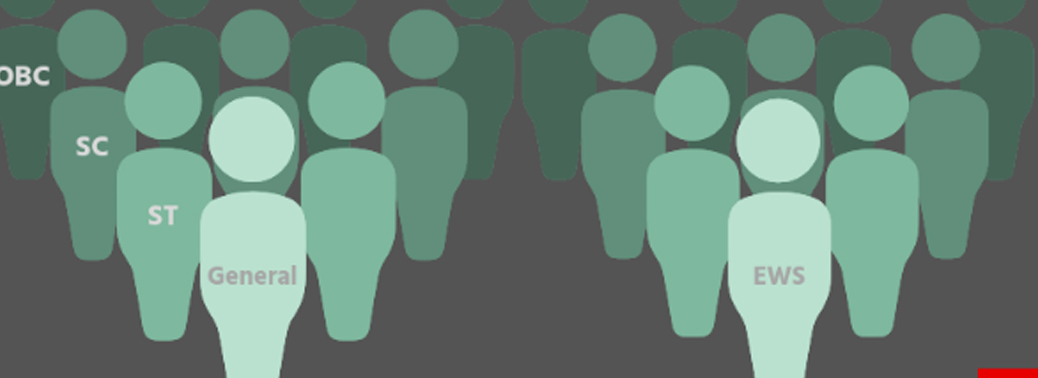
Why in News?
- The Centre has informed the Supreme Court that it would be the States’ prerogative to provide 10% economic reservation in government jobs and admission to Education Institutions.
About the 103rd Constitutional Amendment Act:
- One Hundred and Twenty- Fourth Amendment Bill was introduced to extend 10% quota to “the economically weaker sections in the general category that are not covered by any of the existing schemes of reservation”.
- The bill was designed to amend the Constitution to extend 10% reservation in direct recruitment in government jobs and for admission in higher educational institutions to “economically weaker”sections among all castes and communities, Christians and Muslims included, who are not eligible under the already Existing Quotas.
Who were Included in EWS?
- Annual Household Income below Rs 8 lakh.
- Agriculture land below 5 acres.
- Residential house below 1000 Sq.
- Residential plot below 100 yards in notified municipality.
- Residential plot below 200 yards in non-notified municipality area.
Why Constitution Amended?
- It was amended because the issue was related to the Fundamental rights Articles 15 (prohibition of discrimination on grounds of religion, race, caste, sex or place of birth) and 16 (equality of opportunity in matters of public employment) of the Constitution.
- The amendment was ratified in both Lok Sabha and Rajya Sabha, by two thirds of members present and voting.
What are its Implications?
- The 10% reservation will be in addition to the existing cap of 50% reservation for the Scheduled Castes, Scheduled Tribes and the Other Backward Classes, taking total reservation to 60%.
- The quota targets the poor among the upper castes. This will be over and above 50% mandated by Constitution and hence the need for Constitution amendment Bill.
What was SC’s Response?
- A nine-judge Constitution Bench of the Supreme Court in the Indira Sawhney case of 1992 specifically answered the question “whether backward classes can be identified only and exclusively with reference to the economic criterion.”
- The constitution bench had categorically ruled that a backward class cannot be determined only and exclusively with reference to economic criterion.
- The bench had held that economic criterion may be a consideration or basis along with, and in addition to, social backwardness, but it can never be the sole criterion.
- The bench in its judgement declared 50% quota as the rule unless extraordinary situations “inherent in the great diversity of this country and the people” happen.
- Even then, the court stated that extreme caution is to be exercised and a special case should be made out.
What is the Current Issue?
- The Centre said in an affidavit “Whether or not to provide reservation to the economically weaker section in appointment to State government jobs and admission to State government educational institutions, as per provisions of the newly inserted Articles 15(6) and 16(6) of the Constitution, is to be decided by the State government concerned”.
- The Centre also added that Department of Social Justice and Empowerment “has no role in deciding the reservation policy of any State government”.
RIGHT TO INFORMATION (RTI) ACT
19, Dec 2019

Why in News?
- Recently, Chief Justice of India has stated that there is backlog in RTI filing because of Information Commission vacancies.
About Central Information Commission
- It consists of the Central Information Commissioner and more than ten Information commissioners.
- The President of India appoints the Chief Information commissioner and the information commissioners on the recommendation of the committee consisting of the Prime Minister as chairperson, the leader of the opposition in the Lok Sabha and union cabinet ministers nominated by the Prime Minister.
- It has a tenure of five years or until they attain age of 65 years.
RTI Act 2005
- The Right to Information Act 2005 or RTI 2005, came into force in order to encourage a corruption free, transparent and accountable form of government in which the citizens feel a sense of power and safety.
Provisions:
- Under the Act, a citizen can demand from any public or government authority any information as long as it does not pertain to national security and defence or some personal information and the authority is supposed to respond within a period of 30 days to the application.
RTI Act Information Exclusions:
- Under section 8 of the RTI Act, 2005 Govt/public authorities are exempted from sharing following information:
- Affecting the Sovereignty, Integrity, Security, Strategic interest, Scientific interest or Economic interest of the State of India
- Affecting relation of State of India with Foreign State
- Forbidden by any court of law in India
- Breach of privilege of State assembly or Parliament of India
- Intellectual Property Rights, Copyright, Commercial Confidence or Trade Secrets
- Available to a person in his fiduciary relationship, unless disclosure is required in larger public interest
- Received from foreign Government
- Risk the life or physical safety of any person
- Impact or obstruct legal investigation
- Minutes of Union Cabinet meeting including discussion between Ministers, Secretaries or Govt officers
- Personal information that is breaches of Privacy
Features of the Act:
- Section- 2 (f):“Information” means any material in any form, including Records, Documents, Memos, e-mails, Opinions, Advices, Press releases, Circulars, Orders, Logbooks, Contracts, Reports, Papers, Samples, Models, Data material held in any electronic form and information relating to any private body which can be accessed by a Public Authority under any other law for the time being in force.
- Section- 2(j): “Right to Information” means the right to information accessible under this Act which is held by or under the control of any public authority and includes the right to:
- Inspection of work, documents, records;
- Taking notes, extracts or certified copies of documents or records;
- Taking certified samples of material;
- Obtaining information in the form of diskettes, floppies, tapes, video cassettes or in any other electronic mode or through printouts where such information is stored in a computer or in any other device.
- Section 4:It requires Suo motu disclosure of information by each public authority. However, such disclosures have remained less than satisfactory.
- Section 6(2): “An applicant making request for information shall not be required to give any reason for requesting the information or any other personal details except those that may be necessary for contacting him.”
- Section 8(1)(j):“The information which cannot be denied to the Parliament or a State Legislature shall not be denied to any person” under the RTI Act.
Major Issues related to RTI:
- Policy paralysis due to RTI.
- The increase in RTI filings makes the bureaucrats to fear about the RTI revelations, which makes them to delay the decisions resulting in policy paralysis.
- Numerous vacancies in Information Commission
- Government failing to fill the vacancies in information commissions timely leads to piling up of backlogs.
- Issue of “locus standi”
- RTI act doesn’t require “locus standi” to apply for information, which result in increase of irresponsible RTI’s, which increase the burden on existing personnel.
What is locus standi?
- Locus standi is the ability of a party to demonstrate to the court sufficient connection to and harm from the law or action challenged to support that party’s participation in the case.
Way Ahead:
- The transparency audit by the government found poor disclosures among most of central Public Authorities. By increasing disclosures and filling vacancies, the RTI load can be eased.
- If the locus standi of applicants is made a criterion then the rejection rate will rise significantly.
- By filing the vacancies in CIC and IC, the issues related to RTI will be resolved
RIGHT TO PROTEST UNDER ARTICLE 19
17, Dec 2019
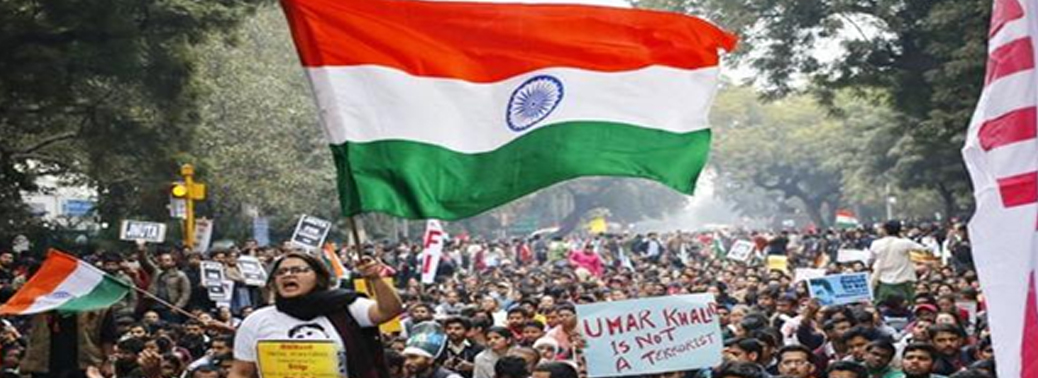
Why in News?
- CJI Sharad Arvind Bobde recently stated that people have right to protest, but they should stop riot.
What does the Constitution say?
- The right of citizens to protest peacefully is guaranteed by the Constitution of India.
- Articles 19(1)(a) and 19(1)(b) give to all citizens the right to freedom of speech and expression, and to assemble peaceably and without arms.
- However, under Articles 19(2) and 19(3), the right to freedom of speech is subject to “reasonable restrictions in the interests of the sovereignty and integrity of India, the security of the State, friendly relations with foreign States, public order, decency or morality or in relation to contempt of court, defamation or incitement to an offence”.
What are the Legal Provisions?
- The legal provisions and avenue available to police for handling agitations, protests, and unlawful assemblies are covered by the Code of Criminal Procedure (CrPC), 1973, the Indian Penal Code (IPC), 1860, and The Police Act, 1861.
- The CrPC’s Sections 129-132 deal with “Dispersal of assembly by use of civil force”, use of the armed forces in situations of civil unrest, and protection against prosecution for acts done under these sections.
- The IPC’s Sections 141-158 deal with unlawful assembly, and the responsibilities, liabilities, and punishments related to this offence.
What are the Judicial Guidelines?
- In ‘Karam Singh vs. Hardayal Singh and Ors 1979’ the High Court of Punjab and Haryana underlined that before any force can be used, three prerequisites are to be satisfied.
These were:
- Firstly,there should be an unlawful assembly with the object of committing violence or an assembly of five or more persons likely to cause a disturbance of the public peace.
- Secondly,such assembly is ordered to be dispersed and
- Thirdly,in spite of such orders to disperse, such assembly does not disperse.
International Provision for Right to Protests:
- The ‘Basic Principles on the Use of Force and Firearms by Law Enforcement Officials’ was adopted by the Eighth United Nations Congress in Havana, 1990.
- It resolved that law enforcement officials, in carrying out their duty, shall, as far as possible, apply non-violent means before resorting to the use of force and firearms.

RIGHT TO DISSENT – A CORE PRINCIPLE OF DEMOCRACY
07, Dec 2019

Why in News?
- Romila Thapar, an eminent Historian has said that Right to Dissent is a core principle of Democracy.
Meaning of Dissent:
- Dissent means “a strong difference of opinion on a particular subject, especially about an official suggestion or plan or a popular belief”.
- India’s constitutional democracy is predicated on the people’s right to call state power to account.
- Even at Household level also, there is no family without dissent between parents and the children, or between the siblings. A family which learns to deal with dissent rather than authoritatively dismissing it is a more harmonious family.
Why Right to Dissent is Needed?
- The Right to Dissent is an important addition of expressing one’s view, and on many of its most important constituent elements.
- It will enable practitioners and citizens to claim their rights and participate more effectively in the project of democracy.
- Disagreeing with each other is a fundamental human trait. There is not a single individual who does not disagree with something or the other all the Time.
Dissent – Safety Valve of Democracy:
- Recently, while hearing a petition on the ban of protest on the Jantar Mantar in New Delhi, the SC held that Right to peaceful protest is the fundamental right guaranteed under the constitution.
- The constitution under Article 19(1)(a) provides for freedom of speech and expression and also under Article 19(2) provides for reasonable restrictions on such freedom.
- This particular right is also subject to reasonable restrictions in the interest of sovereignty and integrity of India, as well as public order.
- A distinguishing feature of any democracy is the space offered for legitimate dissent, which cannot be trampled by any executive action.
- Thus, the Court recognises that legitimate dissent is a distinguishable feature of any democracy.
- Also observed that, every individual or a group of individuals, whether they are minority or poor or marginalised, have the right to express their dissent to the government policies and fight their social circumstances.
Right to Dissent in Global Level:
- Dissent involves the exercise of individual and collective rights of expression, association, assembly, and participation in public affairs.
- These freedoms encompass rights to receive and impart information, inspire debate, and influence decision-making about issues of public concern.
- Article 7 of the Declaration on Human Rights Defenders explicitly recognises that ‘Everyone has the right, individually and in association with others, to develop and discuss new human rights ideas and principles and to advocate their acceptance’.
- Despite legal duties imposed on States to respect, protect and fulfil the rights to dissent and protest, these rights are routinely misunderstood and increasingly violated, with dissenters facing dire consequences including Arrest, Imprisonment, Displacement, Disappearance, and Death.
Ethical Concern of Dissent:
- The importance of dissent is not just that it is good for democracy. There is also a fundamental ethical principle involved in dissent
- Any society which allows dissent is acting ethically.
- The first ethical principle is related to non-violence, a principle which is so integral to the unique Indian practices of dissent from ancient times to Gandhi and Ambedkar.
- The second ethical principle is that the worse off in a society have a greater right to dissent and protest even when the more privileged may not agree or sympathize with that dissent.
- Social dissent is a necessary voice for all those who are oppressed and are marginalised for various reasons. This is the only thing they have in a world which has denied them the basic dignity of a social life.
- Buddha and Mahavira were dissenters first and philosophers next. Ramayana and Mahabharata are filled with stories of dissent.
- Dissent is not just about criticism; it is also about showing new perspectives.
Dissent in Democratic Society:
- The course of democracy anywhere in the world is defined by events that test the resilience of democracy and also add to it.
- Indeed, dissent is the quintessential part of democracy and allows people to have their opinions and to voice those without fear of intimidation.
- ‘Freedom of expression, freedom of association and the right to peaceful assembly are often compartmentalized and discussed individually, with little regard to their interdependence.
- This unique guide of Protests provides activists, human rights defenders, jurists, NGOs, corporate actors, and government authorities with the tools and knowledge necessary to ensure rights, protect the lives and liberty of dissenters, enable meaningful participation in public life, and promote the rule of law.
- The philosophy of dissent and democracy has also inspired our freedom movement and defines India’s constitutional democracy, which is predicated on the people’s right to call state power to account, albeit within the constitutional framework.
- Thus, when we hear the voices of dissent from the oppressed and the marginalised, it is ethically incumbent upon those who are better off than them to give them greater space and greater freedom to dissent.
TRANSGENDER PERSONS (PROTECTION OF RIGHTS) BILL
27, Nov 2019

Why in News?
- Rajya Sabha approved Transgender Persons (Protection of Rights) Bill, 2019.
About:
Transgender Person:
- The Bill defines a transgender person as one whose gender does not match the gender assigned at birth.
- It includes trans-men and trans-women, persons with intersex variations, gender-queers, and persons with socio-cultural identities, such as kinnar and hijra.
- Intersex variations are defined to mean a person who at birth shows variation in his or her primary sexual characteristics, external genitalia, chromosomes, or hormones from the normative standard of male or female body.
Prohibition Against Discrimination
- The Bill prohibits the discrimination against a transgender person, including denial of service or unfair treatment in relation to:
- Education
- Employment
- Healthcare
- Access to, or enjoyment of goods, facilities, opportunities available to the public;
- Right to Movement
- Right to reside, Rent, or otherwise occupy property
- Opportunity to hold public or private office and
- Access to a government or private establishment in whose care or custody a Transgender Person is
Right of Residence:
- Every transgender person shall have a right to reside and be included in his household.
- If the immediate family is unable to care for the transgender person, the person may be placed in a rehabilitation centre, on the orders of a competent court.
Employment:
- No government or private entity can discriminate against a transgender person in employment matters, including recruitment, and promotion.
- Every establishment is required to designate a person to be a complaint officer to deal with complaints in relation to the Act.
Education:
- Educational institutions funded or recognized by the relevant government shall provide inclusive education, sports and recreational facilities for transgender persons, without discrimination.
Health Care:
- The government must take steps to provide health facilities to transgender persons including separate HIV surveillance centers, and sex reassignment surgeries.
- The government shall review medical curriculum to address health issues of transgender persons, and provide comprehensive medical insurance schemes for them.
Transgender Person ID:
- A transgender person may make an application to the District Magistrate for a certificate of identity, indicating the gender as ‘transgender’.
- A revised certificate may be obtained only if the individual undergoes surgery to change their gender either as a male or a female.
Welfare Measures:
- The Bill states that the relevant government will take measures to ensure the full inclusion and participation of transgender persons in society.It must also take steps for their rescue and rehabilitation, vocational training and self-employment, create schemes that are transgender sensitive, and promote their participation in cultural activities.
Offences and Penalties:
- The Bill recognizes the following offences against transgender persons:
- Forced or bonded labour (excluding compulsory government service for public purposes),
- Denial of use of public places,
- Removal from household, and village.
- Physical, sexual, verbal, emotional or economic abuse. Penalties for these offences vary between six months and two years, and a fine.
National Council for Transgender persons (NCT)
It consists of:
- Union Minister for Social Justice (Chairperson)
- Minister of State for Social Justice (Vice- Chairperson)
- Secretary of the Ministry of Social Justice
- one representative from ministries including Health, Home Affairs, and Human Resources Development.
- Other members include representatives of the NITI Aayog, and the National Human Rights Commission.
- State governments will also be represented.
- The Council will also consist of five members from the transgender community and five experts from non-governmental organisations.
- The Council will advise the central government as well as monitor the impact of policies, legislation and projects with respect to transgender persons. It will also redress the grievances of transgender persons.
BONDED LABOUR SYSTEM IN INDIA
11, Nov 2019
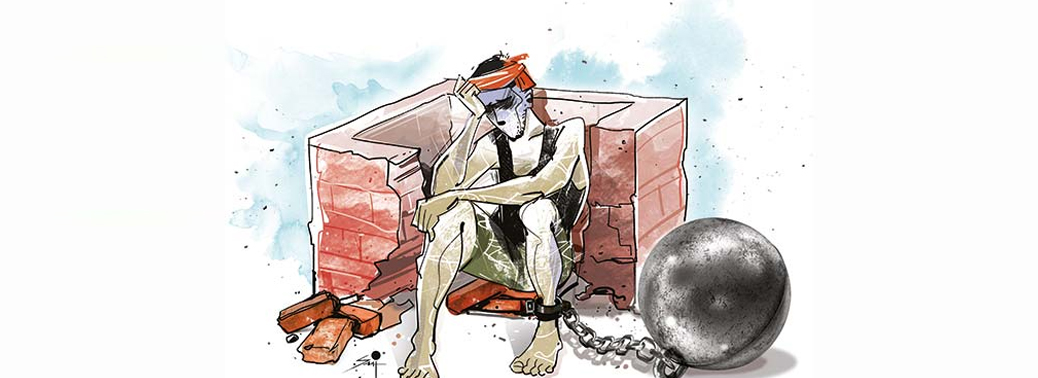
Why in News?
- The National Human Rights Commission (NHRC) has conducted a seminar on “bonded labour” recently.
About Bonded Labour:
- It is a practice in which employers give high-interest loans to workers who work at low wages to pay off the debt.
- The Supreme Court of India has interpreted bonded labour as the payment of wages that are below the prevailing market wages and legal minimum wages.
- The Constitution of India prohibits forced labour under Article 23 (Fundamental Rights on Prohibition of traffic in human beings and forced labour).
- Bonded labour was historically associated with rural economies where peasants from economically disadvantaged communities were bound to work for the landlords.
- Bonded labour is found to exist in both rural and urban pockets in unorganized industries such as brick kilns, stone quarries, coal mining, agricultural labour, domestic servitude, circus, and sexual slavery.
- According to International Labour Organization (ILO) there are 1.17 crores bonded labourers in India (2014).
Reasons for the Persistence of Bonded Labour:
- The lack of awareness among workers and employers
- Low conviction rates
- Social bias towards bonded labour
- Migratory nature of bonded labour
- Weaker implementation of Bonded Labour System (Abolition) Act 1976.
Bonded Labour System (Abolition) Act 1976:
- The Act extends to the whole of India but implemented by respective State Governments.
- It provides for an institutional mechanism at the district level in the form of Vigilance Committees.
- Vigilance committees advise District Magistrate (DM) to ensure the provisions of this act are properly implemented.
- The State Governments/UTs may confer, on an Executive Magistrate, the powers of a Judicial Magistrate of the first class or second class for the trial of offences under this Act.
- Under the Central Sector Scheme for Rehabilitation of Bonded Labourers (2016) financial assistance to the extent of Rs. Three lakh is provided to the released bonded labourers along with other non-cash assistance for their livelihood.
WOMEN, PEACE AND DEMOCRACY
02, Nov 2019
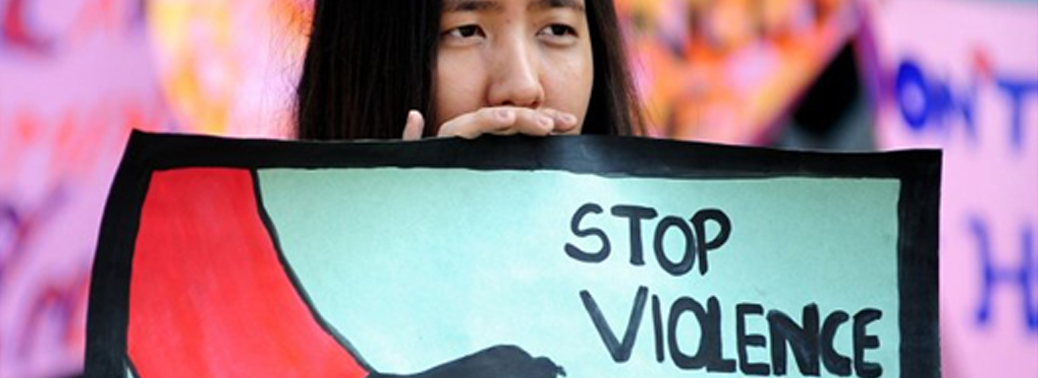
Context:
- 19 years after UN Resolution 1325, WPS Index estimates the gender discourse is reaching beyond traditional conflicts to embrace militarisation & Communal Hostilities.
About UN Resolution 1325
- UNSCR 1325 is a landmark international legal framework that addresses the inordinate impact of war on women + the pivotal role women play in conflict management + sustainable peace.
- The experiences of men & women in war are different. Women offer a vital perspective in the analysis of conflict.
- Resolution 1325 has 4 pillars – Participation, Protection, Prevention, and Relief and Recovery.It is implemented through the development of National Action Plans (NAP) or other national level strategies.
Women, Peace and Security (WPS) Index:
- The WPS Index is prepared by Georgetown University’s Institute for Women, Peace and Security, and the Peace Research Institute of Oslo.
- It was first published in 2017 and it operationalises the main values of the WPS resolutions to measure how women fare across three dimensions of peace and security: inclusion, justice and security. The 2019 update finds that while individually, countries lag far behind on most measures, “the world seems to be moving in the right direction”.
- Representation in government is one measure of inclusion, and the index finds that across legislatures worldwide only 21.5% are women, so that it will take 52 years to approach parity. The WPS Index reports that in 2018, 379 million women experienced intimate partner violence in which this number exceeds the population of the US.
Statistics of India in WPS Index:
- India which ranks 133 out of 167 is ahead of Bangladesh, Myanmar and Pakistan.
- Kerala, Mizoram, Tamil Nadu and Karnataka top the table while J&K, Tripura, Rajasthan and Manipur bring up the tail end.
- It is anomalous between the two ends—if Mizoram women are reaping the peace dividend (economic benefit of a decrease in defence spending), the experience of Rajasthani women illustrates how patriarchal cultures undermine it.
Interesting Facts of Jammu & Kashmir:
- Women attend school for 5.44 years on average. 60.30% of women have bank accounts; 29% do paid work outside the home and 54.20% have cell phones.
- Men tend to die, be wounded or disappeared disproportionately more, so women become heads of households.J&K women are about 0.1% of the Indian Parliament but 84% of them report that they participate in household decisions.
- Girls outnumber boys at birth, 9.4% of them experience intimate partner violence and they live with an organised violence (“total number of battle deaths from state-based, non-state, and one-sided conflicts per 100,000”) score of 175.93.
- Several civil society fact-finding teams have travelled to Kashmir since the announcement of bifurcation of J&K into Jammu and Kashmir and Ladakh.
- They state that men and boys are more likely to be shot, tortured, or questioned; women are then left to cope. After that they live with the constant threat (or reality) of sexual violence as an act of control by all conflict parties including the side where they belong, and lack of access to essential services (like emergency care) affect women whose mobility is severely impaired.
What does NCRB says about Gender based Violence?
- The latest NCRB report shows that at least seven states have registered a below-10% conviction rate for crimes against women.
- Odisha, with a 7.4% conviction rate, cuts a sorry figure, though there are some bigger states like West Bengal, Karnataka and Gujarat that fare worse.
- But the eastern state has something to worry about. Of the 2,082 victims of rape, at least 62% are girls below 18 years of age. As the incidence of rape continues to show an upward trend, rising sexual assault against minors is a disturbing trend.
- However, recent survey on the status of policing in the country showed that close to 40% of police personnel who were part of the study believed gender-based violence complaints are false and motivated.Interestingly, over 40% admitted to having received gender-sensitisation training in the last two to three years, which apparently is having no impact.
- Now, it is important to talk about gender sensitisation of the police, which must be accorded priority as it has a huge bearing on tackling crimes against women.
COURT SETS ASIDE ORDER TO TRY JUVENILE AS ADULT
10, Oct 2019
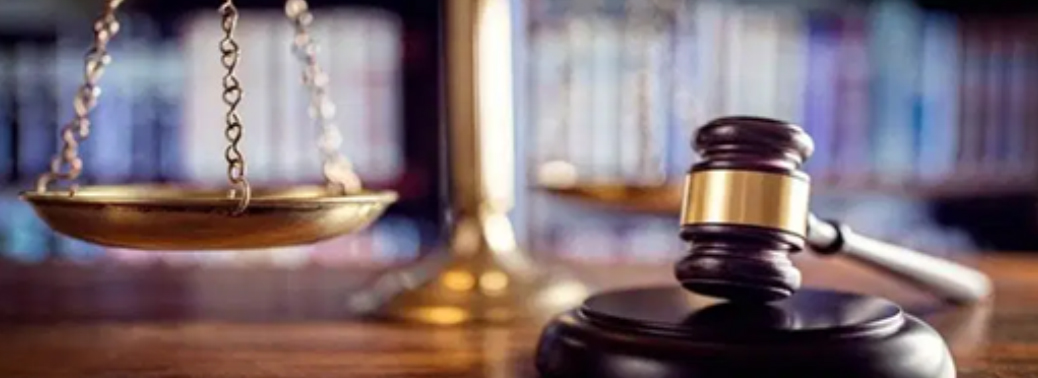
Why in News?
- A Delhi court has set aside the order of a Juvenile Justice Board (JJB) directing a Child in Conflict with Law (CCL) to face trial in a murder case as an adult.
Salient features of the Juvenile Justice Act 2015:
Children in conflict with the Law:
- It treats all the children below 18 years equally, except that those in the age group of 16-18 can be tried as adults if they commit a heinous crime.
- A child of 16-18 years age, who commits a lesser offence (a serious offence), may be tried as an adult if he is apprehended after the age of 21 years.
- A heinous offence attracts a minimum of seven years of imprisonment. A serious offence attracts three to seven years of imprisonment and a petty offence is treated with three-year imprisonment.
- No child can be awarded the death penalty or life imprisonment.
Children in need of care and protection:
- It calls for setting up of Child Welfare Committees (CWCs) in each district with a chairperson and four other members who have experience in dealing with children.
- The committee decides whether an abandoned child should be sent to care home or put up for adoption or foster care.
Juvenile Justice Boards:
- The Act mandates setting up of Juvenile Justice Boards (JJBs) in each district with a metropolitan magistrate and two social workers, including a woman.
- The JJBs will conduct a preliminary inquiry of a crime committed by a child within a specified time period and decides whether he should be sent to rehabilitation centre or sent to a children’s court to be tried as an adult.
- The board can take the help of psychologists and psycho-social workers and other experts to take the decision.
ABUSE OF WOMEN DURING CHILDBIRTH IS WIDESPREAD: REPORT
10, Oct 2019

Why in News?
- A recent study published in The Lancet medical journal has stated that more than one-third of the women in Asia and Africa were subjected to physical abuse during childbirth. This has been further confirmed by the observations of WHO.
Highlights of the Lancet Report:
- The report states that more than one-third of women in four low-income countries in Africa and Asia were slapped, mocked, forcibly treated or otherwise abused during childbirth in health centers and suggests that such mistreatment occurs worldwide.
- Also, women of these regions have experienced high rates of caesarean sections and surgical cuts to the vagina, or episiotomies, without their consent — and often without a painkiller.
- Mistreatment during childbirth can amount to a violation of human rights, and could be a powerful disincentive from seeking facility-based maternity care,” the study said.
Observations of WHO:
- The new study led by the World Health Organization followed more than 2,000 women during labour and interviewed more than 2,600 women after childbirth.
- Some 42% reported physical or verbal abuse or discrimination during childbirth. Some women were punched, shouted at, scolded or forcibly held down.
- Younger, less-educated women are at risk of such mistreatment which also includes neglect by health workers or the use of force during procedures, the study said.
- Most of the abuse occurred in the 15 minutes before and during childbirth. The study cited research that found that “midwives and doctors described women as ‘uncooperative’ during this period and some justified using physical and verbal abuse as “punishment”.
- The abuse also includes instances where women are forcibly separated from their new-borns for several days.
- Health officials say the mistreatment of women during childbirth appears to be global, including in developed countries.
About WHO:
- World Health Organization (WHO), the United Nations’ specialized agency for Health was founded in 1948.
- Its headquarters are situated in Geneva, Switzerland.
- There are 194 Member States, 150 country offices, six regional offices.
- It is an inter-governmental organization and works in collaboration with its member states usually through the Ministries of Health.
- The WHO provides leadership on global health matters, shaping the health research agenda, setting norms and standards, articulating evidence-based policy options, providing technical support to countries and monitoring and assessing health trends.
- It began functioning on April 7, 1948 – a date now being celebrated every year as World Health Day.
HALT THE HATE
05, Oct 2019
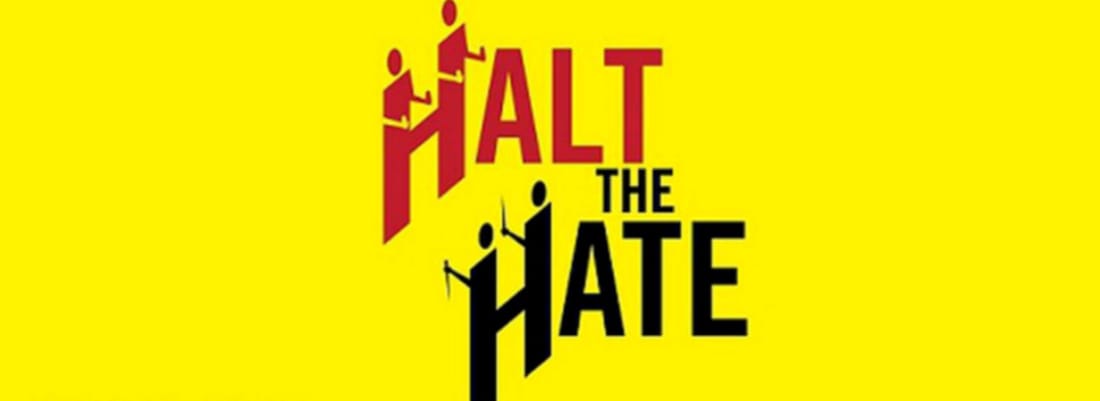
Context:
- ‘Halt The Hate’ is an interactive website on Amnesty International that documents reports of alleged hate crimes in India.
- A hate crime tracker has recorded 181 incidents of alleged hate crimes in the first half of 2019, the steepest rise in such incidents since 2015.
About the Website:
- ‘Halt the Hate’ documents alleged hate crimes in India starting from 28 September 2015, whenMohammad Akhlaq, a Muslim resident of Dadri, Uttar Pradesh, was murdered in his home by a mobclaiming that he had eaten beef.
- This website documents alleged hate crimes against Dalits,Muslims, Adivasis, Transgender people, Christians, and Other vulnerable groups.
- Amnesty International India understands Hate Crimes as ‘criminal acts against people or property,where the victim or target of offence is selected because of their real or perceived connection ormembership of a particular group, including but not limited to caste, ethnicity, religion, sexualorientation and gender identity, descent, nationality and disability among others.
Key Findings:
- The 181 recorded incidents of alleged hate crimes in the first half of 2019 is almost double that of the same period last year, when 100 such cases were recorded.
- Over two-thirds of the victims were targeted because they were Dalits, while 40 of them suffered because of their Muslim identity.
- In 37 reported incidents, the victims were killed. In 30 cases, victims were raped or sexually assaulted.
- Between January and June 2019, 72 mob attacks were reported. Of the 37 such attacks against Muslims, the victims were lynched in 5 cases. Dalit victims were lynched in 8 of the 28 mob attacks.
- There were 7 honour killings and 12 cases of violence against Adivasis.
Amnesty International:
- Amnesty International (commonly known as Amnesty or AI) is a London-based non-governmental organization focused on human rights.
- The stated mission of the organization is to campaign for “a world in which every person enjoys all of the human rights enshrined in the Universal Declaration of Human Rights and other international human rights instruments.”
- The organization was awarded the 1977 Nobel Peace Prize for its “defence of human dignity against torture”, and the United Nations Prize in the Field of Human Rightsin 1978.
- In the field of international human rights organizations, Amnesty has the third longest history, after the International Federation for Human Rights and broadest name recognition, and is believed by many to set standards for the movement as a whole.
SUPREME COURT SC/ST JUDGMENT, IN REVIEW
03, Oct 2019
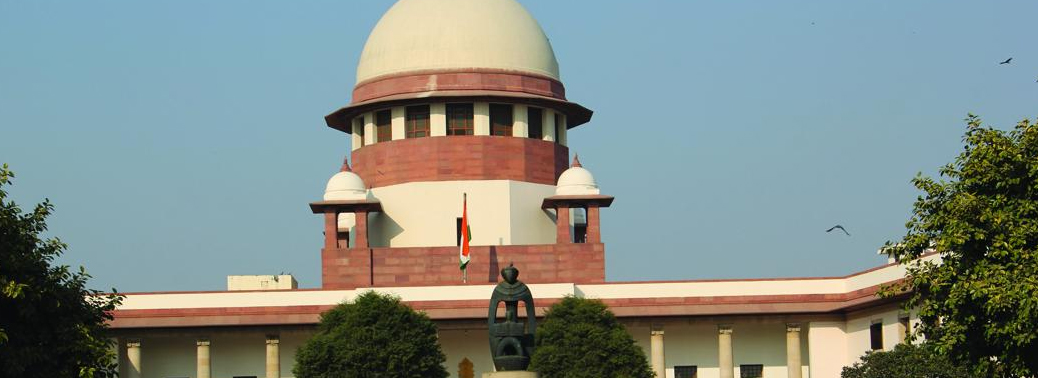
Why in News?
- Correcting an error of judgment, the Supreme Court recalled its March 20, 2018 verdict, which bent the written law to protect persons accused of committing atrocities against the Scheduled Castes and the Scheduled Tribes. This was following a plea by the Centre seeking a review of that judgment.
Background:
- On March 20, a judgment by the Supreme Court diluted the Scheduled Castes and Scheduled Tribes (Prevention of Atrocities) Act of 1989:
- to grant anticipatory bail to accused persons
- and directed that the police should conduct a preliminary enquiry on whether complaint under the 1989 law is “frivolous or motivated” before registering a case.
- Both conditions were not part of the original legislation.
- The SC had reasoned that members of the Scheduled Castes and Scheduled Tribes (SC/ST) use the 1989 law to lodge false complaints, leading to the arrest of innocent persons.
- The March 20 judgment had triggered widespread protests and violence and compelled the government to amend the Act to negate the effect of the apex court ruling. The Centre also filed a review against the judgment.
Highlights of Review Judgement:
- The Supreme Court in its judgment on the government’s review petition reasoned that human failing and not caste is the reason behind the lodging of false criminal complaints.
- The Supreme Court condemned its own earlier judgment, saying it was against “basic human dignity” to treat all SC/ST community members as “a liar or crook.”
- The judgement noted that the caste of a person cannot be a cause for lodging a false report and that the members of the Scheduled Castes and Scheduled Tribes, due to backwardness, cannot even muster the courage to lodge an FIR, much less, a false one.
- The judgement further noted, that India is a nation where “we have not been able to provide the modern methods of scavenging to Harijans due to lack of resources and proper planning and apathy”
- The Supreme Court Observed that “Untouchability though intended to be abolished, has not vanished in the last 70 years. We are still experimenting with ‘tryst with destiny’… condition is worse in the villages, remote areas where the fruits of development have not percolated down,”
JAMMU & KASHMIR PUBLIC SAFETY ACT
17, Sep 2019
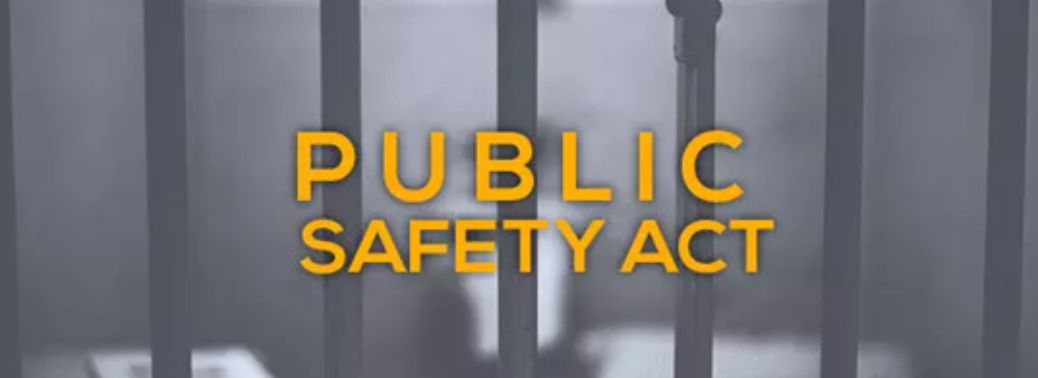
Why in News?
- National Conference leader and former Jammu and Kashmir chief minister Farooq Abdullah has been detained under the Jammu and Kashmir Public Safety Act.
- Last month, former IAS officer Shah Faesal was stopped at New Delhi airport and sent back to Kashmir, where he has been detained under the Public Safety Act (PSA).
About Jammu & Kashmir Public Safety Act (PSA):
- Jammu and Kashmir Public Safety Act 1978, was enacted “in the interest of the security of the State and public order”.
- It contains provisions for designating protected and prohibited areas, prevention of circulation of documents in the interests of communal harmony, etc.
- The Government can order the detention of a person:
- To prevent him from acting in any manner prejudicial to security of the State of maintenance of the public order.
- If he is a foreigner within the meaning of Foreigners Act
- If he is a person residing in the area of the State under the occupation of Pakistan and it is necessary to regulate his presence or to expel him.
- As per the definition given in the Act, “acting in any manner prejudicial to the maintenance of public order” means:
- 1.Promoting, Propagating, or attempting to create, feelings of enmity or hatred or disharmony on grounds of religion, race, caste, community, or region;
- 2.Making preparations for using, or attempting its use, or using, or instigating, inciting, or otherwise abetting the use of force where such preparation, using, attempting, instigating, inciting, provoking or abetting, disturbs or is likely to disturb public order;
- 3.Attempting to commit, or committing, or instigating, inciting, provoking or otherwise abetting the commission of mischief within the meaning of section 425 of the Ranbir Penal Code where the commission of such mischief disturbs, or is likely to disturb public order.
- Detention orders under PSA can be issued by Divisional Commissioners or District Magistrates.
- The detaining authority need not disclose any facts about the detention “which it considers to be against the public interest to disclose”.
- As per section 13(1), the authority making the detention should communicate to the detenu the reasons of detention. This is to enable the detenu to make a representation against the order of detention in exercise of the Fundamental Right guaranteed under Article 22(5) of the Constitution of India.
- However, the authority need not disclose such facts to the detenu which it considers to be against public interest to disclose (Section 13(2)). Therefore, the right under Section 13(1) can be effectively defeated if the authority chooses not to disclose whole facts in public interest.
Period of Detention:
- The Maximum period of detention in the case of persons acting in any manner prejudicial to the security of the state is two years.
- In Case of a person acting prejudicial to the maintenance of public order, the maximum period of detention is 12 months.
- Within four weeks of passing a detention order, the Government has to refer the case to an Advisory Board, which consists of a chairperson, who is or has been a judge of the High Court, and two other members who are, or have been, or are qualified to be appointed as Judges of the High Court.
- The Advisory Board has to give its opinion within 8 weeks of detention order.
- If the Advisory Board opines that there are sufficient causes for preventive detention, the Government can keep the person under detention for such period as it thinks fit, subject to the maximum limit.
Can the Detention be Challenged?
- The Advisory Board is supposed to examine if there are sufficient reasons for preventive detention.
- It is pertinent to note that the detenu has no right to engage a legal practitioner before the Advisory Board. The Advisory Board can also decide if the disclosure of grounds of detention to the detenu will affect public interest.
- The detenu is not entitled to the report of the Advisory Board, if the Board decides that it should remain confidential.
- The detention can be challenged in habeas corpus petitions filed before High Court under Article 226. However, the scope of challenge is limited to grounds of procedural violations.
- If there is non-application of mind by the detaining authority, or non-communication of the grounds of detention to the detenu, the High Court can quash the detention order as illegal.
- It is important that the District Magistrate forms independent opinion regarding the necessity of ordering preventive detention. If the Magistrate merely copies the report of the police, it will be a case of non-application of mind.
- Non-supply of relevant material documents to the detenu is also a ground for setting aside detention order(Bilal Ahmed Dar v State of J&K).
- The grounds of detention are not to be formulated in shorthand, or in a language of abbreviations or acronyms only known to the detaining authority. (Tanveer Ahmed v State of J&K)
Concerns/Criticisms of the Act:
- Global human rights organisations such as Commonwealth Human Rights Initiative (CHRI) and Amnesty International have noted in their reports that responses by various government authorities to applications filed under the Right to Information (RTI) Act, 2005 suggest that no Rules have so far been framed to lay down procedures for the implementation of the provisions of the PSA.
- An Amnesty report published earlier this year, which analysed over 2000 case studies of PSA detainees between 2007 and 2016, over 2,400 PSA detention orders were passed, of which about 58% were quashed by the courts.
- J&K parties have often blamed each other for the rampant misuse of the PSA.
INDIA ACCOUNTED FOR 2.8 MILLION DISPLACED PEOPLE IN 2018: IDMC REPORT
14, Sep 2019
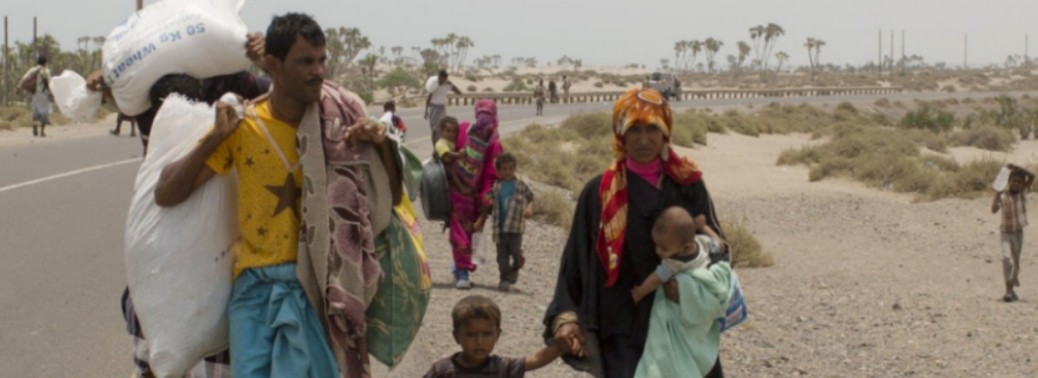
Why in News?
- Internal Displacement Monitoring Centre (IDMC) has released a new global report on the displacement of people due to natural disasters.
- According to the IDMC report, about seven million people have been displaced globally due to natural calamities including floods and storms between January and June 2019.
- IDMC Report also informed that more than 950 climate-related issues forced about seven million people to leave their homes.
- Most of the affected people are living in the Asian and African regions. In South Asia India accounted for most of the displacements.
India Specific Highlights:
Natural Disaster-related Displacements:
- IDMC report informed that India accounted for most of the region’s new displacements. Its overall total of 2.8 million was among the highest in the world, of which nearly 2.7 million were triggered by disasters across 15 states.
- India was particularly hard-hit by the monsoon season when flooding devastated the south-western state of Kerala.
- Almost 1.5 million new displacements were recorded in Kerala in what was described as the worst floods in a century.
- Cyclone Titli struck Orissa and Andhra Pradesh states in October, triggering 400,000 new displacements and cyclone Gaja hit Tamil Nadu in November, triggering 2,49,000 displacements.
Conflict and Violence related Displacements:
- According to the IDMC report, more than 1,60,000 new displacements associated with conflict and violence was recorded in Kashmir.
- Communal violence in Kashmir and West Bengal cast violence in Maharashtra and political violence in Tripura also triggered small-scale displacement.
Global Highlights:
- IDMC report highlights that weather-related hazards, particularly storms, accounted for the majority of the new displacement associated with disasters, triggering 17.2 million displacements in 2018.
- In various regions of the world, unresolved conflicts and a rise in communal violence were responsible for most of the 10.8 million new displacements associated with conflict and violence in 2018.
- Despite the decline in conflict and displacement in Syria during 2018, the country’s civil war, in its eighth year, continued to trigger some of the largest population movements in the world. More than 1.6 million new displacements were recorded.
- Around 221,000 people were living in displacement nationwide as of the end of the year, suffering dire conditions and unable to return because of destroyed housing, ongoing insecurity and a lack of resources.
IDMC:
- It is an authoritative source of data and analysis on internal displacement. The Internal Displacement Monitoring Centre (IDMC) was established in 1998 as the Norwegian Refugee Council (NRC). It works to inform policy and operational decisions that improve the lives of millions of people living in the internal displacement or at risk of becoming displaced in the future.
LINKING OF AADHAAR INFORMATION TO SOCIAL MEDIA ACCOUNTS
22, Aug 2019
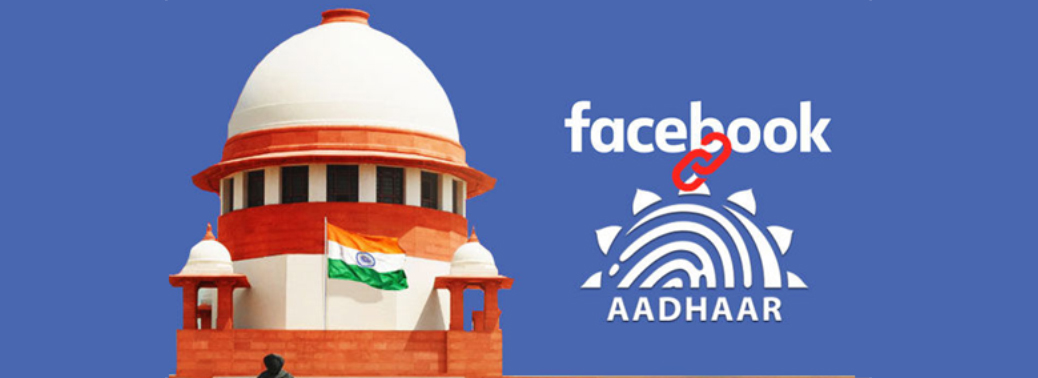
- Context: Supreme Court agreed to hear a plea by Facebook to transfer to the apex court four petitions filed in the High Courts of Madras, Bombay and Madhya Pradesh seeking the “linking of Aadhaar information to social media accounts”.
What is The Issue?
- It all began with a petition by Antony Clement Rubin in Madras High Court last year, seeking the court’s direction to the Central government to make it mandatory for social media users to link their Aadhaar number with email IDs.
- Social media profiles of users need to be linked with Aadhaar numbers to check circulation of fake, defamatory and pornographic content as also anti-national and terror material; the Supreme Court was informed.
- The suggestion was made by the Tamil Nadu government which is facing resistance from Facebook Inc on the ground that sharing of 12-digit Aadhaar number, the Biometric Unique Identity, would violate the privacy policy of users.
State Government’s View:
- The linking of social media profiles of the users with the Aadhaar was needed to check fake news, defamatory articles, pornographic materials, anti-national and terror contents in the online media.”
What Happens If User Profiles on Social Media Platforms Are Linked with Their Aadhaar Number?
- The linking of user profiles on social media with Aadhaar would make every message and post by the user traceable.
- Though the move will serve as a deterrent to social media instigators and perpetrators of defamatory and fake posts, it would also violate the privacy of the users, keeping a record of each message along with the registered mobile number or email account. This would mean the end of private communications.
- The privacy experts fear that the linking would allow India’s nationalist government to force social media platforms to become surveillance tools.
Facebook’s View:
- Facebook Inc said that it cannot share the Aadhaar number with a third party as the content on its instant messaging Whatsapp was end-to-end encrypted and even they do not have access to it.
- Facebook has contended that there are four petitions including — two in Madras High Court, one in Bombay and one in Madhya Pradesh High Courts — and they contained almost similar prayers.
- Facebook plea to transfer all this petition to Supreme Court
- Supreme Court agreed to hear a plea by Facebook to transfer to the apex court four petitions filed in the High Courts of Madras, Bombay and Madhya Pradesh seeking the “linking of Aadhaar information to social media accounts”.
Issues Involved:
- The question is if linking social media to Aadhaar is breach of privacy.
- Question is whether Aadhaar can be shared with a private entity or not.
- Ordinance has been promulgated, which says that Aadhaar can be shared with a private entity, if there was a larger public interest involved.
Supreme Court Privacy Judgement:
- Supreme court Observation on Social media
- Companies such as Google, Facebook, Uber, Airbnb, Amazon, etc. probably have more data on users than the governments of their countries.
- The privacy of citizens needs protection from these non-state players, too.
THE RAJASTHAN PROTECTION FROM LYNCHING BILL, 2019
08, Aug 2019
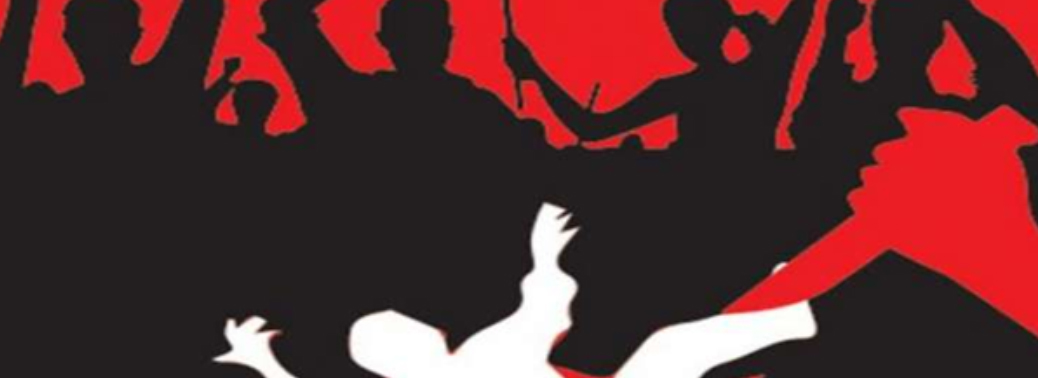
Context:
- The Rajasthan legislative assembly passed a Bill providing for life imprisonment and a fine from ₹1 lakh to ₹5 lakh to those convicted in cases of mob lynching leading to victim’s death.
Background:
- Rajasthan had witnessed a number of lynchings in 2017, beginning with that of dairy farmer Pehlu Khan in April 2017.
Sociology of Lynching Cases:
- The victims are always those living on the margins of the society.
- The cow-vigilantes are motivated by an urge to impose hegemony of values and cultural homogeneity, by obfuscating diverse practices and beliefs.
- They dare to defy the process of law, as their acts are powered by majoritarian sentiments.
- This is not an issue within the narrow confines of law and order; it plays out on a broader canvass of socio-cultural dynamics.
- It is the tussle between rule of law and belief-systems.
- It is the friction between the privileges of the mainstream and the struggles of survival by the marginalized.
Provision of Rajasthan Protection from Lynching Bill, 2019’:
- The Rajasthan Protection from Lynching Bill, 2019 makes mob lynching a cognisable, non-bailable and non-compoundable offence punishable with life imprisonment and a fine up to Rs 5 lakh.
- It defines lynching as “any act or series of acts of violence or aiding, abetting or attempting an act of violence, whether spontaneous or planned, by a mob on the grounds of religion, race, caste, sex, place of birth, language, dietary practices, sexual orientation, political affiliation, ethnicity”.
- Offences will be investigated by a police officer of the rank of inspector and above, and the DGP will appoint an officer of the rank of IG or above as State Coordinator.
- In cases of “hurt” and “grievous hurt”, the convict may get up to seven and 10 years in jail respectively; if it leads to death, the punishment is life imprisonment.
- The Bill also makes conspirators accountable.
Fast track Court
- The bill on lynching proposes setting up fast track courts, providing relief and rehabilitation measures, including free-of-cost treatment for victims, compensation, and establishment of relief camps.
- The bill also proposes the same level of punishment for conspiracy, abetment, aides or attempts to lynch.
Similar Amendment Bill in Madhya Pradesh:
- The proposed law in MP is an amendment to the existing Madhya Pradesh Govansh Vadh Pratishedh Act, 2004, which is against cow slaughter.
- The Bill seeks to amend Sub-section (2) of Section 9 of the 2004 Act and propose a minimum jail term of six months that may be extended to one year.
- When the same offence is committed by members of illegal assembly (mob) the minimum term will increase to one year and the maximum to five years.
- The Bill proposes a lower term for those who abet and those who attempt to commit the crime.
- punishment will double in case of those convicted for an offence they were previously convicted of.
- The minimum fine is Rs 5,000 and the maximum Rs 50,000.
- The Bill seeks to insert Section 6D. While the rules are yet to be formed, these will specify who issues the transit permit of cow progeny, which will be pasted prominently on the vehicle.
- There is no provision in the 2004 legislation for issuing transit permit from other states.
Guideline by Supreme Court in Case of Lynching:
- The states shall designate a senior police officer not below the rank of police superintendent as nodal officer in each district. These officers will set up a task force to be assisted by one DSP-rank officer for taking measures to prevent mob violence and lynching. The task force will gather intelligence reports on people likely to commit such crimes or who are involved in spreading hate speeches, provocative statements and fake news
- The state governments shall immediately identify districts, sub-divisions and villages where instances of lynching and mob violence have been reported in the recent past. The process of identification should be done within a period of three weeks from the date of the judgment.
Remedial Measures:
- Despite the preventive measures taken by the state police, if it comes to the notice of the local police that an incident of lynching or mob violence has taken place, the jurisdictional police station shall immediately lodge an FIR.
Deterrent Punishment:
- The trial court must ordinarily award the maximum sentence under the provisions of the IPC.
Punitive Measures:
- Departmental action must be taken against police or district officials who fail to act against the perpetrators. Such failure will be considered as an act of deliberate negligence and/or misconduct for which appropriate action must be taken. The action shall be taken to its logical conclusion preferably within six months.
Conclusion:
- This is a complex issue which raises the conundrum of whether a democratic government should merely reflect majoritarian will or should pursue higher values of equality and justice and Bill against Mob Lynching is one step towards Justice.
BILL MANDATING DEATH PENALTY FOR ‘HONOUR KILLING’ PASSED IN RAJASTHAN ASSEMBLY
08, Aug 2019

- Context: The Rajasthan Prohibition of Interference with the Freedom of Matrimonial Alliances in the Name of Honour and Tradition Bill, 2019 was passed by Rajasthan Assembly
Background:
- In the Past five years in the state, 71 cases of illegal diktat given by ‘Khap Panchayats’ (caste councils which function like kangaroo courts) were registered and 10 cases of honour killing occurred in which four men and eight women were killed.
- Such cases have increased in the past few years and have become hurdle in societal development
Key Highlights of The Bill:
- The Bill provisions punishment of death penalty or life imprisonment till natural death for killing a couple or either of them in the name of honour.
- According to the Bill whoever causes death of a couple or either of them on the basis that marriage of such couple has dishonoured, or brought disrepute to the caste, community or family shall be punished with death, or with imprisonment for life, which shall mean imprisonment for the remainder of that person’s natural life, and with fine which may extend to ₹5 lakh.
- If the couple or either of them is grievously hurt, the punishment will be from 10 years rigorous imprisonment to imprisonment for life and with fine of maximum ₹3 lakh, whereas the punishment will be three to five years imprisonment with fine which may extend to ₹2 lakh in case of simple injuries.
- According to the Bill, Sub Divisional Magistrate or the District Magistrate shall receive any request or information from any person or persons seeking protection from any unlawful assembly, or from any other person who is likely to or who have been objecting to any lawful marriage.
- No person or group shall assemble at any time with the view or intention to deliberate on or condemn any marriage, not prohibited by law, on the basis that such marriage has dishonoured the caste or community tradition or brought disrepute to all or any of the persons forming part of the assembly or the family or the people of the locality concerned.
- Such gathering shall be treated unlawful and every person convening or organising such assembly, and every member, thereof, participating therein directly or indirectly shall be punishable with imprisonment for a term not less than six months, but may extend to five years and shall also be liable to fine which may extend to ₹1 lakh.
Objectives of The Bill:
- There has been a spurt in illegal intimidation by self-appointed bodies for bringing pressure against ‘sagotra’ marriages and inter-caste, inter-community and inter-religious marriages between two consenting adults in the name of vindicating the honour of family, caste or community.
- Although, such intimidation or acts of violence constitute offences under the Indian Penal Code, yet, it is necessary to prevent assemblies which take place to condemn such alliances as also to punish such acts of violence and criminal intimidation severely.
THE TRANSGENDER PERSONS (PROTECTION OF RIGHTS) BILL, 2019
07, Aug 2019
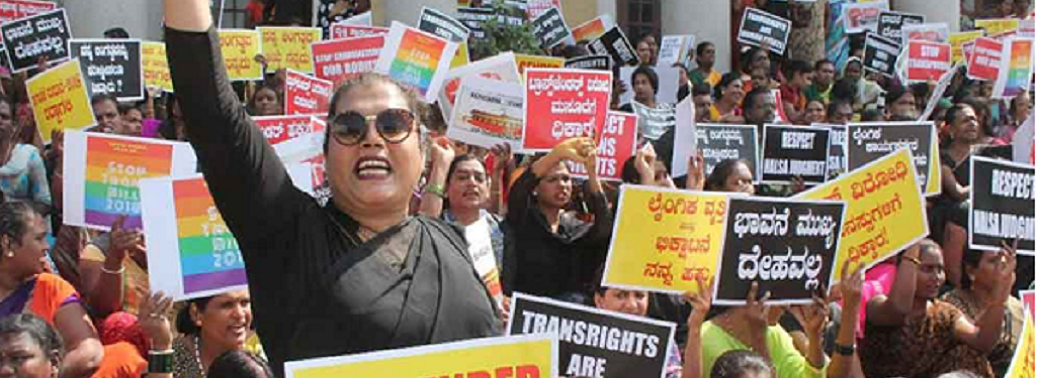
- Context: The Transgender Persons (Protection of Rights) Bill, 2019, was passed by the Lok Sabha
Background:
- According to the 2011 Census there are more than 4.80 lakh transgenders in the country. These people are often discriminated upon and humiliated in public for being transgender.
- The Bill has provisions for penalty and punishment in cases of offences and sexual harassment against transgender persons.
- The Bill also provides a mechanism for social, economic and educational empowerment of transgenders.
- A contentious provision that criminalised begging by transgender people has been removed from the Bill. The Bill makes provision for establishing a national authority for safeguarding rights of transgenders.
Highlights of The Bill:
Definition of a Transgender Person:
- The Bill defines a transgender person as one whose gender does not match the gender assigned at birth.
- It includes trans-men and trans-women, persons with intersex variations, gender-queers, and persons with socio-cultural identities, such as kinnar and hijra.
- Intersex variations is defined to mean a person who at birth shows variation in his or her primary sexual characteristics, external genitalia, chromosomes, or hormones from the normative standard of male or female body.
Prohibition Against Discrimination:
- The Bill prohibits the discrimination against a transgender person, including denial of service or unfair treatment in relation to:
- Education
- Employment
- Healthcare
- Access to, or enjoyment of goods, facilities, opportunities available to the public;
- Right to Movement
- Right to reside, Rent, or otherwise occupy property
- opportunity to hold public or private office and
- Access to a government or private establishment in whose care or custody a Transgender Person is.
Right of Residence:
- Every transgender person shall have a right to reside and be included in his household.
- If the immediate family is unable to care for the transgender person, the person may be placed in a rehabilitation centre, on the orders of a competent court.
Employment:
- No government or private entity can discriminate against a transgender person in employment matters, including recruitment, and promotion.
- Every establishment is required to designate a person to be a complaint officer to deal with complaints in relation to the Act.
Education:
- Educational institutions funded or recognised by the relevant government shall provide inclusive education, sports and recreational facilities for transgender persons, without discrimination.
Health Care:
- The government must take steps to provide health facilities to transgender persons including separate HIV surveillance centres, and sex reassignment surgeries.
- The government shall review medical curriculum to address health issues of transgender persons, and provide comprehensive medical insurance schemes for them.
Certificate Of Identity For A Transgender Person:
- A transgender person may make an application to the District Magistrate for a certificate of identity, indicating the gender as ‘transgender’.
- A revised certificate may be obtained only if the individual undergoes surgery to change their gender either as a male or a female.
Welfare Measures By The Government:
- The Bill states that the relevant government will take measures to ensure the full inclusion and participation of transgender persons in society.
- It must also take steps for their rescue and rehabilitation, vocational training and self-employment, create schemes that are transgender sensitive, and promote their participation in cultural activities.
Offences And Penalties:
- The Bill recognizes the following offences against transgender persons:
- Forced or bonded labour (excluding compulsory government service for public purposes),
- Denial of use of public places,
- Removal from household, and village,
- Physical, sexual, verbal, emotional or economic abuse. Penalties for these offences vary between six months and two years, and a fine.
National Council for Transgender persons (NCT):
The NCT will consist of:
- Union Minister for Social Justice (Chairperson)
- Minister of State for Social Justice (Vice- Chairperson)
- Secretary of the Ministry of Social Justice
- one representative from ministries including Health, Home Affairs, and Human Resources Development.
- Other members include representatives of the NITI Aayog, and the National Human Rights Commission.
- State governments will also be represented.
- The Council will also consist of five members from the transgender community and five experts from non-governmental organisations.
- The Council will advise the central government as well as monitor the impact of policies, legislation and projects with respect to transgender persons. It will also redress the grievances of transgender persons.
PROTECTION OF HUMAN RIGHTS (AMENDMENT) BILL, 2019
23, Jul 2019
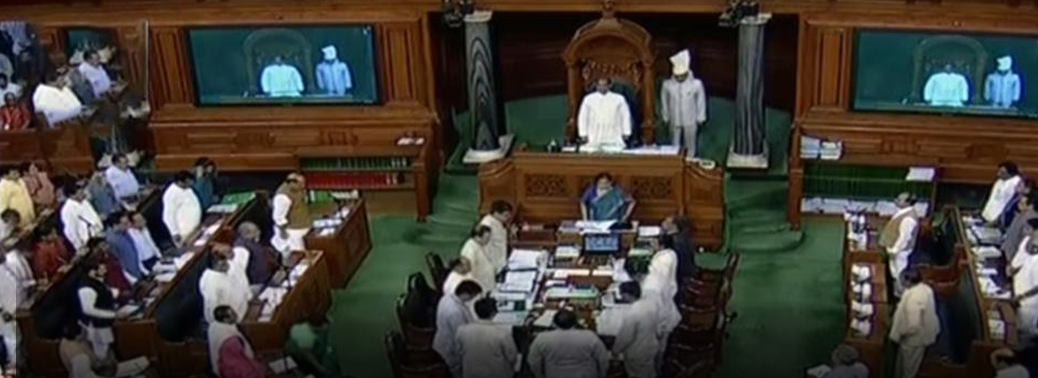
Why in News?
- Lok Sabha has passed The Protection of Human Rights (Amendment) Bill, 2019.
Why such Amendment?
- The Protection of Human Rights Act, 1993 was enacted to provide for the constitution of a National Human Rights Commission (NHRC), the State HRC and the Human Rights Courts for protection of human rights.
- Certain State Governments have proposed for amendment as they have been facing difficulties in finding suitable candidates to the post of Chairperson of the respective SHRCs owing to the existing eligibility criteria.
- The proposed amendments will enable both the NHRC and SHRCs to be more compliant with the Paris Principles.
Highflights:
- A person who has been a Judge of the Supreme Court is also made eligible to be appointed as Chairperson of the Commission in addition to the person who has been the CJI;
- To increase the Members of the NHRC from two to three of which, one shall be a woman;
- To include Chairperson of the National Commission for Backward Classes, Chairperson of the National Commission for Protection of Child Rights and the Chief Commissioner for Persons with Disabilities as deemed Members of the Commission;
- To reduce the term of the Chairperson and Members of the NHRC and the SHRCs from five to three years and shall be eligible for re-appointment;
- To provide that a person who has been a Judge of a High Court is also made eligible to be appointed as Chairperson of the SHRC in addition to the person who has been the Chief Justice of the High Court; and,
- To confer upon State Commissions, the functions relating to human rights being discharged by the UTs, other than the UT of Delhi which will be dealt with by the Commission.
SOCIAL STIGMA SIDELINING CHILD RAPE VICTIMS: REPORT
22, Jul 2019
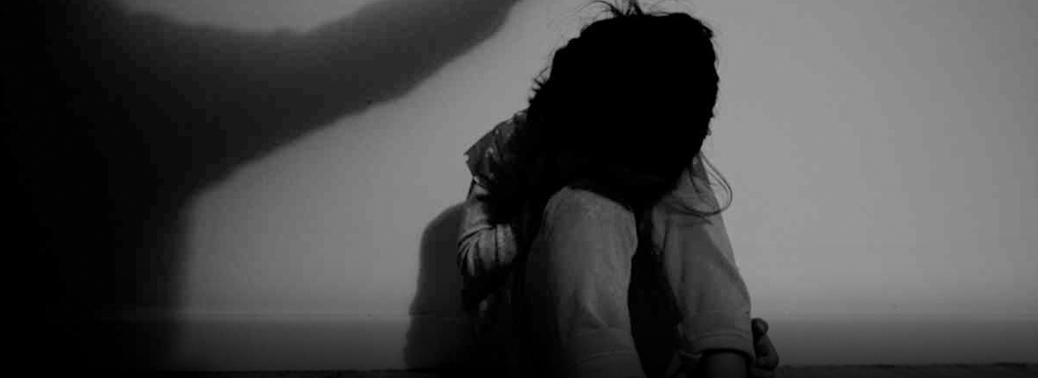
Why in News?
- A study by the Delhi Commission for Protection of Child Rights (DCPCR) along with the Human Development Society was recently released.
Highlights of The Report:
- The study covered 100 child victims — 94 girls and 6 boys, aged between 2 and 18 years — of rape cases reported in 2017-18.
- The study says that social consequences of rape are hugely prejudicial to victims of sexual abuse and their families, as people, in general, do not see victims in the right perspective.
- The study also observed that instead of making the perpetrators responsible for the act, social stigma is attached to victims and their families “who are often pushed to the margins of society”.
- It highlighted “rape” as the most important factor among victims for dropping out of school.
- The principal reason is related to the incident of rape, as 33% (the highest of all) cite legal procedure, social stigma, safety and health concerns following rape as reasons for dropping out of studies.
- While 14% each noted financial crisis and lack of interest in study as the reason; 10% children dropped out due to the need of special schools; 7% did so due to illness of parents and families responsibilities.
- The sample also has 10% victims who are either living with accused or are planning to marry the culprit.
- Rape victims, mostly girls, suffer from different types of illness, like lower abdominal pain, anaemia or weakness, for which 81% of the parents are “unable to meet healthcare challenges of their children due to lack of money”
- 24% parents are unable to spend long time for treatment, as it adversely affects their work as wage labour and work-related commitments.
There are 14% parents whose inability to discuss health issues of child with doctors due to social stigma act as an obstruction to fulfilling health needs. - 57% families of child victims face challenges to their livelihood following the incidence of rape: livelihood challenges are being faced by 56% families of girl’s victims and 67% families of victims who are boys.
JUVENILE JUSTICE
22, Jul 2019
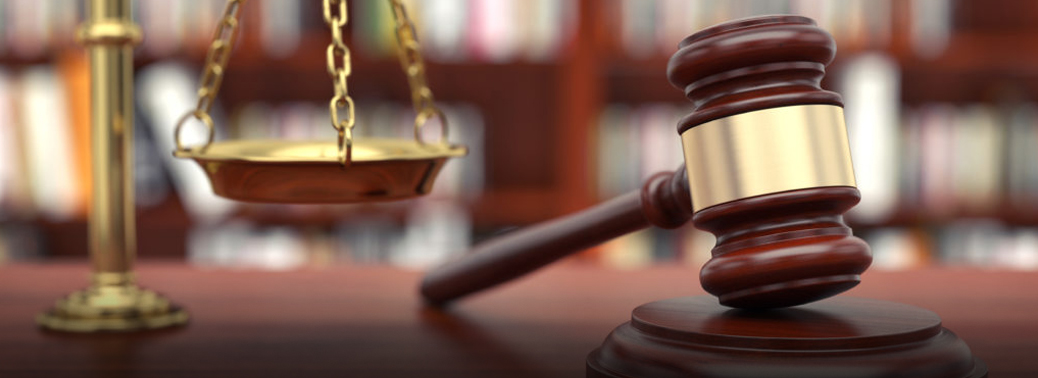
Background:
- In 2016, a 17-year-old was booked for the murder of his three-year-old neighbour in Mumbai.
- The Mumbai city Juvenile Justice Board as well as a children’s court directed that he be tried as an adult under the Juvenile Justice (Care and Protection) Act, 2015.
- Last week, the Bombay High Court set aside these orders and directed that the accused be tried as a minor, saying the Act is reformative and not retributive.
When Is A Child Tried as An Adult?
- The Juvenile Justice Act of 2000 was amended in 2015 with a provision allowing for Children in Conflict with Law (CCL) to be tried as adults under certain circumstances.
- The Act defines a child as someone who is under age 18. For a CCL, age on the date of the offence is the basis for determining whether he or she was a child or an adult.
- The amended Act distinguishes children in the age group 16-18 as a category which can be tried as adults if they are alleged to have committed a heinous offence — one that attracts a minimum punishment of seven years. The Act does not, however, make it mandatory for all children in this age group to be tried as adults.
Why Was This Distinction Made?
- The amendment was proposed by the Ministry of Women and Child Development in 2014 in the backdrop of the gang-rape of a woman inside a bus in Delhi in 2012, leading to her death. One of the offenders was a 17-year-old, which led to the Ministry proposing the amendment (although it could not have retrospectively applied to him).
- The Government cited an increase in cases of offenders in that age group; child rights activists objected to the amendment. The J S Verma Committee constituted to recommend amendments also stated that it was not inclined to reduce the age of a juvenile from 18 to 16. The amendment was made in 2015.
What Was the Basis for The Order That the Accused Be Tried as A Minor?
- The Bombay High Court observed: “It [trial as an adult] is not a default choice; a conscious, calibrated one. And for that, all the statutory criteria must be fulfilled.”
- As per Section 15 of the JJ Act, there are three criteria that the Juvenile Justice Board in the concerned district should consider while conducting a preliminary assessment to determine whether the child should be tried as an adult or under the juvenile justice system, which prescribes a maximum term of three years in a special home.
- The criteria are whether the child has the mental and physical capacity to commit such an offence; whether the child has the ability to understand its consequences; and the circumstances in which the offence was committed. If the Board finds that the child can be tried as an adult, the case is transferred to a designated children’s court, which again decides whether the Board’s decision is correct.
How Do These Criteria Relate to This Case?
- Both the Juvenile Justice Board and the children’s court had relied on the probation officer’s social investigation report and a government hospital’s mental health report.
- The High Court said that neither report brought out “any exceptional circumstances” to compel the juvenile to face trial as an adult. The probation officer’s report, submitted in 2018, had stated the child or his family did not have a criminal record, and called the juvenile “highly manipulative” while also noting that he had “confessed” that the victim was killed “accidentally”. It also noted that the juvenile was counselled on focusing on his studies, and that he had taken and passed his exams while lodged in the observation home.
- The mental health report said the juvenile had “no psychiatric complaints at present”, was “normal”, and “suffers from no mental incapacity” to commit the offence.
- The court said that while the Board had relied on these two reports, it had undertaken no independent assessment.
- It said that if the Board’s criteria of evaluation were followed, “then every case becomes an open-and-shut case”. It said that only because the statute permits a child of 16 years and above to stand trial as an adult in case of heinous offence, it did not mean that all those children should be subjected to adult punishment.
- One of the court’s key observations was that “essentially, the trial in the regular court is offence-oriented; in the juvenile court, it is offender-oriented. In other words, in the children’s court, societal safety and the child’s future are balanced. For an adult offender, prison is the default opinion; for a juvenile it is the last resort”.
ARMED FORCES (SPECIAL POWERS) ACT
02, Jul 2019
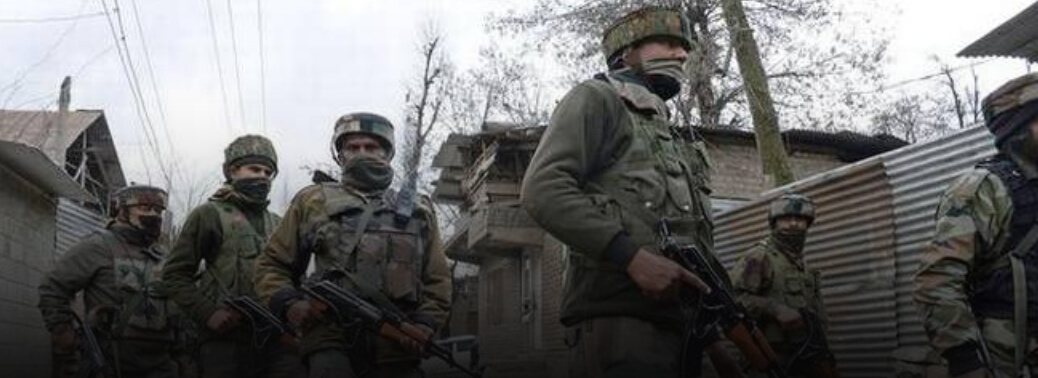
- Context: The Ministry of Home Affairs has extended the operation of Armed Forces (Special Powers) Act in Nagaland for another six months with effect from June 30.
What does the AFSPA Mean?
- In simple terms, AFSPA gives Armed Forces the power to maintain public order in “Disturbed Areas”.
- They have the authority to prohibit a gathering of five or more persons in an area, can use force or even open fire after giving due warning if they feel a person is in contravention of the law.
- If reasonable suspicion exists, the army can also arrest a person without a warrant; enter or search premises without a warrant; and ban the possession of firearms.
- Any person arrested or taken into custody may be handed over to the officer in charge of the nearest police station along with a report detailing the circumstances that led to the arrest.
What is a “Disturbed Area” and who has the power to declare it?
- A disturbed area is one which is declared by notification under Section 3 of the AFSPA.
- An area can be disturbed due to differences or disputes between members of different religious, racial, language or regional groups or castes or communities.
- The Central Government or the Governor of the State or administrator of the Union Territory can declare the whole or part of the State or Union Territory as a disturbed area.
- A suitable notification would have to be made in the Official Gazette. As per Section 3, it can be invoked in places where “the use of armed forces in aid of the civil power is necessary”.
- The Ministry of Home Affairs would usually enforce this Act where necessary, but there have been exceptions where the Centre decided to forego its power and leave the decision to the State governments.
What’s the origin of AFSPA?
- The Act came into force in the context of increasing violence in the Northeastern States decades ago, which the State governments found difficult to control.
- The Armed Forces (Special Powers) Bill was passed by both the Houses of Parliament and it was approved by the President on September 11, 1958.
- It became known as the Armed Forces Special Powers Act, 1958.
Which States are, or had come under this Act?
- It is effective in the whole of Nagaland, Assam, Manipur (excluding seven assembly constituencies of Imphal) and parts of Arunachal Pradesh.
The Centre revoked it in Meghalaya on April 1, 2018. - Earlier, the AFSPA was effective in a 20 km area along the Assam-Meghalaya border.
- In Arunachal Pradesh, the impact of AFSPA was reduced to eight police stations instead of 16 police stations and in Tirap, Longding and Changlang districts bordering Assam.
- Tripura withdrew the AFSPA in 2015. Jammu and Kashmir too has a similar Act.
How has this Act been received by the people?
- It has been a controversial one, with human rights groups opposing it as being aggressive.
- Manipur’s Irom Sharmila has been one if its staunchest opponents, going on a hunger strike in November 2000 and continuing her vigil till August 2016.
Her trigger was an incident in the town of Malom in Manipur, where ten people were killed waiting at a bus stop.
PRADHAN MANTRI SHRAM YOGI MAAN-DHAN YOJANA (PM-SYM)
27, Jun 2019
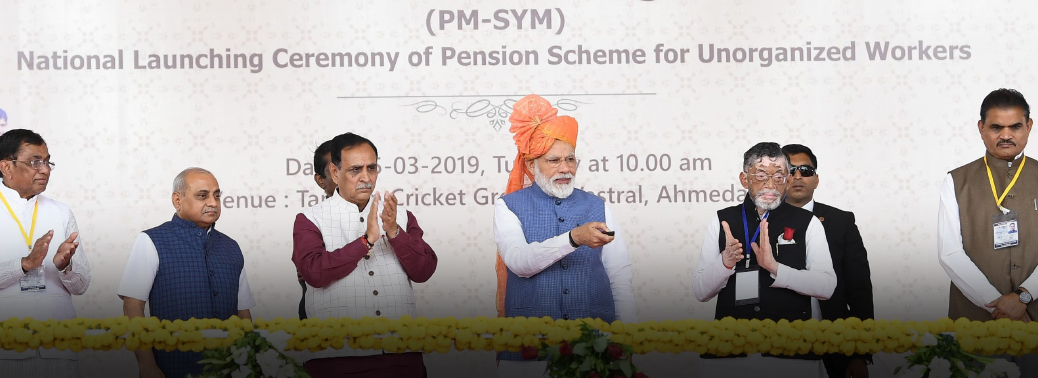
- By the Ministry of Labour and Employment
Salient Features:
- Minimum Assured Pension: Each subscriber under the PM-SYM, shall receive minimum assured pension of Rs 3000/- per month after attaining the age of 60 years. Family Pension: During the receipt of pension, if the subscriber dies, the spouse of the beneficiary shall be entitled to receive 50% of the pension received by the beneficiary as family pension. Family pension is applicable only to spouse.
- If a beneficiary has given regular contribution and died due to any cause (before age of 60 years), his/her spouse will be entitled to join and continue the scheme subsequently by payment of regular contribution or exit the scheme as per provisions of exit and withdrawal.
Eligibility:
- The unorganised workers mostly engaged as home based workers, street vendors, mid-day meal workers, head loaders, brick kiln workers,
cobblers, rag pickers, domestic workers, washer men, rickshaw pullers, landless labourers, own account workers, agricultural workers, construction workers, beedi workers, handloom workers, leather workers, audio- visual workers and similar other occupations whose monthly income is Rs 15,000/ per month or less and belong to the entry age group of 18-40 years are eligible for the scheme. They should not be covered under New Pension Scheme (NPS), Employees’ State Insurance Corporation (ESIC) scheme or Employees’ Provident Fund Organisation (EPFO).Contribution:
- The subscriber is required to contribute the prescribed contribution amount from the age of joining PM-SYM till the age of 60 years.
Matching contribution by the Central Government:
- PM-SYM is a voluntary and contributory pension scheme on a 50:50 basis where prescribed age-specific contribution shall be made by the beneficiary and the matching contribution by the Central Government as per the chart.
- For example, if a person enters the scheme at an age of 29 years, he is required to contribute Rs 100/ – per month till the age of 60 years. An equal amount of Rs 100/- will be contributed by the Central Government.
Enrollment Agencies:
- The enrolment will be carried out by all the Community Service Centers (CSCs).
- The unorganised workers may visit their nearest CSCs along with their Aadhar Card and Savings Bank account passbook/Jandhan account and get registered themselves for the Scheme.
ILO ADOPTS #MeToo PACT AGAINST HARASSMENT AT WORKPLACE
22, Jun 2019
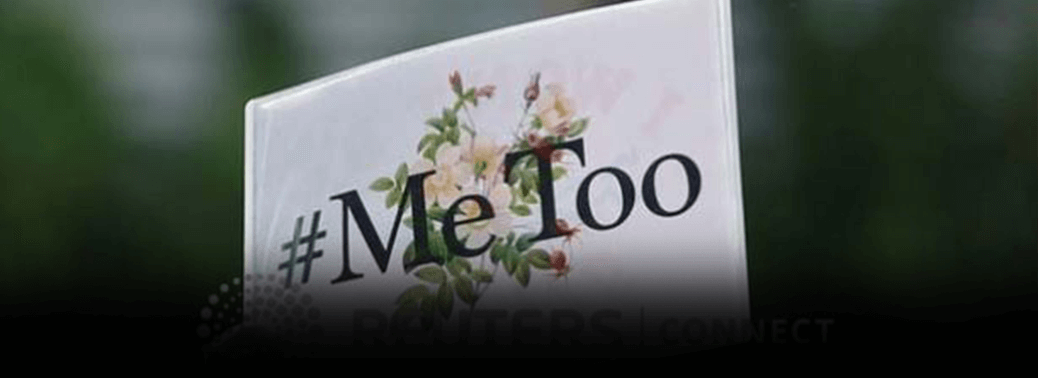
Context:
- The U.N. agency overseeing international labour standards adopted on Friday a new treaty against violence and harassment in the workplace, fueled by the women’s #MeToo movement.
- The convention, which will be binding on governments that ratify it, was agreed by a wide margin on the final day of the International Labour Organization’s (ILO) annual conference of governments, employers’ groups and workers.
- Sexual harassment mainly adds deprivations of women of their opportunity to work and free choice of the profession.
Vishaka Guidelines:
- Vishaka and others v/s state of Rajasthan is a case which deals with the evil of Sexual Harassment of a women at her workplace.
- It is a landmark judgment case in the history of sexual harassment which as being decide by Supreme Court.
- Present civil and penal laws in India do not adequately provide for specific protection of women from sexual harassment in work places and that enactment of such legislation will take considerable time,
- It is necessary and expedient for employers in work places as well as other responsible persons or institutions to observe certain guidelines to ensure the prevention of sexual harassment of women.
Mechanism for complaint in House Mechanism:
- The complaint mechanism, should be adequate to provide, where necessary, a Complaints Committee, a special counsellor or other support service, including the maintenance of confidentiality.
- The Complaints Committee should be headed by a woman and not less than half of its member should be women. Further, to prevent the possibility of any undue pressure or influence from senior levels, such Complaints Committee should involve a third party, either NGO or other body who is familiar with the issue of sexual harassment.
- The Complaints Committee must make an annual report to the Government
- department concerned of the complaints and action taken by them.
Why there is need of Vishaka Guidelines.
- If any strict action will not be taken towards this crime, it will directly hamper the working ration of the women in India and on other hand it will hamper the economic situation of India.
- Government should make strict laws regarding the aversion of sexual harassment at workplace, because it should realize that, women also constitute the working population of our country.
- It should be abolished to prevent the dignity and the respect of the women.
- Various new approaches and skills shall be implemented by the institutions, organisations to prevent there women employees from such a social evil.
- The main objective behind the stabilization of this right is to promote gender equality at workplace without any kind of discrimination and discernment among the workers of an organisation.
What is ILO?
- The only tripartite U.N. agency, since 1919 the ILO brings together governments, employers and workers of 187 member States, to set labour standards, develop policies and devise programmes promoting decent work for all women and men.
- The unique Tripartite Structure of the ILO gives an equal voice to workers, employers and governments to ensure that the views of the social partners are closely reflected in labour standards and in shaping policies and programmes.
- The ILO became the First Specialized Agency of the UN in 1946.
- The International labour Conference: – sets the International labour standards and the broad policies of the ILO. It meets annually in Geneva. Often called an international parliament of labour, the Conference is also a forum for discussion of key social and labour questions. The Governing body is the executive council of the ILO. It meets three times a year in Geneva. It takes decisions on ILO policy and establishes the programme and the budget, which it then submits to the Conference for adoption.
- The International Labour Office is the permanent secretariat of the International Labour Organization. It is the focal point for International Labour Organization’s overall activities, which it prepares under the scrutiny of the Governing Body and under the leadership of the Director-General.
What is the #MeToo movement?
- The ‘me too.’ movement was founded in 2006 to help survivors of sexual violence, particularly Black women and girls, and other young women of color from low wealth communities, find pathways to healing.
- In less than six months, because of the viral #metoo hashtag, a vital conversation about sexual violence has been thrust into the national dialogue.
- The ‘me too’ movement supports survivors of sexual violence and their allies by connecting survivors to resources, offering community organizing resources, pursuing a ‘me too’ policy platform, and gathering sexual violence researchers and research.
- Girls for Gender Equity (GGE) is the fiscal sponsor of the ‘me too.’ movement, and receives tax-deductible charitable contributions for the benefit and use of implementing the ‘me too.’ movement’s programming.
- GGE is a New York nonprofit benefit corporation located in Brooklyn, New York, U.S.
LABOUR ISSUES
16, Jun 2019
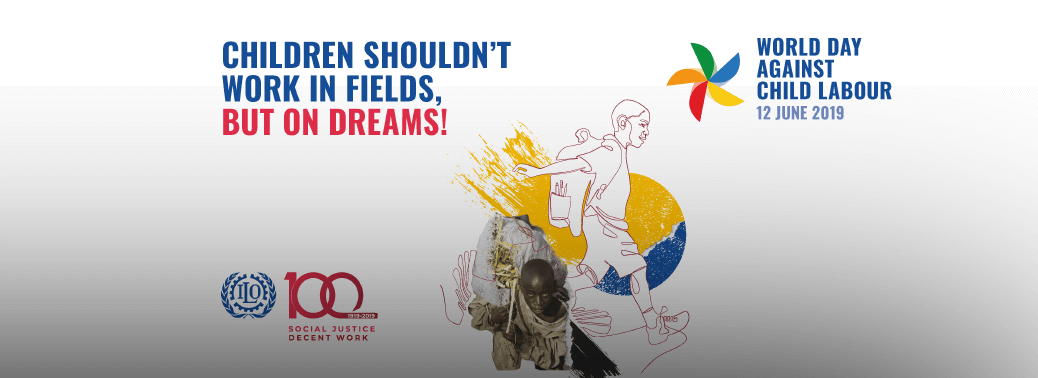
- Indian Staffing Federation has asked the government to completely scrap the archaic labor laws.
- ISF is an apex body of staffing or the outsourcing industry. It is yet to be recognized by the government. India has 463 million workforces, of which 94% are in informal sector employed with small and micro firms.
- Such enterprises tries to remain small since they enjoy tax benefits in India as they employ less than 20 people. Therefore, such a ceiling on the number of employees has restricted the growth of the industries as well as the growth of employment in the country.
- Once a company employs more than 20 labourers it is subjected to unrealistic labour laws and compliances. Labour laws in India is framed by both the Central government and the State government as it comes under the Concurrent list of the constitution.
- This has created lot of ambiguity in laws and confusion in its implementation. For example, existing labour laws define worker and wage in 17 different ways.
- This has made India a hostile place for investments.
- The ISF recommends new labour laws that suits the modern times and needs of an emerging economy.
UNION CABINET CLEARS FRESH BILL TO BAN INSTANT TRIPLE TALAQ
13, Jun 2019
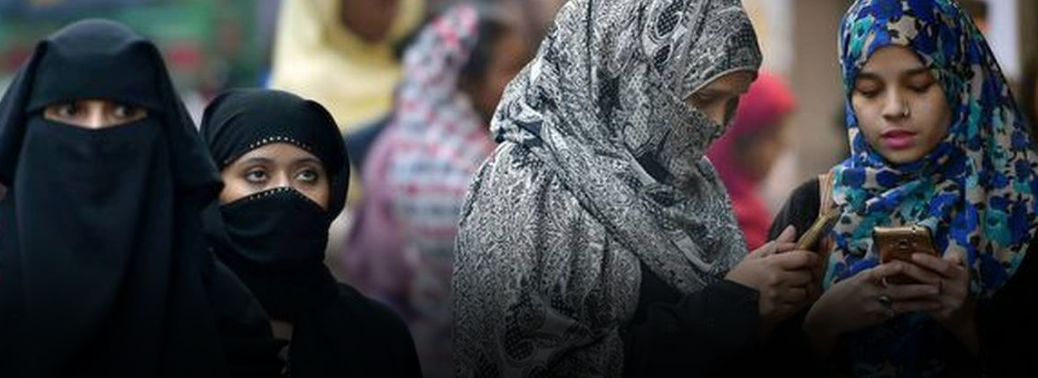
Why in News:
- Cabinet approves legislation to replace ordinance, bill to be introduced in upcoming session of the new Lok Sabha
Back ground:
- The Union Cabinet on Wednesday approved the Muslim Women (Protection of Rights on Marriage) Bill, 2019, paving the way for the legislation to be introduced in the upcoming session of Parliament.
- The Bill, which would replace the Muslim Women (Protection of Rights on Marriage) Second Ordinance, 2019, once passed, would put a curb on the practice of talaq-e-biddat, or instant triple talaq.
- “The Bill would ensure gender equality and gender justice to Muslim women. The Bill would also help in protecting the rights of married Muslim women and prevent divorce by practice of ‘talaq-e-biddat’ by their husbands.
- The Bill declares the practice of triple talaq void and illegal, making it punishable by three years in jail and a fine. It also provides for payment of subsistence allowance to married Muslim women and dependent children.
FOCUS IS ON AYUSHMAN BHARAT
04, Jun 2019
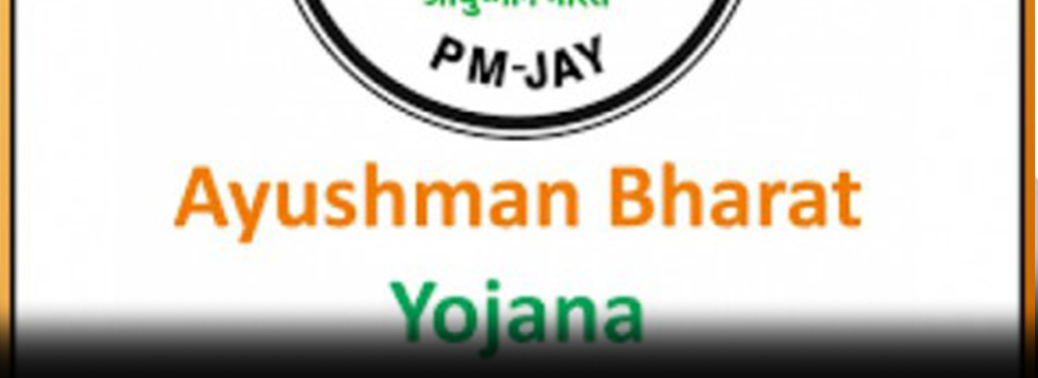
Why in News:
- The Health Ministry will focus on strengthening preventive strategies so that people adopt a healthy lifestyle.
Background: / Ayushman Bharat:
- The programme is aimed at making interventions to address health holistically, in primary, secondary and tertiary care systems.
- The initiatives under the programme are:
- Health and Wellness Centre
- National Health Protection Scheme
Health and Wellness Centre:
- National Health Policy, 2017 envisioned Health and Wellness Centres as the foundation of
India’s health system. - Under this, 1.5 lakh centres will bring health care system closer to the homes of people.
- The centres will provide comprehensive health care, including for non-communicable diseases and maternal and child health services.
- These will also provide free essential drugs and diagnostic services.
- Contribution of private sector through CSR and philanthropic institutions in adopting these centres is also envisaged.
National Health Protection Scheme:
- This will cover over 10 crore poor and vulnerable families.
- This would translate to around 50 crore beneficiaries.
- The scheme provides coverage of upto Rs. 5 lakh per family per year for secondary and tertiary care hospitalization.
- This is said to be the world’s largest government funded health care programme.
- Besides, 24 new Government Medical Colleges and Hospitals will be set up, by up-grading existing district hospitals in the country.
- This would ensure that there is at least 1 Medical College for every 3 Parliamentary Constituencies. Also, at least 1 Government Medical College in each State of the country.
- This is to further enhance accessibility of quality medical education and health care.
What is the Significance?
- Lakhs of families, at present, borrow or sell assets to receive inpatient treatment.
- The concern of the consequent impoverishment of poor and vulnerable families is a continuing one. Under the existing Rashtriya Swasthya Bima Yojana (RSBY), poor families get an annual coverage of Rs. 30,000. Several State governments have implemented or supplemented health protection schemes that provide varying coverage.
- The present initiatives will supplement these in taking health care to a larger mass.
- Higher health insurance cover is also seen as leading to a higher life expectancy.
- The scheme could potentially ensure enhanced productivity and well-being, averting wage loss and impoverishment.
AFTER ARTICLE 370, LEGISLATOR TRIGGERS DEBATE ON NAGALAND’S 371(A)
02, Jun 2019
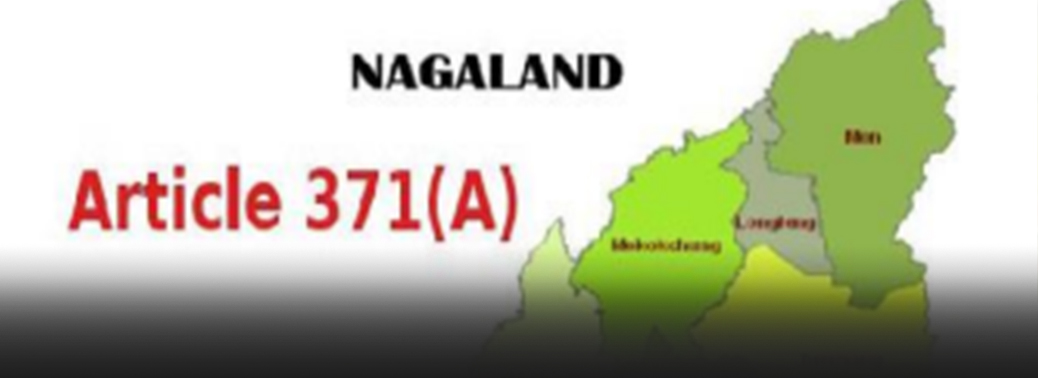
Why in News:
- A legislator of the ruling party in Nagaland has triggered a debate on Article 371(A) that guarantees special status for the people of the north-eastern State.
What is Article 370?
- Article 370 of the Indian Constitution is a ‘temporary provision’ which grants special autonomous status to Jammu & Kashmir.
- Under Part XXI of the Constitution of India, which deals with “Temporary, Transitional and Special provisions”, the state of Jammu & Kashmir has been accorded special status under Article 370. All the provisions of the Constitution which are applicable to other states are not applicable to J&K.
Important provisions
- According to this article, except for defence, foreign affairs, finance and communications,
Parliament needs the state government’s concurrence for applying all other laws. - Indian citizens from other states cannot purchase land or property in Jammu & Kashmir.
- Under Article 370, the Centre has no power to declare financial emergency under Article
360 in the state. Under Article 370, the Indian Parliament cannot increase or reduce the borders of the state. - Part IV (Directive Principles of the State Policy) and Part IVA (Fundamental Duties) of the Constitution are not applicable to J&K.
ARTICLE 371 – A → SPECIAL PROVISIONS FOR NAGALAND:
- An act of parliament relating to following matters would not apply to Nagaland unless state assembly so decides:
- Religious & social practices of Nagas Nagas
- customary law & procedure
- Administration of civil or criminal justice involving decisions according to Naga customary law Ownership & transfer of land & its resources
- Special responsibility of governor with respect to law & order in the state
- A regional council for Tuensang district, consisting of 35 members should be formed & governor in his discretion shall make all the rules & terms regarding this council
- Administration of Tuensang district shall be carried on by the governor
- Governor in his discretion shall arrange for equitable distribution of money, between Tuensang district & Rest of Nagaland, provided by the center.
- Final decision on all matters relating to Tuensang district shall be made by governor in his discretion. Members in Nagaland assembly from the Tuensang district are not elected directly by the people but by regional council.
STAY VERDICT ON CHENNAI-SALEM HIGHWAY FORTHWITH, NHAI URGES SC
02, Jun 2019

Why in news:
- The National Highways Authority of India (NHAI) has told the Supreme Court that the Madras High Court’s order quashing land acquisition notifications for the proposed Chennai-Salem eight-lane greenfield expressway would act as a deterrent for other infrastructure projects planned across the country under the Bharatmala Pariyojana
-Phase I.
Details:
- NHAI Contends that the High Court had given an erroneous finding that environmental clearance must be obtained even before acquisition of lands and not just before construction of the highway.
- NHAI claimed that such a finding would indefinitely delay all ongoing as well as future infrastructure projects in the country and consequently cripple economic activities.
- The NHAI said that the objective of Bharatmala Pariyojana was to improve efficiency of freight and passenger movement across the country by bridging critical infrastructure gaps through development of economic corridors, feeder routes, border and international connectivity roads and Greenfield expressways.
Project proposal:
- The Chennai-Salem greenfield corridor is a 277.3 km long, 8-lane highway project, proposed to connect Salem to Chennai. The proposed highway passed through Kanchipuram, Tiruvannamalai, Krishnagiri, Dharmapuri and Salem districts of Tamil Nadu. This is an agrarian region comprising reserved forest areas and several industrial zones. A feasibility study for the project pegged the total cost at Rs 9,106 crores.
- In addition, a tentative cost for rehabilitation and resettlement had been worked out to Rs 415 crores.
Objective
- There are three existing routes between Salem and Chennai:
- Ulundurpet to Chennai
- Walajah to Chennai
- the Chennai – Tiruvannamalai – Harur – Salem routes
- The government argues that the first two existing stretches are facing abnormal delays due to increasing traffic volume.
- The second stretch may not reduce travel time even if a bypass route was introduced.
- Thus, a direct Salem – Chennai highway may be the only solution to ease traffic and reduce the travel time. It was stated that the corridor would mostly involve drylands, but the land acquisition cost may not be very high when compared to the benefits.
- A subsequent feasibility report noted that the project is expected to generate development and employment in the towns along the route.
- Hence, considering the business potential and other benefits, the centre is said to have
approved the proposal and called it “Green Express Way Corridor”.
Impact
- The farmers feared that the project would destroy the most productive farmlands in Kancheepuram and Tiruvannamalai districts.
- It will have a huge impact on the environment and water bodies in the area.
- The court order also raised questions about a vulnerable reserve forest stretch near the project alignment. The court also based its judgment on major flaws in the project report submitted by a private consultant. Given the above drawbacks, the HC scrapped the feasibility study report which said the project would generate employment opportunities and lead to development.
SUPREME COURT STAYS MAHARASHTRA’S EWS QUOTA
31, May 2019

Why in News:
- The Supreme Court passed an interim direction that the 10% reservation for the economically weaker sections introduced by Maharashtra for postgraduate medical courses in the State through notifications, will not apply for this academic year.
Details:
- 103rd Constitutional amendment, Article 16 (6) was inserted, allowing States to make “any provision for the reservation of appointments or posts in favour of any economically weaker sections of citizens other than the classes mentioned in clause (4), in addition to the existing reservation and subject to a maximum of ten per cent of the posts in each category.”
- Court said that additional seats are sanctioned by the Medical Council of India, the existing seats cannot be subjected to the provisions of the aforesaid Constitutional amendment by issuing appropriate notifications.
- It is said that Modalities of selection cannot be changed after initiation of the process, in a similar matter involving reservation of 16% seats for socially and educationally backward classes including the Maratha community in the educational institutions in the State of Maharashtra in terms of provisions of the Maharashtra State Reservation (of Seats for Admission in Educational Institutions in the State and for Appointments in the Public Services and Posts under the State) for Socially and Educationally Backward Classes (SEBC) Act, 2018.
MAMATA’S MORPHED PHOTO: SC PULLS UP BENGAL GOVT FOR BJP LEADER’S OVERNIGHT DETENTION
15, May 2019

Why in News?
- The Supreme Court on Wednesday pulled up the West Bengal government for keeping BJP Yuva Morcha leader Priyanka Sharma behind bars overnight despite the court’s May 14 order to release her immediately on bail.
Details:
-
A Vacation Bench of Justices Indira Banerjee and Sanjiv Khanna even threatened contempt action against the State government.
- Ms. Sharma was arrested by the State Police and sent to 14 days of custody for allegedly posting a morphed image of Chief Minister Mamata Banerjee on social media.
- The arrest was “prima facie arbitrary” in the first place. On May 14, she was granted bail, the Vacation Bench asked her to apologies for the “meme”.
- Ms. Sharma was released at half-past nine on Wednesday. The order was to release her immediately.
Article 22:
Protection Against Arrest and Detention In Certain Cases
-
1.No person who is arrested shall be detained in custody without being informed, as soon as may be, of the grounds for such arrest nor shall he be denied the right to consult, and to be defended by, a legal practitioner of his choice.
- 2.Every person who is arrested and detained in custody shall be produced before the nearest magistrate within a period of twenty-four hours of such arrest excluding the time necessary
for the journey from the place of arrest to court of the magistrate and no such person shall be detained in custody beyond the said period without the authority of a magistrate.
Are the fundamental rights affected?
Article 19:
Protection of Certain Rights Regarding Freedom of Speech
-
Nothing shall affect the operation of any existing law, or prevent the State from making any law, in so far as such law imposes reasonable restrictions on the exercise of the right conferred by the said sub-clause in the interests of the sovereignty and integrity of India, the security of the State, friendly relations with foreign States, public order, decency or morality, or in relation to contempt of court, defamation or incitement to an offence.
- The Supreme Court on Wednesday pulled up the West Bengal government for keeping BJP Yuva Morcha leader Priyanka Sharma behind bars overnight despite the court’s May 14 order to release her immediately on bail.
Details:
- A Vacation Bench of Justices Indira Banerjee and Sanjiv Khanna even threatened contempt action against the State government.
- Ms. Sharma was arrested by the State Police and sent to 14 days of custody for allegedly posting a morphed image of Chief Minister Mamata Banerjee on social media.
- The arrest was “prima facie arbitrary” in the first place. On May 14, she was granted bail, the Vacation Bench asked her to apologies for the “meme”.
- Ms. Sharma was released at half-past nine on Wednesday. The order was to release her immediately.
- 1.No person who is arrested shall be detained in custody without being informed, as soon as may be, of the grounds for such arrest nor shall he be denied the right to consult, and to be defended by, a legal practitioner of his choice.
- 2.Every person who is arrested and detained in custody shall be produced before the nearest magistrate within a period of twenty-four hours of such arrest excluding the time necessary
for the journey from the place of arrest to court of the magistrate and no such person shall be detained in custody beyond the said period without the authority of a magistrate. - Nothing shall affect the operation of any existing law, or prevent the State from making any law, in so far as such law imposes reasonable restrictions on the exercise of the right conferred by the said sub-clause in the interests of the sovereignty and integrity of India, the security of the State, friendly relations with foreign States, public order, decency or morality, or in relation to contempt of court, defamation or incitement to an offence.
Article 22:
Protection Against Arrest and Detention In Certain Cases
Are the fundamental rights affected?
Article 19:
Protection of Certain Rights Regarding Freedom of Speech
Assam NRC: Supreme Court frowns on foreigners’ tribunals plan
10, May 2019
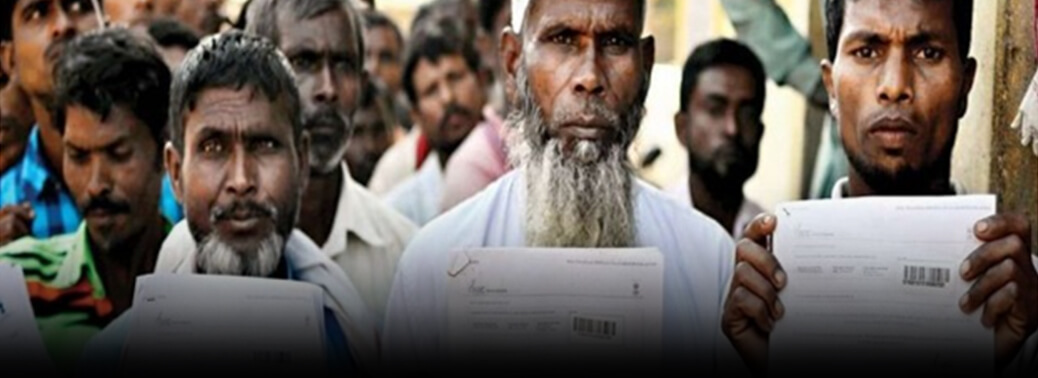
Why in news
- The Supreme Court questioned a proposal by the Assam government to quickly throw open 1,000 foreigners’ tribunals all over the northeastern State to try suspected illegal immigrants.
Details:
- A Bench led by Chief Justice Ranjan Gogoi said it looked like the State government hatched the plan without bothering to conduct a “basic study” of how to carry it out.
- A 1,000 tribunals means a 1,000 judicial officers to preside over them.
- The CJI hinted at the possible flood of petitions which would hit the foreigners’ tribunals once the final NRC was published
- These petitions would be from people who had not been able to prove their Indian citizenship.
- The court, which is also examining the plight of 900-odd illegal immigrants languishing in Assam’s detention centres for years, said it was in favour of releasing them.
What is National Register of Citizens (NRC)?
- National Register of Citizens, 1951 is a register prepared after the conduct of the Census of 1951 in respect of each village, showing the houses or holdings in a serial order and indicating against each house or holding the number and names of persons staying therein.
Who is a citizen in Assam?
- The Citizenship Act of 1955 was amended after the Assam Accord for all Indian-origin people who came from Bangladesh before January 1, 1966 to be deemed as citizens. Those who came between January 1, 1966 and March 25, 1971 were eligible for citizenship after registering and living in the State for 10 years while those entering after March 25, 1971, were to be deported.
Impact
- An updated NRC is likely to put an end to speculations about the actual number of illegal migrants in Assam in particular and the country in general.
- It will provide a verified dataset to carry out meaningful debates and implement calibrated policy measures.
- Publication of an updated NRC is expected to deter future migrants from Bangladesh from entering Assam illegally.
- The publication of the draft NRC has already created a perception that staying in Assam without valid documentation will attract detention/jail term and deportation.
- More importantly, illegal migrants may find it even more difficult to procure Indian identity documents and avail all the rights and benefits due to all Indian citizens.
- Inclusion of their names in the NRC will provide respite to all those Bengali speaking people in Assam who have been, hitherto, suspected as being Bangladeshis.
Way Forward
- India, as a country which follows the ideology of ‘VasudhaivaKutumbakam’, should not be hasty in taking decisions that can disenfranchise her citizens – contradicting its centuries-followed values.
- The need of the hour is that Union Government should clearly chart out the course of action regarding the fate of excluded people from final NRC data and political parties should refrain from coloring the entire NRC process through electoral prospects that may snowball in to communal violence.
- There is a need for a robust mechanism of legal support for the four million who have to prove their citizenship to India with their limited means.
GENDER STEREOTYPES LEAVE IMPRINT ON BRAINS
22, Apr 2019

Why in News:
- Scientists say that Society’s expectations about gender roles alter the human brain at the cellular level.
Details:
- Sex is based on biological factors such as sex chromosomes and reproductive organs, whereas gender has a social component and involves expectations and behaviours based on an individual’s perceived sex. Scientists reviewed previous studies of epigenetics and sexual differentiation in rodents, along with new studies in which gendered experiences among humans have also been associated with changes in the brain.
- Sex:
- The biological difference between men and women, boys and girls – the physical attributes with which we are born.
Gender:
- Culturally and socially constructed roles, responsibilities, privileges, relations and expectations of women, men, boys and girls. Gender is not another word for women. Gender is also not another word for sexual difference.
A working definition of Gender:
- People are born female or male or transgender, but are forced to learn to be girls and boys who grow into women and men. They are taught appropriate behaviour and attitudes according to defined gender roles and activities. This learned behaviour is what makes up gender identity, and determines gender roles.
Gender gap:
- Differences between men and women in levels of achievement or access. This could for example be access to education or health care and treatment services or differentials in wages paid to women and men. These differentials may result from customary practices, religious biases, social assumption, myths or taboos, among others.
Gender Discrimination:
- Where one gender is favoured and the other becomes disadvantaged e.g. sex selective abortion. Gender oppression: Where one gender dominates the other unjustly or even cruelly. For instance, domestic violence, rape, sexual harassment.
- As the worst fall out of disparity and mind blocks in the area of role perception, comes the vice of gender discrimination. The three most prominent facets of sexual discrimination are Societal Perpetration;
- Domestic Violence and Sexual Harassment at Workplace.
- There are socially accepted expressions like “boys are boys” and norms supporting dowry, still prevalent in society. They highlight the unfortunate social approval towards sexual discrimination. So far as domestic violence is concerned, even after a decade since the Protection of Women from Domestic Violence Act was passed in 2005, there is no significant change in the crime rate against women.
- As per data published by National Crime Records Bureau (NCRB), dowry death was 0.3% of the total number of crimes, as defined under Indian Penal Code (IPC), in 2013. The figure remains the same in 2014.
- In fact, crime against women as percentage of total number of crimes committed in India has increased from 11.7% in 2013 to 11.9% in 2014. However, perhaps the most unreported amongst these crimes are the ones amounting to “sexual harassment at workplace”. For one, there was no clear law on the subject before 2013 and for the other, many women used to desist reporting. Even now, it is believed that a good number of them don‘t report incidents of sexual harassment for reasons ranging from love to terror.
Gender bias:
- An approach that treats boys and girls differently. For instance differential treatment seeking behaviour in case of illness.
Gender Equity:
- An approach that results in just/ fair treatment of women and men, and recognition and appreciation of both women‘s and men‘s potential. For instance giving bicycles to girls to enable them to travel to a distant school and thereby reduce gender gaps in the drop-out rate.
Gender Mainstreaming:
- The process of assessing the implications for women and men of any planned action, including legislation, policies or programmes, in any area and at all levels. It is a strategy for making the concerns and experiences of women as well as of men an integral part of the design, implementation, monitoring and evaluation of policies and programmes in all political, economic and societal spheres, so that women and men benefit equally, and inequality is not perpetuated. The ultimate goal of mainstreaming is to achieve gender equality.
Gender Neutral:
- An approach to planning and policy making that assumes that the impact on women, men, girls and boys as if they were part of one homogeneous group. For instance, although me n are usually taller than women, fixing the height of the podium in conference halls on the basis of the height of men.
Gender needs
- Needs which are related to satisfying basic and material needs of women and men, girls and boys for their day-to- day survival, and which do not change gender patterns. For instance, public provisioning of water inside the home or providing access to creche facilities at the workplace.
IN HIS OWN CAUSE: ON COMPLAINT AGAINST CJI RANJAN GOGOI
22, Apr 2019
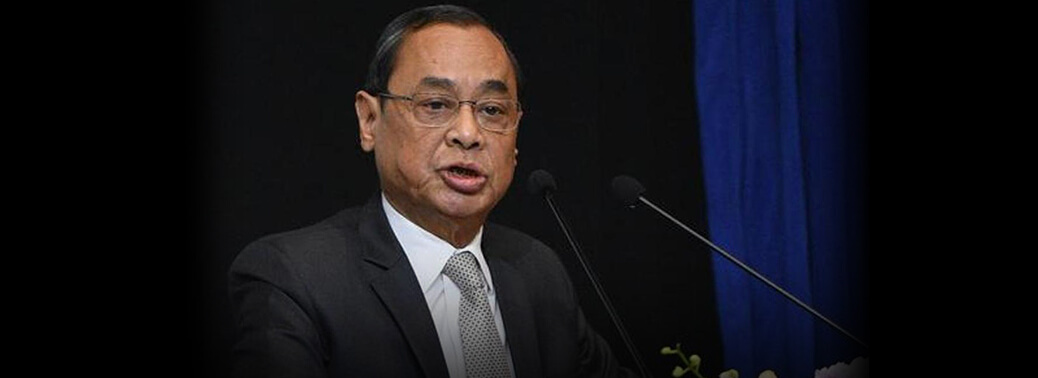
Why in News:
- Chief Justice of India has been victimised for sexual harassment by former Supreme court employee
Details:
- An issue within the domain of an internal process was taken up by a special Bench constituted by CJI Ranjan Gogoi, comprising himself, Justice Arun Mishra and Justice Sanjiv Khanna.
- A mention by the Solicitor-General, was listed as ‘Re: Matter of Great Public Importance
- Touching upon the Independence of the Judiciary’.
- The Supreme Court itself has an internal sub-committee under its Gender Sensitization and Sexual Harassment of Women at Supreme Court (Prevention, Prohibition and Redressal) Guidelines, 2015.
- The complainant by a former junior court assistant, made her charge in the form of an affidavit, supported by purported evidence, and sent it to 22 judges of the court.
- It referred to likely witnesses to the alleged sexual harassment and victimisation.
Issues:
- The decision to hold an open court hearing is questionable. A complaint of this nature requires an institutional response on the administrative side.
- There should be an internal process to initiate an inquiry mandated by the law regarding sexual harassment at the workplace. There is a separate ‘in-house procedure’ to deal with complaints against judges, under which their judicial peers, and not outsiders, will examine them. CJI ought not to have presided over the special Bench that took up the matter that concerned himself. Senior-most judges were kept out of Benches handling major cases, where CJI went on to form a Bench that included himself but not the two senior-most judges after him. Nor was there a woman judge on the Bench.
Sexual Harassment Law
- The Sexual Harassment of Women at Workplace (Prevention, Prohibition and Redressal) Act, 2013 is a legislative act in India that seeks to protect women from sexual harassment at their place of work. It was passed by the Lok Sabha (the lower house of the Indian Parliament) on 3 September 2012.
- It was passed by the Rajya Sabha (the upper house of the Indian Parliament) on 26 February 2013. The Bill got the assent of the President on 23 April 2013.
- The Act came into force from 9 December 2013. Under the Act, which also covers students in schools and colleges as well as patients in hospitals, employers and local authorities will have to set up grievance committees to investigate all complaints. Employers who fail to comply will be punished with a fine of up to 50,000 rupees.
The key provisions of the present Act
- Sexual Harassment of Women at Workplace (Prevention, Prohibition and Redressal) Act was passed in 2013.
- It broadens the Vishaka guidelines, which were already in place.
- Definition – An aggrieved victim is a woman “of any age whether employed or not”, who “alleges to have been subjected to any act of sexual harassment”.
- The Act thus covers the rights of all women working or visiting any workplace, in any capacity.
- Sexual harassment is any one or more of “unwelcome acts or behaviour”, committed directly or by implication.
They include:
- Physical contact & advances
- A demand or request for sexual favours Sexually coloured remarks
- Showing pornography
- Any other unwelcome physical, verbal or non-verbal conduct of sexual nature Additionally, the Act mentions five circumstances that amount to sexual harassment: implied or explicit promise of preferential treatment in her employment
- implied or explicit threat of detrimental treatment
- implied or explicit threat about her present or future employment status interference with her work or creating an offensive or hostile work environment humiliating treatment likely to affect her health or safety
Highlights:
- The bench was acting on online media reports of sexual harassment complaint made by a former junior assistant of the CJI, against him.
- The CJI had received a communication from four leading websites saying that a letter is
- being circulated by a dismissed SC employee alleging that CJI has sought sexual favours from her. The letter stated that the woman’s family had been threatened, harassed and criminal cases were filed against them. The bench took the special hearing on April 20 after it was mentioned by Solicitor General of India, Tushar Mehta.
Vishaka Guidelines:
- The Vishaka guidelines were laid down by the Supreme Court in Vishakha and others v State of Rajasthan judgment in 1997. It imposes three key obligations on employing institutions prohibition, prevention, and redress. The institutions are mandated to establish a Complaints Committee. This was to look into matters of sexual harassment of women at the workplace. These guidelines are legally binding.
Way Forward:
- This is a serious matter that requires careful processing.
- It is possible even now to send the complaint to an independent committee.
- Only reasonable and fair means of establishing the innocence the CJI has to be asserted.
DEEP IN MAOIST TURF, NO SIGN OF POLLS
10, Apr 2019

Why in news?
- For years, in dandakaranya villages many have not seen a candidate.
Details:
- Nearly a year after around alleged 40 Maoist guerrillas were gunned down by security forces near the village described by civil rights activists as a “questionable” encounter, some 27 families continue to live in the shadow of fear. The village seems to have completely missed out on the biggest celebration of Indian democracy — the Lok Sabha election.
Inaccessible booths
- Many villagers do not have a voter identity card. Several inhabitants also suffer from infectious ailments such as impetigo and eczematous dermatitis — evidence of abject poverty — making it near impossible for them to walk to the nearest polling booth.
Rare sighting
- The village lies at the end of the barely motorable road, which cuts through the dense
- beauty of Dandkaranya, at the heart of central India’s Naxal movement. Deep inside the forest, a ‘candidate’ is almost an extinct species
Naxalite:
- The term Naxal derives from the name of the village Naxalbari in West Bengal, where the Naxalite peasant revolt took place in 1967.
- Naxalites are considered far-left radical communists, supportive of Mao Zedong s political ideology. Initially, the movement had its epicentre in West Bengal. In later years, it spread into less developed areas of rural southern and eastern India, such as Chhattisgarh Odisha Andhra Pradesh and Telangana through the activities of underground groups.
- The areas under the Naxal control are today referred to as the Red Corridor.
Why progress in such areas are slow?
- Weak execution of the programmes and policies Disconnect between the central and the state governments
- Funds allocated are misappropriated or simply do not yield result. The Tribal Advisory Councils have not functioned effectively
- Ill-trained administrative personnel. Ignorance of the tribal people regarding the laws of the land leading to their easy exploitation along with the denial of justice
- Deforestation, exploitation, loss of land leading to unemployment and curtailment of their traditional right to access the forest
Government Efforts:
- ‘Police’ and ‘Public Order’ being State subjects, action on maintenance of law and order lies primarily in the domain of the State Governments.
- Filling up critical infrastructure gaps under the Scheme for Special Infrastructure in Left Wing Extremism affected States. Assistance in training of State Police through the Ministry of Defence. Assistance in community policing and civic action programmes
- National Policy and Action Plan to address Left Wing Extremism’, aimed at eliminating the
- menace in the shortest possible timeframe. Anti-left-wing extremism (LWE) policy to enhance the deployment of central forces in the Naxal infested areas in the state
SC to hear plea against 10% economic quota
29, Mar 2019
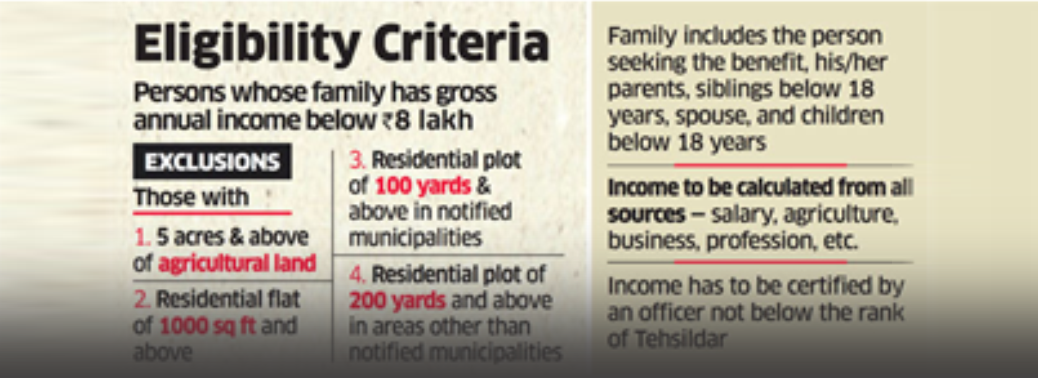
The Supreme Court agreed to expeditiously hear pleas for it to step in before government bodies like the Railways, one of the largest public sector employers, implement the 10% economic quota to make what the petitioners termed massive appointments.
If the Supreme Court rejects the idea, the reservation can be provided only by eating into the SC, ST and OBC quota share
Who will the new 10% quota apply to?
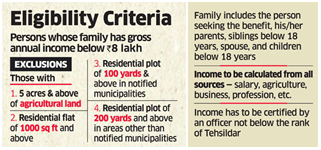
To all those who are not covered in existing quotas and have a family income below 8 lakh a year or agricultural land below 5 acres. Those who have a house above 1,000 square feet or a 100-yard plot or above in a notified municipal area or a 200-yard plot or above in a non-notified municipal area are not eligible.
What steps are necessary for its implementation?
The 124th Constitution Amendment Bill, 2019, which the Lok Sabha debated on Tuesday, will have to be passed by both Houses of Parliament by a special majority of two-thirds of the members present and voting, which should not be less than one-half of the total strength of the House. If it is not passed by both the Houses within the term of this Lok Sabha, it will lapse. The Bill will also have to be ratified by at least half the State Assemblies.
Once the Constitution is amended to add economic backwardness as a ground for reservations, it will most likely have to stand the test of judicial scrutiny, as the Supreme Court had in the Indra Sawhney case capped quotas at 50% of the available seats.
What are the future implications, should the Bill stand judicial scrutiny?
If the Supreme Court indeed agrees to lift the 50% cap, all States of India can extend the quantum of reservation and “upper castes” will stand to lose in State services.
If the Supreme Court rejects the idea of breaching the 50% cap, Economically Weaker Section (EWS) quotas can be provided only by eating into the SC, ST and OBC quota pie, which will have social and political implications.
How will it help the economically less prosperous “upper caste” Hindus and such groups in other communities?
It’s complicated question. If the EWS is treated as a category just like the SC, ST and OBC, a large chunk of general category candidates will apply for just 10% seats and the cut-offs can rise.
While ideally the non-reserved 40% open seats should be open seats based on merit, there are complexities here too. For example, the UPSC accepts a reserved candidate in the civil services examination making it in the general merit list as general only if she has not benefited from reservation in the preliminary, mains, service choice (if one gets a better service, say IAS or IPS, due to reservation, one is counted as reserved irrespective of one’s overall rank) and State cadre choice (if a reserved candidate is in the general merit list but is getting a cadre of her choice as a reserved candidate, she is counted as reserved), say bureaucrats.
So, many who are above the general cut-off may still occupy this 10% quota, as they get a better service or cadre in it.
It is possible that a provision will be made for accommodating those who fall below the 10% EWS quota in case its cut-off is above the general cut-off due to fewer seats in the open, or general, seats, but this can give rise to litigation.
What are the political implications of this move?
Upper castes may react positively to the move, but they are believed to be largely with the BJP anyway.
The move may have some appeal to upper castes in States where the BJP is weak, but one does not know the extent of the political benefit.
The moot question is the impact on the existing reserved categories in States where the BJP is strong and takes a chunk of OBCs.
While the government says the quota will be above the existent 50% reservation, the Supreme Court-mandated cap may make some OBCs wary, as they may feel it may eat into their pie in case the apex court refuses to relax the cap.
SHRC SEEKS REPORT ON TRANSFUSION DEATHS
28, Mar 2019
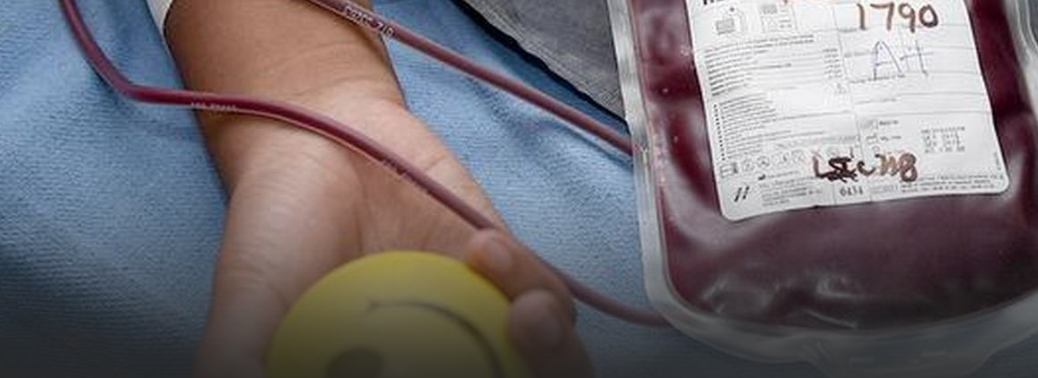
- Taking suo moto cognisance of media reports on maternal deaths due to blood transfusion,
- the State Human Rights Commission (SHRC) has issued notices to officials in the Department of Health and Family Welfare, seeking a report on the incident within two weeks.
Background:
- During a maternal death audit, officials found a higher number of deaths due to haemolytic reactions at the Government Medical College Hospitals.
Human Rights Commission:
- The Protection of Human Rights Act of 1993 provides for the creation of not only the National Human Rights Commission but also a State Human Rights Commission at the state level.
Jurisdiction:
- A State Human Rights Commission can inquire into violation of human rights only in respect of subjects mentioned in the State List (List-II) and the Concurrent List (List-III) of the Seventh Schedule of the Constitution. However, if any such case is already being inquired into by the National Human Rights Commission or any other Statutory Commission, then the State Human Rights Commission does not inquire into that case.
Composition:
- The State Human Rights Commission is a multi-member body consisting of a chairperson and two members.
- The chairperson should be a retired Chief Justice of a High Court and members should be a serving or retired judge of a High Court or a District Judge in the state with a minimum of seven years of experience as District Judge and a person having knowledge or practical experience with respect to human rights.
- The chairperson and members are appointed by the Governor on the recommendations of a committee consisting of the chief minister as its head, the speaker of the Legislative Assembly, the state home minister and the leader of the opposition in the Legislative Assembly.
- In the case of a state having Legislative Council, the chairman of the Council and the leader of the opposition in the Council would also be the members of the committee.
- A sitting judge of a High Court or a sitting District Judge can be appointed only after consultation with the Chief Justice of the High Court of the concerned state.
Term:
- The chairperson and members hold office for a term of five years or until they attain the age of 70 years, whichever is earlier.
- After their tenure, the chairperson and members are not eligible for further employment under a state government or the Central government.
Appointment and Removal:
- Although the chairperson and members of a State Human Rights Commission are appointed by the governor, they can be removed only by the President (and not by the governor).
- The President can remove them on the same grounds and in the same manner as he can remove the chairperson or a member of the National Human Rights Commission
Indelible Ink for Election
21, Feb 2019
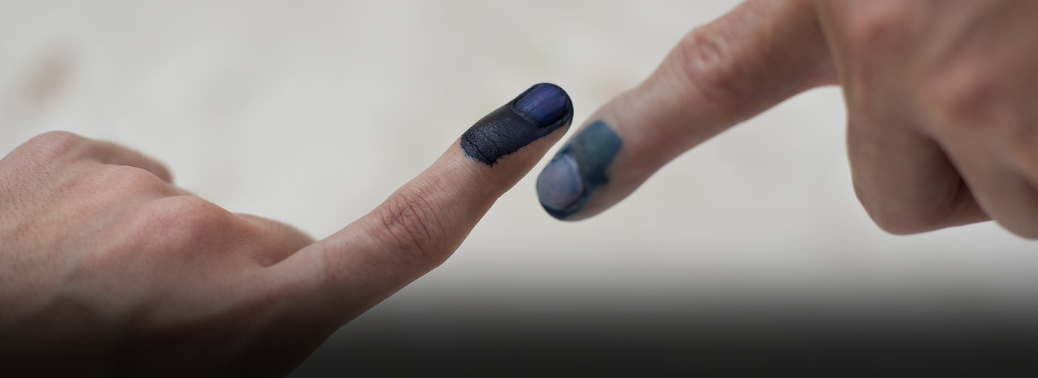
- The Delhi-based National Physical Laboratory (NPL), the creator of indelible ink, has a new concoction that, when applied on the finger, doesn’t leave a trace it merely glows a bright orange when a low-intensity beam of ultraviolet light is shone on it.
About:
- The NPL prepared the ‘invisible ink’ as part of a pilot project mooted by the Mysore Paints and Varnish Ltd. (MVPL).
- Indelible ink, the purple stain that billions of Indians show off during elections, may face an invisible challenger in the near future.
- The MVPL discussed with us the development of such an ink for use by a client [country] in Europe.
- The MVPL, a Karnataka government company, has a monopoly on the manufacture of indelible ink since 1962, and is a major supplier to the Election Commission of India (ECI). It also exports the indelible ink for elections in other countries.
- The indelible ink was formulated as a deterrent against voting twice. But strangely enough, voters in some countries found the stained finger rather unseemly.
- In India, we are proud to display our voter’s ink, but apparently in some countries people don’t want to display such a mark. So MVPL asked us if there was a solution.
Organic-inorganic mix:
- The NPL’s invisible ink, however, wouldn’t be of immediate use to the EC. The current formulation can’t be used for Indian elections as they are spread out over many weeks. We would need a different formulation.
- The chemical a transparent liquid as an “organic-inorganic” mixture that was biodegradable and could be washed off in 48 hours.
- The ink works on the well-known principle of fluorescence certain materials emit a characteristic glow when exposed to ultraviolet light. The NPL ink, however, glows only when exposed to a narrow band of frequencies of ultraviolet (UV) light.
- Commercial UV markers or inks respond to a very broad spectrum of UV light. So, along with the ink, we’ll supply an inexpensive LED (costing no more than Rs. 30) that would emit a specific frequency of UV.
- The NPL’s invisible ink experiment is linked to a larger project of creating security inks that could be used to make bank notes and documents, such as passports, more secure.
Centre drafts child protection policy
19, Dec 2018

Context:
- The Centre has drafted child protection policy, prepared on the prodding of the Supreme Court in the wake of the Muzaffarpur shelter abuse case, mainly to curb the instances of abuse of minors in shelter homes and child care institutions.
Details:
- The drafted policy has been placed by the Ministry of Women and Child Development on their website and they have invited comments from stakeholders until January 4.
- This will be the first policy dedicated to the protection of children, an area that until now was only a part of the broader National Child Policy, 2013.
- The Supreme Court had earlier directed the CBI to investigate allegations involving 17 shelter homes for children, destitute women, beggars and senior citizens in Bihar following the case of sexual abuse of more than 30 girls in a shelter home in Muzaffarpur in the State.
- The Supreme Court had also asked the Centre to consider framing a national policy on protection of children.
Important features of the policy:
- As per the draft, the policy will apply to “all institutions, and organisations (including corporate and media houses), government or private sector”.
- The draft policy recommends that all organisations must have a code of conduct based on “zero tolerance of child abuse and exploitation”.
- It requires organisations to lay down that employees don’t use language or behaviour that is “inappropriate, harassing, abusive, sexually provocative, demeaning or culturally inappropriate”.
- Institutions should also designate a staff member to ensure that procedures are in place to ensure the protection of children as well as to report any abuse. Any individual who suspects physical, sexual or emotional abuse must report it to the helpline number 1098, police or a child welfare committee.
Concerns in the policy:
- Unlike the National Child Policy, 2013, the latest document doesn’t talk about children who may need additional special protection measures: including those affected by migration, communal or sectarian violence, children forced into begging or in conflict with the law, and those infected with HIV/AIDS.
- It also doesn’t talk about the role of the state for ensuring the protection of child rights or addressing local grievances.
- There is no clear definition on what exactly child protection means to everyone and also no clear definition on what constitutes institutions and organisations.
National Commission for Women
18, Dec 2018

- The National Commission for Women was set up as statutory body in January 1992 under the National Commission for Women Act, 1990 (Act No. 20 of 1990 of Govt. of India ) to :
- Review the Constitutional and Legal safeguards for women
- Recommend remedial legislative measures
- Facilitate redressal of grievances and
- Advise the Government on all policy matters affecting women.
- The objective of the NCW is to represent the rights of women in India and to provide a voice for their issues and concerns. The subjects of their campaigns have included dowry, politics, religion, equal representation for women in jobs, and the exploitation of women for labour. They have also discussed police abuses against women.
- The commission regularly publishes a monthly newsletter, Rashtra Mahila, in both Hindi and English.
Global Compact for Migration:
- The Global Compact for Safe, Orderly and Regular Migration (GCM) is an intergovernmentally negotiated agreement, prepared under the auspices of the United Nations that covers “all dimensions of international migration in a holistic and comprehensive manner”.
- At the Intergovermental Conference to Adopt the Global Compact for Safe, Orderly and Regular Migration, which was held from 10–11 December 2018, 164 nations met under the auspices of the United Nations General Assembly at Marrakesh, Morocco, in order to formally agree upon the Compact.
- As the Compact is not an international treaty, it will be non-binding under international law. However, as with similar United Nations agreements, it will formally be a politically binding commitment.
- Under this declaration, signatory UN member countries had decided to develop global compact for safe, orderly and regular migration.
- The purpose of Global compact of migration is to provide significant opportunity to improve governance on migration, address challenges associated with today’s migration, and strengthen contribution of migrants and migration to sustainable development.
- It sets out 23 objectives to deal issues ranging from factors that compel people to move, legal channels for migration, combating trafficking and smuggling, harnessing the economic benefits of migration and return of the migrants.
Lack of basic rights for the aged a concern: Sc
14, Dec 2018
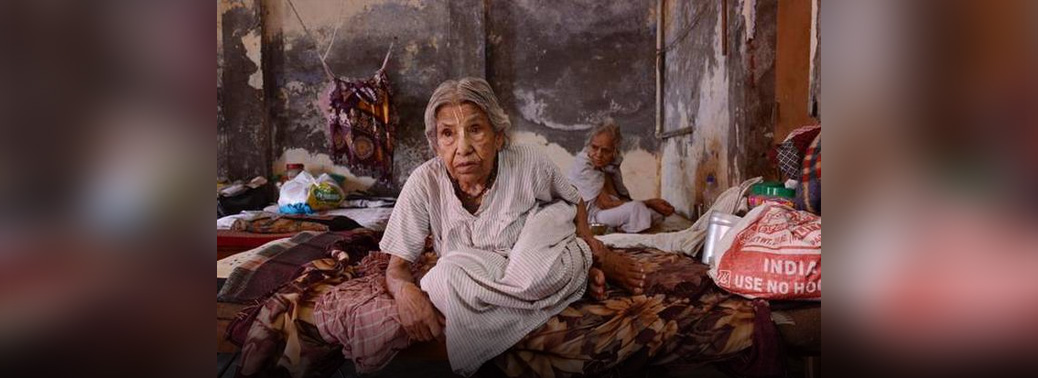
Context:
- The Supreme Court has said the government should provide adequate economic support to the aged people for their better livelihood.
Details:
- The Supreme Court termed the rights of the rising elderly population of the country an “emerging situation” not envisaged even in the Constitution.
- It further added that the government could not tighten its purse strings in the name of “economic budgeting” to explain the inadequate welfare provided to senior citizens and the aged.
- It said that it was a statutory right of every aged person under the Maintenance and Welfare of Parents and Senior Citizens Act of 2007 to be provided dignity, health and shelter. All the three are important components which make the fundamental right to life under Article 21.
- It ordered the Centre to obtain the “necessary information” from all the State governments and the Union Territories about the number of old age homes in each district and file a status report by January 31.
- This data would be necessary to prevent them from mishaps and other unforeseen events
- And also ordered the Centre to obtain details from the States about the medical and geriatric care facilities available to senior citizens in each district.
- The court directed that the Centre should prepare a plan of action for giving publicity to the provisions of 2007 Act and ensure that the State governments carry out and execute the provisions of the law.
About Maintenance and Welfare of Parents and Senior Citizens Act of 2007:
- A legislation initiated by the Ministry of Social Justice and Empowerment
- It was enacted in order to provide more effective provision for maintenance and welfare of parents and senior citizens.
- This Act makes it a legal obligation for children and heirs to provide maintenance to senior citizens and parents, by monthly allowance.
- This Act also provides simple, speedy and inexpensive mechanism for the protection of life and property of the older persons.
- The Ministry has drafted the Maintenance and Welfare of Parents and Senior Citizen Draft Bill, 2018, to expand its scope and provide for more stringent penalties.
Centre Rejects State’s Request to Grant Religious Minority Tag to Lingayat/Veerashaiva Community
11, Dec 2018

Context:
- The Union government on Monday told the Karnataka High Court that it has rejected the recommendation of the State government to grant religious minority status to Lingayat and Veerashaiva community.
Details:
- The Centre has taken a stand that Lingayat/Veerashaiva community is part of Hindu religion.
- The Centre has said that a similar request was considered earlier and it was observed that Lingayats were always classified under Hindus since 1871 census, the first official census of India
- Further,the Centre has claimed that all members of scheduled caste professing Veerashaivas/Lingayat religion would lose their status if is treated as a separate religion
About Lingayats/Veerashaivas community:
- Lingayats are followers of 12th-century social reformer Basavanna and his vachana (verses) philosophy.
- Their beliefs, practices and faith are different.
- Veerashaivas worship Lord Shiva, the one mentioned in Hindu mythology. However, the Shiva that Basavanna referred to in his vachanas (verses) is not the Hindu god Shiva but the ishtalinga (formless God), which people of the community wear around their neck.
- Veerashaivas are a sub-sect of Lingayats and ardent followers of Lord Shiva. They preceded Basavanna, the founder of Lingayatism.
- Veerashaivism has its roots in the Vedas and Agamas, and Veerashaivas do not worship any god other than Shiva; they can be found spread across Karnataka, Kerala, Maharashtra, Andhra Pradesh and Telangana.
About Basavanna:
- Basavanna was a 12th-century social reformer. The revolution that Basavanna led came years after the Buddha.
- It was Basavanna and his contemporary Sharanas who launched a very strong spiritual, social and religious rebellion against Brahminical hegemony.
- Basavanna had declared that “work is worship”. He gave women equal status in his movement through the vachanas (verses).
- In order to take the social movement closer to the people, Basavanna and all the other Sharanas voiced their concerns in simple Kannada vachanas so that even lay people could comprehend them.
Allow Women in Nizamuddin Dargah, Says Petition in HC
11, Dec 2018

Details:
- Two months after the Supreme Court lifted the centuries-old practice of prohibiting women to enter the Sabarimala in Kerala, a petition on similar lines has been moved before the Delhi High Court seeking entry of women into the sanctum sanctorum of the Hazrat Nizamuddin Aulia Dargah here.
- A High Court bench sought the reply of the Centre, the city government and police on the petition. The Bench also sought response from the trust managing the dargah (shrine) before the next date of hearing
- It was contended by the petitioners that Nizamuddin dargah by its very nature is a public place and prohibition of entry of anyone in a public place on the basis of gender is contrary to the framework of the Constitution of India
Ascent to the temple of democracy
11, Dec 2018

What’s in the Editorial?
- Kerala’s reputation as a society that has evolved to an exceptional degree may have taken a bit of a beating. The reputation itself has been built on the strides made in the sphere of development, by now internationally recognised to be human development as reflected in the health and education status of a people.
The Kerala paradox:
- When it was first noticed over four decades ago, Kerala’s perceived uniqueness had stemmed from the realisation that it was among India’s poorest States. To have achieved fairly high human development despite relative poverty was considered noteworthy.
- What was not apparent in the usual indicators, however, was something even more unique, the ending of social hierarchy. The caste system, which was at the centre of Kerala’s social arrangements, disintegrated virtually overnight. This was fuelled by the enactment of a land reform programme that ended feudalism. With feudalism went the equivalence between caste dominance and economic power.
The Marxian Perspective:
- If evidence ever was needed for the Marxian view that it was the economic base of a society that undergirded its ‘superstructure’ this was it. What is significant is that the transition had been smooth, without recrimination for loss or retribution for injustice.
- Social distance in terms of caste distinctions just died.
- Given the experience of the ending of a feudalism that had persisted for centuries in Kerala, the reception to the Supreme Court’s verdict on the practice of excluding women of menstruating age from the shrine at Sabarimala is disappointing.
- It is not as if the ruling has been received with sullen acceptance alone. It has been followed by vigilantes actually preventing the very few women who have attempted to enter the shrine since from doing so.
- Reports of heckling and intimidation that have led to disheartened women returning without darshan is likely to have left many a Malayali patriot ashamed.
- To understand the reaction to one of the last bastions of male privilege being thrown open to women, we may turn to the work of the philosopher Michel Foucault.
Foucault Observation:
- Foucault had observed that while Marxism, a powerful tool for social analysis, emphasises the relations of production, it ignores the relations of power. Power for Foucault is ubiquitous and ramifies into every dimension of human association. Patriarchy or the idea of rule by men would be one of the sources of power. Heteronormativity and the claim of the racial superiority of certain ethnic groups have also served as sources of power. Power for Foucault can draw its force from sources that are entirely unrelated to economic class.
- Thus in Kerala, for instance, patriarchy is entrenched across all classes and social groups. It did not vanish with the land reforms, even if its architects had wanted it to happen. From the recent events at Sabarimala we can see that some sections do not want it to lose its stranglehold even today.
A historic perspective:
- The opposition to women’s entry at Sabarimala is at times met with an appeal to history, that the temples of Kerala have witnessed far greater transformation in the past, having been thrown open to all sections of Hindus over 75 years ago.
- While this history is correctly recounted, the issue of women’s entry into temples is not a matter of accepting the inevitability of change, it is a matter of recognising what living in a democracy implies for its members.
- Even as democracy guarantees rights to the individual, it requires him to acknowledge the rights of others.
- It is easily overlooked that it is democracy that grants the freedom to practise a religion. The Church was discouraged in the former Soviet Union, China frowns upon the faith of the Uighurs, and the Saudi Arabian state is not exactly tolerant of religious plurality.
Linked to representation:
- However, while democracy assures freedom to practise religion, citizens are expected to practise it in a way that is consistent with democracy.
- So the traditionalists on the Sabarimala issue must recognise that by excluding women, they are not keeping their side of the social contract as it were. In a democracy, the social contract is not between the state and the people, it is one entered into by citizens among themselves.
Ambedkar’s Social contract:
- As B.R. Ambedkar is believed to have advised Jawaharlal Nehru, you cannot have a republic within a republic. In the Indian context, the implication of this principle is that religion must be practised in a way consistent with constitutional values; at a minimum the practices cannot be discriminatory. Legal provisions against domestic violence and the ill-treatment of children point to the reach of democracy even into our homes. Religion cannot claim special dispensation. It need hardly be emphasised that the principle that religion be practised in accordance with the norms of democracy extends to all religions. Indian secularism would be tested on this idea.
- In a way, the opposition to the entry of women to Sabarimala is reflective of a wider inequality between men and women that may be observed in Malayali society. Two indicators point to this, despite the very high literacy levels registered by women and a significant presence of women with higher education. First, female labour force participation is low in Kerala in comparison with other States. Surely the equality of women must be visible in their participation in the workforce. In Kerala, women were once a major presence in agriculture but this declined when paddy cultivation atrophied. The low female labour force participation in Kerala affects their ability to influence social norms, especially social attitudes towards female agency.
- Second, the presence of women in governance roles is very low in Kerala. Three indicators may be noted, namely, the percentage of women legislators, judges in the High Court and leaders of political parties. It may come as a surprise to note that for the former two indicators the number is lower for the State than it is for Tamil Nadu and Gujarat.
- This despite the fact that Malayali women participate in elections at least to the same extent as men. Political parties of Kerala have made little effort to induct women into leadership positions.
- How much of this is due to male chauvinism and how much to inadequate women’s agency is a question to be debated. However, a recent incident does help us see through the thicket.
- The union of Malayalam film actors, a highly feted body, was in the news for trying to protect an actor accused of abetting assault against a co-star despite the fact that he had been jailed.
- They held out till its leadership was publicly dragged over the coals by four determined women, some of them quite young. Such endings are few and far between but give rise to hope that women will eventually receive their due in Kerala.
A longer journey:
- It is hoped that the Sabarimala shrine, a site of popular worship with a long history and of great beauty, will henceforth be open to women of all ages. But for Kerala ending exclusion at this one site can only be the beginning of the much longer journey to gender equality in its society.
- The present situation bears comparison with what Nirad Chaudhuri had said of the British Empire, that it “extended subjecthood but denied citizenship”.
- In the case of Kerala’s women, its society may have extended education but withheld empowerment. So long as women are not represented in the upper echelons of decision-making it will be difficult to break this mould.
Anchored in Human Rights
11, Dec 2018
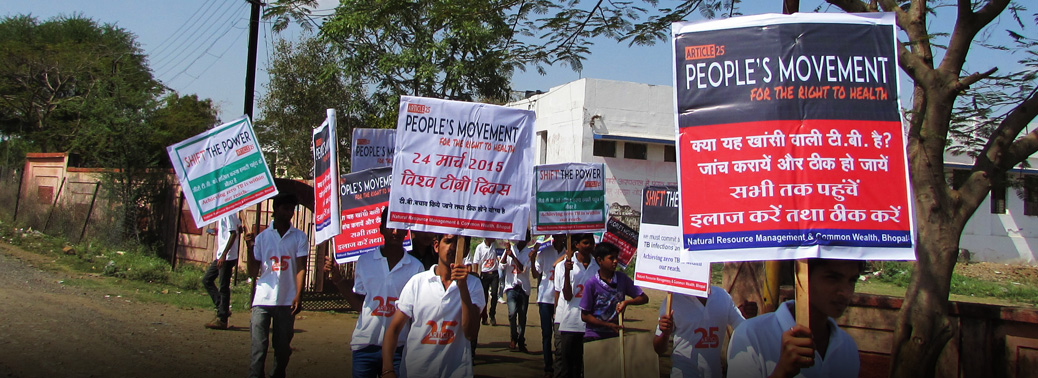
What’s in the Editorial?
- Decades of global neglet have resulted in TB becoming the leading cause of adult death in Global south – it kills nearly two million people a year.
- UN declaration of September 2018 titled “United to end Tuberculosis: An urgent global response to a global epidemic”. Where the heads of state and Government have “reaffirmed their commitment to end the global TB epidemic by 2030”.
Intrusive technologies:
- The Surveillance Technologies has caught the attention of policy makers, for example a plan in India is to implant microchips in people in order to track them and ensure they complete TB treatment.
Drawbacks in Monitoring with New Technologies:
- The DOTS strategy, (Directly observed Treatment) where a victim should report to a health authority has an inherent flaw.
- Because the prevailing treatment made up of toxic drug and painful injections that only works about half the time and often cause disability and Psychosis.
- We mount arsenal of cutting-edge technology to corral people into taking torturous, ineffective drugs even while we fail to use available drugs that work far better.
- Global tuberculosis Report 2018 says, “India accounted for 27% of the 10 million people who developed tuberculosis in 2017, the highest among the top 30 high TB burden countries in the world, according to WHO.
Way forward:
- An obsession with new gadgets In disease management – in the context of a disease that could be eliminated in a relatively in expensible way through human rights based interventions.
The Approach focus on:
- Creating health system that foster trust partnership and dignity this approach regards people with TB not as subjects to be controlled but as people to be partnered with. It assumes that people with TB have dignity, intelligence and empathy that motivate them to act in the best interests of themselves and their communities when empowered to do so.

- New guidelines by the WHO recommend use of bendaquilline and delamanid against drug resistant TB. Money should be spent on these drugs to make affordable rather spending on technology.
- Employ and deploy community health -care worker’s many TB policies envision community health – care worker’s but it reality front-line workers remain shockingly under used.
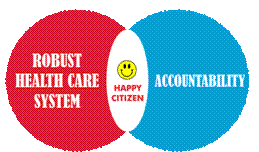
- The TB response can only be good it it has the good health – care system.
- Community – based structures such as “Clinic committees” ensures accountability while fostering partnership and trust between communities and their health – care system.
Conclusion
- People with TB do not need to be watched, they need to be heard, they want what anyone wants, health and dignity.The Shiny allure of surveillance technology threats to distract us from real work of TB response.
ME-TOO Campaign
29, Oct 2018
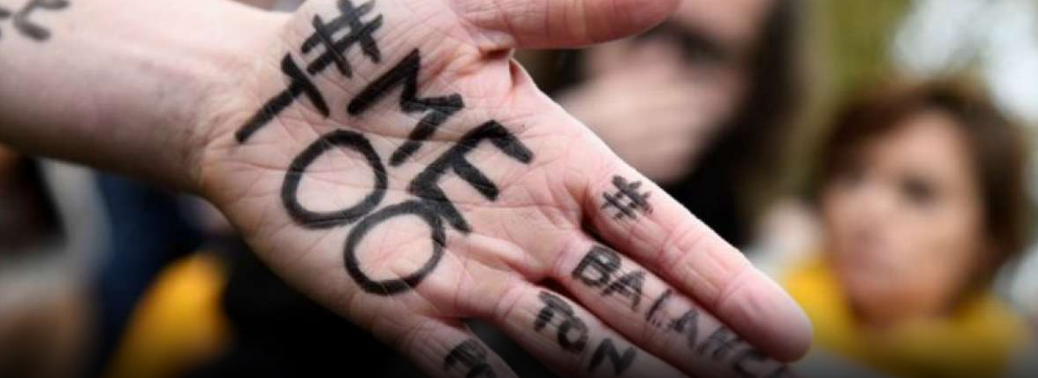
A campaign is under way in Odisha’s migration-prone districts to sensitise migrant women workers about sexual exploitation.
Background:
- Now, 300 women are undergoing an orientation programme in the State that seeks to empower them to raise their voices against any type of sexual exploitation and ensure the safety of accompanying vulnerable adolescent girls.
- The Western Odisha Migration Network, a civil society organisation, with support from organisations such as Aide et Action, Global Alliance Against Traffic in Women and Aaina are working on a database of women migrant worker leaders.
- They have also created a list of potential migrant women and adolescent girls. A register is being introduced in all these six panchayats to track migration of all age groups.
- Sexual exploitation of women migrant workers from Odisha is widely regarded to be pronounced. There have been a number of legal instruments to deal with sexual harassment in the informal sector.
- But their agonising and harrowing ordeal mostly remains under wraps. They often suffer silently with no one to back them or confront their tormenters. As there is no such complaint committee where grievances can be redressed.
- Important helpline numbers are being circulated among women workers for intimation in the event of an exigency. Women as dignified workers have the right to work in a non-exploitative environment outside the State and come back.
SC/ST Quota in job promotions
01, Sep 2018
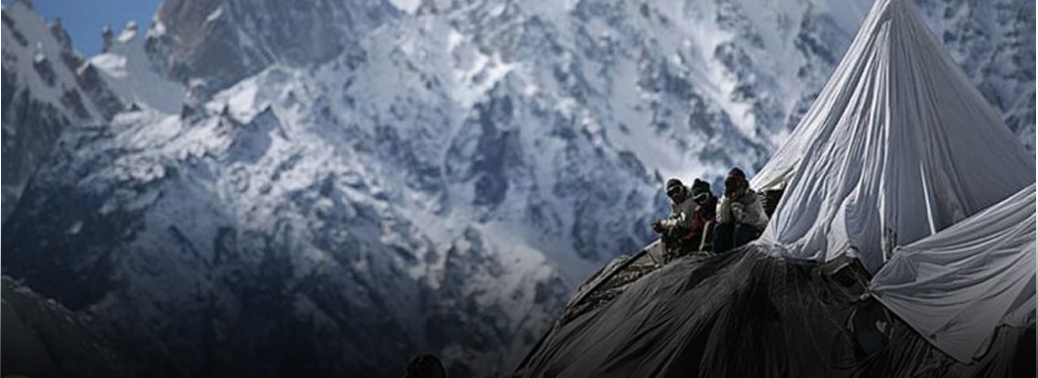
The Supreme Court ruled that states don’t have to collect quantifiable data on ‘backwardness’ for SC/ST quota in job promotions.
About:
- The apex court clarified that there was no need to revisit its 12-year-old verdict in the M Nagaraj case which had said that the states were bound to provide quantifiable data on the backwardness of SC/ST, the facts about their inadequate representation in government jobs and the overall administrative efficiency, before providing them quota in promotions.
- The Supreme Court had paved the way for grant of quota for promotions in the government jobs to SCs and STs, holding that the states were not required to “collect quantifiable data” reflecting the backwardness among these communities.
- The apex court also turned down the Centre’s plea that overall population of SC/ST be considered for granting quota for them.
- The verdict cleared a major hurdle that was cited by the central government in granting reservation in promotion to its employees belonging to the Scheduled Castes (SC) and Scheduled Tribes (ST).
- Judgment was also critical because it upheld the Nagaraj ruling that, while promoting SCs and STs.
- Court held that untouchability, not backwardness is the basis for ST/SC quota in job promotions. As SC and ST communities have been facing caste-based discrimination for long and the stigma of caste is attached to them despite the fact that some of them have come up.
Background:
- The apex court delivered the verdict on a batch of petitions seeking that a seven-judge bench reconsiders the court’s 2006 judgement which had put conditions for granting quota benefits in job promotions for SC/ST employees.
- The bench headed by Chief Justice Dipak Misra said the conclusion arrived at in the Nagaraj case that the states have to collect quantifiable data showing backwardness of SCs and STs was “contrary” to the nine-judge bench judgement in the Indra Sawhney verdict of 1992, popularly known as Mandal Commission case.
Nagaraj V. Union of India
- In the 2006 judgment, the Apex Court had held that it is not mandatory for the State to make reservations for SC/ST in matter of promotions. However, if the State did wish to exercise its discretion, it is supposed to gather quantifiable data showing backwardness of the class and inadequacy of representation of that class in public employment, in addition to compliance with Article 335. • The facts about their inadequate representation in government jobs and the overall administrative efficiency, before providing quota in promotions to members of these communities.
- The State is required to adhere to the ceiling-limit of 50% and abstain from obliterating the creamy layer or extending the reservation indefinitely.
- The Centre has alleged that the verdict in the M Nagraj case had put unnecessary conditions in granting quota benefits to the SC and ST employees and sought its reconsideration by a larger bench.
SC on Section 498A
01, Sep 2018

- The Supreme Court modified its order that provided for setting up of a committee to deal with dowry harassment complaints by protecting the provision of pre-arrest.
About:
- The Supreme Court said there was no need for the guidelines framed by it to restrain immediate arrest of a husband and his relatives in dowry harassment cases without verifying the authenticity of the complaint.
- It observed that seeking sharpness in section 498A, claiming that the otherwise “helpful instrument” in the hands of victim women has become “valueless”.
- The SC said the mechanism to screen anti-dowry complaints through district-level committees was outside provisions of the Indian Penal Code (IPC) and the Code of Criminal Procedure and needed to be scrapped.
- As it was not needed as it amounted to creating an extra jurisdiction by appointing FWCs that were not provided under the IPC.
- How can court frame guidelines for penal provision of Section 498A. It has to be guided as per the Indian Penal Code and the Code of Criminal Procedure, it is the primary task of the police and the judiciary to ensure justice in criminal cases.
- There is no scope for the courts to constitutionally fill up the gaps in penal law. There should be gender justice for women as dowry has a chilling effect on marriage on the one hand, and on the other hand, there is right to life and personal liberty of the man.
- The concern over the “abuse” of section 498 A (subjecting a married woman to cruelty) and passed a slew of directions, including that no arrest should “normally be effected” without verifying allegations as violation of human rights of innocents cannot be brushed aside.
Background:
- In July SC bench had observed that in order to prevent ‘the misuse’ of Section 498A, arrest of every individual without a preliminary inquiry is not possible.
- That led to formation of three-member family welfare committee in every district will scrutinise dowry harassment cases before the local police can arrest the accused. Only if the committee saw reason in the complaint, then the husband and his relatives involved in dowry harassment would be arrested.
- It had said such complaints received by the police or a magistrate be referred to the committee and no action be taken till the committee gave its report after interacting with the parties.
- Because it cannot be denied that there are several instances of women misusing Section 498A of the Indian penal code, under the aegis of which a man and his family, if named in a dowry harassment case, will be immediately arrested.
- SC recorded that data from a National Crime Records Bureau’s 2012 report shows that while charge-sheets were filed for 93.6% of registered dowry cases, only 14.4% ended in convictions.
- The report projected that out of the 3,72,706 cases pending trial in 2012, as many as 3,17,000 were projected to lead to acquittals. Data also shows that about 25% of all arrests under Section 498A are women – mothers and sisters of husbands. There has been much discussion on the subject of women described as “disgruntled” misusing the Section to punish or exact revenge from their spouses and his family.
Significance:
- In a deeply patriarchal society, even in the higher economic strata, eligible men are seen as potential earners in the transaction of marriage. Fathers of daughters are forced to “gift” money, gold, cars, etc for the favour of a man agreeing to marry their daughters. It must also be noted that the conviction rates for other crimes such as murder are also very low (some estimates suggest that murder convictions are less than 20%). Therefore, it would be prudent to be careful before assuming that every woman complaining about an abusive family or dowry harassment is “disgruntled” or wishes to exact revenge.
- Such women find it very difficult to even move on from the trauma of their lives; and society must take steps to ensure that these women have the support and legal help they need to escape the abuse that they face at home.
- It must be kept in mind that there are many, many cases still in India of dowry harassment, and many that even lead to the death of the woman.
Uniform Civil Code
01, Sep 2018

- Law commission submitted a report on uniform civil code.
- In June 2016 through a reference by the Government of India, the Law Commission was entrusted with the task of addressing the issues concerning a uniform civil code.
Uniform Civil Code
- Article 44 of constitution of India provides Uniform Civil Code for the citizens – “The state shall endeavour to secure for the citizens a Uniform Civil Code throughout the territory of India”.
- Uniform civil code in India is a term referring to the concept of an overarching civil law code in India. This displaces the right of citizens to be governed under different personal laws which exist in the society
Subject’s under Personal Law:
- Marriage and divorce Compulsory Registration of Marriages, Adultery, Age of Consent for Marriage.
- Grounds for Divorce, Community of Property upon Divorce and Maintenance, Presumption of Marriage for Cohabiting Couples, Polygamy.
- CUSTODY AND GUARDIANSHIP of children, Natural Guardian of Adoptive son, Inheritance Rights of the Adopted Child.
- INHERITANCE AND SUCCESSION, Rights of females related to agricultural land.
- Inheritance rights of illegitimate children.
Merits of UCC:
- Various aspect of prevailing personal laws deprivilege women.
- Codification of discriminatory custom regardless of how commonly acceptable they may be, can lead to crystallisation of prejudices or stereotypes.
- The practices which do not conform with basic tenets of human rights are nor are they essential to religion so it should be changed. The main aim of U.C.C is to unite all Indians irrespective of religion, caste and also gender. Most of the persons wants this U.C.C for uniting the minds of different religion
- Presence of different personal laws creates a clouded atmosphere of confusion and is also hard to follow.
Current System:
- The sixth schedule of the constitution of India provides certain protections to a number of states. While some tribal laws in fact protect matriarchal systems of family organisations some of these also preserve provisions which are not in the interest of women. There are further provisions that allow for complete autonomy on matter of family law which can also be adjudicated by the local panchayats which once again, follow their own procedures.
- Different personal laws govern the institutions like marriage, inheritance, divorce etc.,
Against:
- A common Civil Code will help the cause of national integration by removing disparate loyalties to laws which have conflicting ideologies.
- Main issue lies in the fact that its implementation of a country of diverse cultural diversity would be virtually impossible.
- Uniform Civil Code is divisive and will lead to social unrest, and that It is against the spirit of the Constitution, which safeguards the right of citizens to practice their culture and religion,
Barriers:
- The first foreseeable problem with feasibility is with respect to the sixth schedule of the Constitution. Articles 371 (A) to (I) and the sixth schedule of the constitution of India provides certain protections or rather exceptions to the states of Assam, Nagaland, Mizoram, Andhra Pradesh and Goa with respect to family law. • There is no consensus among different stakeholders.
- No proper guiding principle of what is UCC.
- Vote bank politics makes it difficult to implement.
Way Forward:
- In order to address this inequality, the commission has suggested a range of amendments to existing family laws and also suggested codification of certain aspects of personal laws so as to limit the ambiguity in interpretation and application of these personal laws.
- The best way forward may be to preserve the diversity of personal laws but at the same time ensure that personal laws do not contradict fundamental rights guaranteed under the Constitution of India.
- The legislature should first consider guaranteeing equality within communities ‘between men and women, rather than equality between ‘communities.
- Different laws must be codified over time for various communities to slowly align them with constitutional values. While diversity of Indian culture can and should be celebrated, specific groups, or weaker sections of the society must not be dis-privileged in the process.
- It is the State which entrusted with the duty of securing a uniform civil code for the citizens of the country and, unquestionably, it has the legislative competence to do so. A beginning has to be made if the Constitution is to have any meaning.
- No legal change can satisfy all sections of the society but that does not mean that legislative changes should not be contemplated.
- While there is certainly a desire for change, there is also equally a need to acknowledge the hindrances to any endeavours to institute a uniform civil code.
- It is important to strengthen the local initiatives that are bringing about piecemeal changes.
- The efforts of Non-Government Organisations that are working towards creating awareness about UCC must be encouraged
- The conversation and debates have to begin on the uniform civil code which focus on family laws of all religions and the diversity of customary practices, to address social injustice rather than plurality of laws.
Conclusion:
- The recent Supreme Court judgment Shayara Bano v. Union of India outlawing the practice of triple talaq has taken a first step towards ending personal law practices that are discriminatory towards women but largely on the premise that triple talaq is also not an essential practice of Islam suggesting that bad in theology cannot be good in law.
- Taking this as initiative government should move towards achieving UCC. Thus, while framing a law it has to be borne in mind and cultural diversity cannot be compromised to the extent that our urge for uniformity itself becomes a reason for threat to the territorial integrity of the nation.
India’s new compensatory afforestation rules dilute rights of Forest dwellers
11, Aug 2018

- India’s environment ministry has notified the Compensatory Afforestation Fund (CAF) Rules 2018 to ensure proper utilisation of Rs 660 billion for plantation of trees across India.
Background:
- The Rules had been pending since the government passed the Compensatory Afforestation Fund (CAF) Act on July 28, 2016.
- They govern the utilisation of the Compensatory Afforestation Fund.
Provisions:
- The Compensatory Afforestation Fund (CAF) Rules, 2018 in which the Gram Sabha no longer plays a key role and control of over Rs. 660 billion, to be spent on afforestation, is given in the hands of the forest bureaucracy.
- It states that at least 80 percent of the fund shall be used for activities like “assisted natural regeneration, artificial regeneration, silvicultural operations in forests, protection of plantations and forests, pest and disease control in forest, forest fire prevention and control operations, soil and moisture conservation work in the forest, voluntary relocation of villages from protected areas and improvement of wildlife habitat.
- The remaining 20 percent will be used for strengthening of the forest and wildlife-related infrastructure and capacity building of the personnel.
- The rules also specified a list of activities that can be undertaken or are not allowed from the fund.
- The rules also said that these activities will be taken up in consultation with the Gram Sabha or the Village Forest Management Committee (VFMC), as the case may be, and shall be in consonance with the FRA 2006.
Drawbacks:
- Rules don’t have provision for getting consent of the Gram Sabhas (only mention consultation) and provision for transferring funds to the Gram Sabha.
- There is a difference between consultation and consent. Moreover, VFCs aren’t statutory bodies. The Forest Rights Act (FRA) gives rights to the Gram Sabha and this is in violation of that law.
- The rules ignore the rights of forest dwellers and tribal. They also said that the new CAF rules are against existing laws ensuring forest rights and self-governance for communities living in Scheduled Areas.
- The Rules do not take The Provisions of the Panchayats (Extension to Scheduled Areas) Act, 1996 (PESA) into consideration.
- The rules are clearly a deliberate attempt to bypass the FRA(Forest Right Act) entirely.
- There is no reference to consent, no reference to what forms of proof will be required that it has been done, and no reference to completion of recognition of rights.
- The rules do not talk about compensation when diversion is done on CFR area. In these areas, the CAF should be given to the Gram Sabha’s because they have the right over the area’s resources under FRA.
Way Forward:
- The Rules should be implemented through the Gram Sabha and not the Van Sanrakshan Samiti under Joint Forest Management.
- There should be Gram Sabha auditing. Transparency and accountability should be mandatory and the forest department should be answerable to the Gram Sabha. Local species should be planted in compensatory afforestation process. Artificial regeneration must not be allowed and provisions should be made by Gram Sabha’s to select species.
Disclose Panels on Sexual Harassment
10, Aug 2018

The Centre has made it mandatory for companies to disclose whether they have constituted an internal complaint committee (ICC) to probe such allegations.
Background:
- The members of the committees and women employees remain unaware of the provisions of the act and hesitant to assert themselves in registering complaints or fighting for more women-friendly work structures.
Amendment to company (accounts) rules 2014:
- The Corporate Affairs Ministry has amended the Companies (Accounts) Rules, 2014, governed by the Companies Act, 2013, mandating the disclosure.
- Under the Sexual Harassment at Workplace Act, it is mandatory for any organisation with 10 or more employees to constitute an ICC. An employer who doesn’t do so could face a fine of up to Rs. 50,000.
- An ICC should consist of a presiding officer, who is a woman employee at a senior level in the same organisation, at least two employees “preferably committed to the cause of women”, and a member from an NGO or a person “familiar with issues relating to sexual harassment.”
- The committee would have powers similar to those of a civil court and would have to complete its inquiry within 90 days.
Way Forward:
- The complaint process is still ineffective in nature, a Complaint Committee was not constituted for the redressal of the complaint made by the victim.
- Secondly, the risk of retaliation is high if a victim opposes the unwelcome sexual acts
- Thirdly, there are several obstacles that the victim faces while filing a complaint which may include constituting internal committees, to unfair practices within committees and other incidental problems.
- In order to ensure better implementation of the law against sexual harassment at workplace the implementation problems need to be addressed.
Special Remission for Prisoner
07, Jul 2018
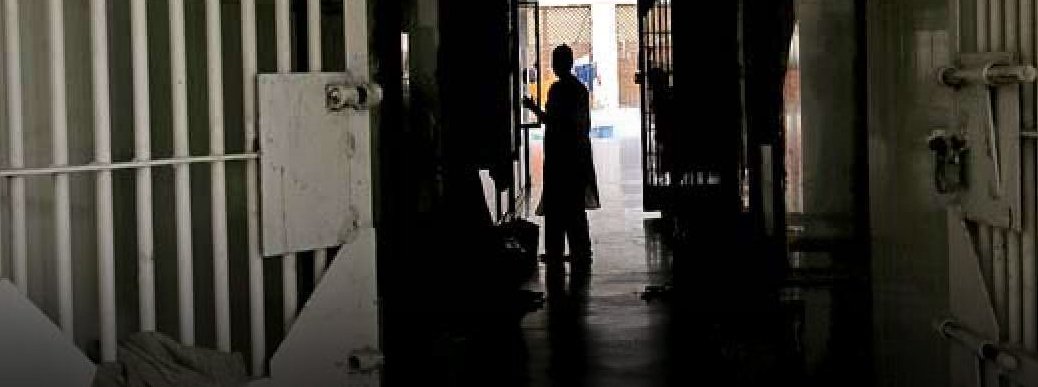
- On the occasion of Mahatma Gandhi’s 150th birth anniversary, the cabinet decided to release the prisoners on special remission.
- Women and transgender convicts above 55 and male convicts over 60 who have completed half of their prison sentences will be released under an amnesty scheme.
- Physically challenged convicts with 70% disability and more who have completed half of their jail term terminally ill convicts and prisoners who have completed two-third of their actual sentence will also be released.
- However prison convicted under dowry death, rape, human trafficking, POTA, UAPA, TADA, money laundering and FEMA will not be covered. Also special remission will not be given to prisoners sente3nced to death or whose sentence has been commuted to life imprisonment.
Sabarimala Case
06, Jul 2018
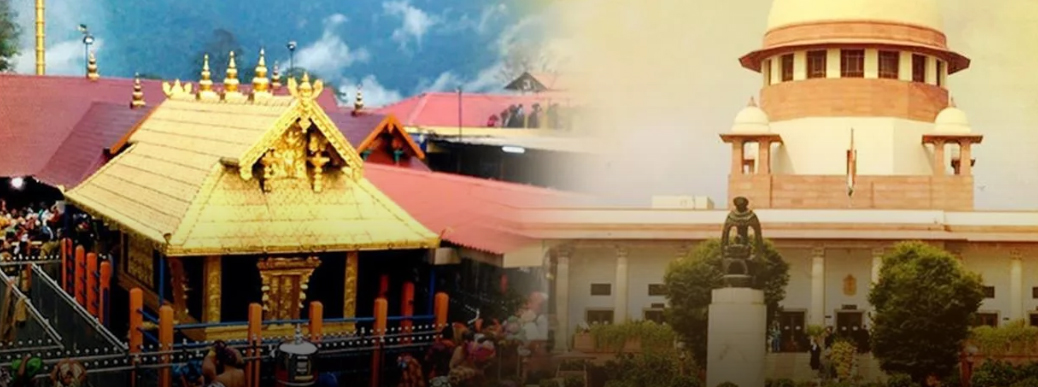
The Supreme court ruled that women have the right to enter and pray at the Sabarimala Temple in Kerala, as the fundamental right of religious freedom that is provided to “all persons” by the Constitution.
History of the case:
- 1991- HC of Kerala upheld the state’s ban on Menstruating women from entering the temple.
- 2006- A PIL against the Kerala HC order was filed by the Indian Young Lawyers Association, contending the ban violated constitutional rights of women.
- 2016-The Devaswom said, There is a reasonable classification by which certain class of women are excluded. The SC enquired if the defence was implying that menstruation was associated with purity of women.
- 2017- The SC referred the Sabarimala case to the Constitution Bench.
Issues related:
- The exclusionary practice which is based upon a biological factor exclusive to the female gender amounts to ‘discrimination’ and thereby violates the very core of Articles 14, 15 and 17 and not protected by ‘morality’ as used in Articles 25 and 26 of the Constitution.
- The management of the Sabarimala temple had earlier told the apex court that the ban on entry of women aged between 10 and 50 years was because they cannot maintain “purity” on account of menstruation.
- The second issue referred to the constitution bench is whether the practice of excluding such women constitutes an “essential religious practice” under Article 25 of the Constitution and whether a religious institution can assert a claim in that regard under the umbrella of right to manage its own affairs in the matters of religion.
- The constitution bench would also deal with whether the Ayyappa temple has a denominational character and “if so, is it permissible on the part of a ‘religious denomination’ managed by a statutory board and financed under Article 290-A of the Constitution out of Consolidated Fund of Kerala and Tamil Nadu to indulge in such practice violating constitutional principles/morality embedded in Articles 14, 15(3), 39(a) and 51-A(e)”.
- The apex court had framed another question as to whether Rule 3 of Kerala Hindu Places of Public Worship (Authorisation of Entry) Rules permits ‘religious denomination’ to ban entry of women between the age of 10 to 50 years.
- “And if so, would it not play foul of Articles 14 and 15 (3) of the Constitution by restricting entry of women on the ground of sex,” it had said.
- Rule 3 (b) of the Kerala Hindu Places of Public Worship (Authorisation of Entry) Rules, 1965 says that “women at such time during which they are not by custom and usage allowed to enter a place of public worship shall be included in the class of persons who shall not be entitled to offer worship in any place of worship.”
- It had also raised the question whether this rule is ultra vires the Kerala Hindu Places of Public Worship (Authorisation of Entry) Act, 1965 and, “if treated to be intra vires, whether it will be violative of the provisions of Part III of the Constitution.
Sabarimala temple:
- The temple is located at the Periyar Tiger Reserve on a hilltop in the Western Ghats of Pathanamthitta district.
- The pilgrimage to the temple is one of the largest annual pilgrimages in the world. Over 45–50 million devotees visit the Hindu temple every year.
- The Ayyappa temple is open for worship only during Mandala pooja – 15 November to 26 December.
Net Neutrality
04, Jul 2018

The government approved the principles on net neutrality. Telecom Commission has accepted the recommendations made by regulatory body TRAI on Net Neutrality.
The move will ensure internet service providers and platforms treat all data as equal.
What:
Net neutrality is the principle that individuals should be free to access all content and applications equally, regardless of the source, without Internet Service Providers discriminating against specific online services or websites. Without giving preferential treatment to certain sites or services.
It is the principle that the company that connects you to the internet does not get to control what you do on the internet.
Merits:
- Without net neutrality rules in place, ISP(Internet Service Provider)can prevent users from visiting some websites, provide slower speeds for some services, or even redirect users from one website to a competing website.
- Network neutrality keeps the barriers to entry for new websites and internet applications low. network neutrality is a big reason there has been so much innovation on the internet over the last two decades.
- In the absence of net neutrality, companies can buy priority access to ISP customers. Larger, wealthier companies like Google or Facebook can pay ISPs to provide faster, more reliable access to their websites than to others. This could deter innovative start-up services that are unable to purchase priority access from the ISPs.
- If ISPs can charge online services to connect to consumers, consumers would ultimately bear these additional costs
- It protects freedom of expression. Without net neutrality, ISPs could potentially censor slanderous content or even content they do not agree with.
- Companies can continue to innovate. In the past, companies started and grew on an equal playing field. With net neutrality, big companies and small start-up’s will have access to the same resources and capabilities, allowing innovation of products and services.
- Without a neutral net, access providers can prioritise applications or services, thereby creating “walled gardens” in which consumer choice is limited.
- Net Neutrality improves the quality of democracy by ensuring that the Internet remains an open forum in which all voices are treated equally. It ensures that the ability to voice opinions and place content online does not depend on one’s financial capacity or social status. It is therefore a powerful tool in facilitating democracy, enabling diverse ideas to be expressed and heard.
Demerits:
- It will lead to excessive regulation of the internet
- But that regulations could be counterproductive, discouraging investment in internet infrastructure and limiting the flexibility of ISPs themselves to innovate.
- Requiring networks to treat all traffic the same could discourage beneficial innovation by network owners.
- some applications (such as voice calling and online games) are particularly sensitive to delays in delivering data. Internet users might benefit if companies could pay a premium to ensure that this applications are given priority.
- It will be too difficult to craft clear and effective network neutrality rules. The internet is complex and changes quickly
- Free internet access would likely go away. The idea of providing free internet access to those who cannot afford it goes away.
- Porn and objectionable content thrives there are plenty of security vendors who allow families to restrict the sites available on a family computer, more children have smartphones and connected devices with which they can get online without adult supervision. If an internet service provider could block these services at a network-wide level, this would go a long way to solving this issue.
Internet is as essential to the modern lifestyle as water and power. Expanding Internet access is the top priority for India. This is the reason that most of the big announcements of present government like Digital India, E-Governance. Modi’s visit to Silicon Valley were in this domain – public commitments made by Microsoft and Google to connect villages and railway stations. It will be possible by shifting costs to content providers who enter into exclusive contracts with data providers.
Digital access is now linked to the basics like Subsidies and rations, identification, financial inclusion and political participation. Such an arrangement could expand internet use rapidly in a country. In this scenario Net Neutrality is at most important for country like India.






